#robert walter's 20th congress
Explore tagged Tumblr posts
Text
youtube
🎵 Most of All of Us
💿 Spacesuit
👤 Robert Walter’s 20th Congress
🔗 Apple Music / Spotify
0 notes
Text
'Groves’ role as director of the Manhattan Project makes him one of the most significant figures in Nolan’s three-hour epic Oppenheimer. Although Groves is best known for overseeing the Manhattan Project and the creation of the atomic bomb, those aren't the only significant parts of his legacy. Groves' military career continued beyond the events of the movie Oppenheimer, and the director racked up other accomplishments during his later years, too.
Leslie Groves Worked For AFSWP After The Manhattan Project
After his involvement in the Manhattan Project during World War II, Groves continued managing the United States’ nuclear weaponry. One of his chief concerns was losing the wartime knowledge of handling and maintaining nuclear weapons after soldiers and scientists returned to peacetime work. Because of this, he requested 50 high-quality personnel in the top 10 percent of their classes to replace those who were lost. These individuals worked with the remaining scientists on the project, but the former Manhattan Project director hoped for a more permanent solution. This eventually arrived in the form of the Armed Forces Special Weapons Project (AFSWP).
In 1947, Groves was appointed as chief of the AFSWP, where he oversaw the aspects of nuclear weaponry that were controlled by the military. Groves' reluctance to compromise gave higher-ups reservations about giving him the role. However, he proved instrumental to the genesis and early days of the AFSWP. Groves served as chief of the AFSWP from 1947 to 1948, when he decided to retire from the U.S. Army.
Leslie Groves Retired From The Army In 1948
Unfortunately, the concerns about Groves being a good fit for chief of the AFSWP wound up being well-founded. When the General of the Army, future U.S. President Dwight D. Eisenhower, gave Groves a performance review in January 1948, he reported several complaints about Groves’ conduct and attitude as chief. During this dressing-down, Eisenhower dashed Groves’ hopes of ever becoming Chief of Engineers. Groves realized that in the shrinking postwar military, he would likely never get another assignment as important as the Manhattan Project. Three days after the meeting with Eisenhower, Groves announced his intention to retire from the Army.
Groves officially retired from the U.S. Army a month later, in February 1948, following 30 years of service. Right before his retirement, he received an honorary promotion to lieutenant general as special recognition for overseeing the bomb project. By a special Act of Congress, Groves’ promotion to lieutenant general was backdated to July 16, 1945, the date of the Trinity nuclear test. This promotion cemented Groves’ decorated military career, as well as his commitment to the U.S. military during World War II.
Leslie Groves Died In 1970, 3 Years After Oppenheimer
After retiring from the U.S. Army, Groves expanded his career by becoming vice president of the manufacturing company Sperry Rand. He also wrote a book titled Now It Can Be Told: The Story of the Manhattan Project, which details his and Oppenheimer's work on the atomic bomb. Following these accomplishments, Groves passed away in 1970. On July 13 that year, Groves had a heart attack. He was rushed to Walter Reed Army Medical Center, where he died at the age of 73. His funeral service took place in Fort Myer, Virginia, and he was buried at Arlington Cemetery in Washington D.C. Groves' grave is next to his brother Allen's.
Groves’ death came three years after the death of his former Manhattan Project colleague, J. Robert Oppenheimer (played by Cillian Murphy in the Nolan movie). Oppenheimer died on February 18, 1967, at the age of 62. His death came on the heels of a battle with throat cancer. Despite Oppenheimer's and Groves’ deaths during the second half of the 20th century, Nolan’s Oppenheimer ensures that the men’s legacies and roles in U.S. history will not be forgotten.'
0 notes
Text
New Audio: Eddie Roberts, Adam Deitch and Robert Walter Team up with Nick Gerlach on a Funky and Strutting Bop
New Audio: Eddie Roberts, Adam Deitch and Robert Walter Team up with Nick Gerlach on a Funky and Strutting Bop @Roughneck_Music @RealDeitchBeats @B3RobertWalter @colorredmusic
https://soundcloud.com/wrdtrio/chum-city-feat-adam-deitch WRD Trio is a dynamic and gritty organ trio that features three highly accomplished bandleaders and musicians: Leeds-born, Denver-based New Mastersounds founder, solo artist, collaborator, producer and Color Red Music co-founder Eddie Roberts (guitar). As either a member of New Mastersounds, a sideman, solo artist and/or producer,…
View On WordPress
#Adam Deitch#Break Science#Chum City#Color Red Music#Denver CO#funk#instrumental#Leeds UK#Lettuce#New Audio#New Mastersounds#New Orleans Jazz Fest#New Orleans LA#New Single#Robert Walter#Robert Walter&039;s 20th Congress#Royal Family Records#San Diego CA#Single Review#Single Review: Chum City#Single Review: WRD Trio Chum City#The Greyboy Allstars#The Twin Cats#WRD Trio#WRD Trio Chum City#WRD Trio The Hit
2 notes
·
View notes
Text
HAVE SPACESUIT—WILL TRAVEL
Ordering a book from the dreaded ‘Big River’ company, I was lured by the ‘on your list’ bait and, of course, bit. The item was a CD I’d removed from an order months ago, something that had caught my attention but not fully hooked me in. On a whim, I added it to the cart; it was cheap and I am probably down to 79 hours of music yet to be played. The book arrived yesterday; so did the CD. The album…

View On WordPress
1 note
·
View note
Text
The Brutalism Post Part 3: What is Brutalism? Act 1, Scene 1: The Young Smithsons
What is Brutalism? To put it concisely, Brutalism was a substyle of modernist architecture that originated in Europe during the 1950s and declined by the 1970s, known for its extensive use of reinforced concrete. Because this, of course, is an unsatisfying answer, I am going to instead tell you a story about two young people, sandwiched between two soon-to-be warring generations in architecture, who were simultaneously deeply precocious and unlucky.
It seems that in 20th century architecture there was always a power couple. American mid-century modernism had Charles and Ray Eames. Postmodernism had Robert Venturi and Denise Scott Brown. Brutalism had Alison and Peter Smithson, henceforth referred to simply as the Smithsons.
If you read any of the accounts of the Smithsons’ contemporaries (such as The New Brutalism by critic-historian Reyner Banham) one characteristic of the pair is constantly reiterated: at the time of their rise to fame in British and international architecture circles, the Smithsons were young. In fact, in the early 1950s, both had only recently completed architecture school at Durham University. Alison, who was five years younger, was graduating around the same time as Peter, whose studies were interrupted by the Second World War, during which he served as an engineer in India.

Alison and Peter Smithson. Image via Open.edu
At the time of the Smithsons graduation, they were leaving architecture school at a time when the upheaval the war caused in British society could still be deeply felt. Air raids had destroyed hundreds of thousands of units of housing, cultural sites and had traumatized a generation of Britons. Faced with an end to wartime international trade pacts, Britain’s financial situation was dire, and austerity prevailed in the 1940s despite the expansion of the social safety net. It was an uncertain time to be coming up in the arts, pinned at the same time between a war-torn Europe and the prosperous horizon of the 1950s.
Alison and Peter married in 1949, shortly after graduation, and, like many newly trained architects of the time, went to work for the British government, in the Smithsons’ case, the London City Council. The LCC was, in the wake of the social democratic reforms (such as the National Health Service) and Keynesian economic policies of a strong Labour government, enjoying an expanded range in power. Of particular interest to the Smithsons were the areas of city planning and council housing, two subjects that would become central to their careers.
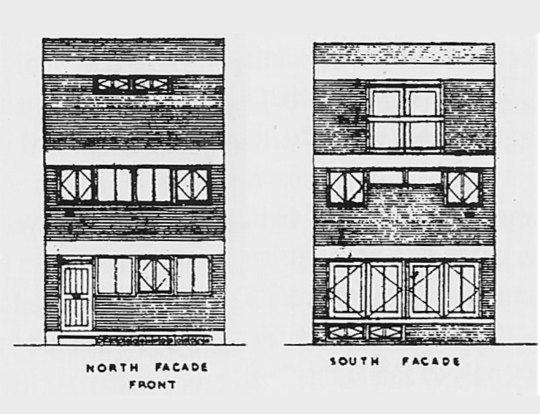
Alison and Peter Smithson, elevations for their Soho House (described as “a house for a society that had nothing”, 1953). Image via socks-studio.
The State of British Architecture
The Smithsons, architecturally, ideologically, and aesthetically, were at the mercy of a rift in modernist architecture, the development of which was significantly disrupted by the war. The war had displaced many of its great masters, including luminaries such as the founders of the Bauhaus: Walter Gropius, Ludwig Mies van der Rohe, and Marcel Breuer. Britain, which was one of the slowest to adopt modernism, did not benefit as much from this diaspora as the US.
At the time of the Smithsons entry into the architectural bureaucracy, the country owed more of its architectural underpinnings to the British architects of the nineteenth century (notably the utopian socialist William Morris), precedent studies of the influences of classical architecture (especially Palladio) under the auspices of historians like Nikolaus Pevsner, as well as a preoccupation with both British and Scandinavian vernacular architecture, in a populist bent underpinned by a turn towards social democracy. This style of architecture was known as the New Humanism.

Alton East Houses by the London County Council Department of Architecture (1953-6), an example of New Humanist architecture. Image taken from The New Brutalism by Reyner Banham.
This was somewhat of a sticky situation, for the young Smithsons who, through their more recent schooling, were, unlike their elders, awed by the buildings and writing of the European modernists. The dramatic ideas for the transformation of cities as laid out by the manifestos of the CIAM (International Congresses for Modern Architecture) organized by Le Corbusier (whose book Towards a New Architecture was hugely influential at the time) and the historian-theorist Sigfried Giedion, offered visions of social transformation that allured many British architects, but especially the impassioned and idealistic Smithsons.
Of particular contribution to the legacy of the development of Brutalism was Le Corbusier, who, by the 1950s was entering the late period of his career which characterized by his use of raw concrete (in his words, béton brut), and sculptural architectural forms. The building du jour for young architects (such as Peter and Alison) was the Unité d’Habitation (1948-54), the sprawling massive housing project in Marseilles, France, that united Le Corbusier’s urban theories of dense, centralized living, his architectural dogma as laid out in Towards a New Architecture, and the embrace of the rawness and coarseness of concrete as a material, accentuated by the impression of the wooden board used to shape it into Corb’s looming, sweeping forms.

The Unité d’habitation by Le Corbusier. Image via Iantomferry (CC BY-SA 4.0)
Little did the Smithsons know that they, mere post-graduates, would have an immensely disruptive impact on the institutions they at this time so deeply admired. For now, the couple was on the eve of their first big break, their ticket out of the nation’s bureaucracy and into the limelight.
The Hunstanton School
An important post-war program, the one that gave the Smithsons their international debut, was the expansion of the British school system in 1944, particularly the establishment of the tripartite school system, which split students older than 11 into grammar schools (high schools) and secondary modern schools (technical schools). This, inevitably, stimulated a swath of school building throughout the country. There were several national competitions for architects wanting to design the new schools, and the Smithsons, eager to get their hands on a first project, gleefully applied.
For their inspiration, the Smithsons turned to Mies van der Rohe, who had recently emigrated to the United States and release to the architectural press, details of his now-famous Crown Hall of the Illinois Institute of Technology (1950). Mies’ use of steel, once relegated to being hidden as an internal structural material, could, thanks to laxness in the fire code in the state of Illinois, be exposed, transforming into an articulated, external structural material.
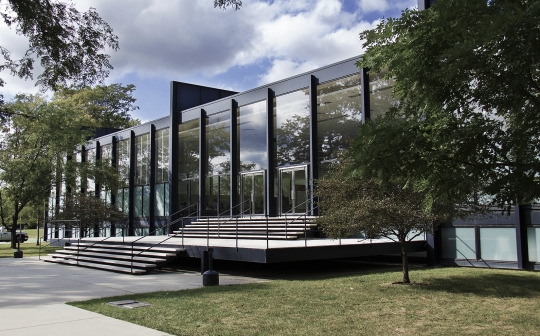
Crown Hall, Illinois Institute of Technology by Mies van der Rohe. Image via Arturo Duarte Jr. (CC BY-SA 3.0)
Of particular importance was the famous “Mies Corner,” consisting of two joined exposed I-beams that elegantly elided inherent problems in how to join together the raw, skeletal framing of steel and the revealing translucence of curtain-wall glass. This building, seen only through photographs by our young architects, opened up within them the possibility of both the modernist expression of a structure’s inherent function, but also as testimony to the aesthetic power of raw building materials as surfaces as well as structure.
The Smithsons, in a rather bold move for such young architects, decided to enter into a particularly contested competition for a new secondary school in Norfolk. They designed a school based on a Miesian steel-framed design of which the structural elements would all be visible. Its plan was crafted to the utmost standards of rationalist economy; its form, unlike the horizontal endlessness of Mies’ IIT, is neatly packaged into separate volumes arranged in a symmetrical way. But what was most important was the use of materials, the rawness of which is captured in the words of Reyner Banham:
“Wherever one stands within the school one sees its actual structural materials exposed, without plaster and frequently without paint. The electrical conduits, pipe-runs, and other services are exposed with equal frankness. This, indeed, is an attempt to make architecture out of the relationships of brute materials, but it is done with the very greatest self-denying restraint.”
Much to the upset and shock of the more conservative and romanticist British architectural establishment, the Smithsons’ design won.



Hunstanton School by Alison and Peter Smithson (1949-54). Photos by Anna Armstrong. (CC BY NC-SA 3.0)
The Hunstanton School, had, as much was possible in those days, gone viral in the architectural press, and very quickly catapulted the Smithsons to international fame as the precocious children of post-war Britain. Soon after, the term the Smithsons would claim as their own, Brutalism, too entered the general architectural consciousness. (By the early 1950s, the term was already escaping from its national borders and being applied to similar projects and work that emphasized raw materials and structural expression.)
The New Brutalism
So what was this New Brutalism?
The Smithsons had, even before the construction of the Hunstanton School had been finished, begun to draft amongst themselves a concept called the New Brutalism. Like many terms in art, “Brutalism” began as a joke that soon became very serious. The term New Brutalism, according to Banham, came from an in-joke amongst the Swedish architects Hans Asplund, Bengt Edman and Lennart Holm in 1950s, about drawings the latter two had drawn for a house. This had spread to England through the Swedes’ English friends, the architects Oliver Cox and Graeme Shankland, who leaked it to the Architectural Association and the Architect’s Department of the London County Council, at which Alison and Peter Smithson were still employed. According to Banham, the term had already acquired a colloquial meaning:
“Whatever Asplund meant by it, the Cox-Shankland connection seem to have used it almost exclusively to mean Modern Architecture of the more pure forms then current, especially the work of Mies van der Rohe. The most obstinate protagonists of that type of architecture at the time in London were Alison and Peter Smithson, designers of the Miesian school at Hunstanton, which is generally taken to be the first Brutalist building.”
(This is supplicated by an anecdote of how the term stuck partially because Peter was called Brutus by his peers because he bore resemblance to Roman busts of the hero, and Brutalism was a joining of “Brutus plus Alison,” which is deeply cute.)
The Smithsons began to explore the art world for corollaries to their raw, material-driven architecture. They found kindred souls in the photographer Nigel Henderson and the sculptor Edouardo Paolozzi, with whom the couple curated an exhibition called “Parallel of Life and Art.” The Smithsons were beginning to find in their work a sort of populism, regarding the untamed, almost anthropological rough textures and assemblies of materials, which the historian Kenneth Frampton jokingly called ‘the peoples’ detailing.’ Frampton described the exhibit, of which few photographs remain, as thus:
“Drawn from news photos and arcane archaeological, anthropological, and zoological sources, many of these images [quoting Banham] ‘offered scenes of violence and distorted or anti-aesthetic views of the human figure, and all had a coarse grainy texture which was clearly regarded by the collaborators as one of their main virtues’. There was something decidedly existential about an exhibition that insisted on viewing the world as a landscape laid waste by war, decay, and disease – beneath whose ashen layers one could still find traces of life, albeing microscopic, pulsating within the ruins…the distant past and the immediate future fused into one. Thus the pavilion patio was furnished not only with an old wheel and a toy aeroplane but also with a television set. In brief, within a decayed and ravaged (i.e. bombed out) urban fabric, the ‘affluence’ of a mobile consumerism was already being envisaged, and moreover welcomed, as the life substance of a new industrial vernacular.”

Alison and Peter Smithson, Nigel Henderson, Eduoardo Paolozzi, Parallels in Life and Art. Image via the Tate Modern, 2011.
A Clash on the Horizon
The Smithsons, it is important to remember, were part of a generation both haunted by war and tantalized by the car and consumer culture of the emerging 1950s. Ideologically they were sandwiched between the twilight years of British socialism and the allure of a consumerist populism informed by fast cars and good living, and this made their work and their ideology rife with contradiction and tension.
The tension between proletarian, primitivist, anthropological elements as expressed in coarse, raw, materials and the allure of the technological utopia dreamed up by modernists a generation earlier, combined with the changing political climate of post-war Britain, resulted in a mix of idealism and post-socialist thought. This hybridized an new school appeal to a better life - made possible by technology, the emerging financial accessibility of consumer culture, the promises of easily replicable, luxurious living promised by modernist architecture - with the old-school, quintessentially British populist consideration for the anthropological complexity of urban, working class life. This is what the Smithsons alluded to when they insisted early on that Brutalism was an “ethic, not an aesthetic.”

Model of the Plan Voisin for Paris by Le Corbusier displayed at the Nouveau Esprit Pavilion (1925) via Wikipedia (CC BY-SA 4.0)
By the time the Smithsons entered the international architectural scene, their modernist forefathers were already beginning to age, becoming more stylistically flexible, nuanced, and less reliant upon the strictness and ideology of their previous dogmas. The younger generation, including the Smithsons, were, in their rose-tinted idealism, beginning to feel like the old masters were abandoning their original ethos, or, in the case of other youngsters such as the Dutch architect Aldo van Eyck, were beginning to question the validity of such concepts as the Plan Voisin, Le Corbusier’s urbanist doctrine of dense housing development surrounded by green space and accessible by the alluring future of car culture.
These youngsters were beginning to get to know each other, meeting amongst themselves at the CIAM – the International Congresses of Modern Architecture – the most important gathering of modernist architects in the world. Modern architecture as a movement was on a generational crash course that would cause an immense rift in architectural thought, practice, and history. But this is a tale for our next installment.
Like many works and ideas of young people, the nascent New Brutalism was ill-formed; still feeling for its niche beyond a mere aesthetic dominated by the honesty of building materials and a populism trying to reconcile consumerist technology and proletarian anthropology. This is where we leave our young Smithsons: riding the wave of success of their first project as a new firm, completely unaware of what is to come: the rift their New Brutalism would tear through the architectural discourse both then and now.
If you like this post, and want to see more like it, consider supporting me on Patreon!
There is a whole new slate of Patreon rewards, including: good house of the month, an exclusive Discord server, monthly livestreams, a reading group, free merch at certain tiers and more!
Not into recurring donations or bonus content? Consider the tip jar! Or, Check out the McMansion Hell Store! Proceeds from the store help protect great buildings from the wrecking ball.
#brutalism#architecture#architectural history#brutalism post#smithsons#alison and peter smithson#british architecture#modern architecture#le corbusier#concrete#brutalist architecture
933 notes
·
View notes
Photo


The Aquarium Drunkard Show: SIRIUS/XMU (7pm PDT, Channel 35)
Rendezvous With The Sun, pt. 2. Via satellite, transmitting from northeast Los Angeles — the Aquarium Drunkard Show on SIRIUS/XMU, channel 35. 7pm California time, Wednesdays.
Azymuth – Unknown Jam ++ Terry Callier – You Don’t Care ++ Keith Mansfield – Morning Broadway ++ Shintaro Sakamoto – Let’s Dance Raw (Instrumental) ++ The Giant Jellybean Copout – Look at the Girls ++ Haruomi Hosono – Bara To Yaju ++ The Raincoats – Shouting Out Loud ++ Ranking Ann – A Slice of English Toast ++ Dr. Alimantado – Still Alive (AD Dub Mix) ++ Francis Bebey – The Coffee Cola Song (AD edit) ++ Harold Alexander – Mama Soul ++ Susan Christie – Paint A Lady ++ Charles Mingus – Devil Woman (excerpt) ++ Akiko Yano – Funamachi-Uta Part 2 ++ Paul Piot – Un Coolie Recommande ++ John Cameron – Liquid Sunshine ++ Altın Gün – Tatlî Dile Güler Yüze ++ Henry Mancini – Lujon ++ Charles Grean – Beyond Antares ++ Robert Walter’s 20th Congress – Black Narcissus (AD Session) ++ Emily Remler – Afro Blue ++ Howard Wales – Rendezvous With The Sun (part 2) ++ Bentho Gustave Titiou & L’international Poly-Rythmo – Iyame Dji Ki Bi Ni ++ Brian Bennett/Alan Hackshaw – Mermaid ++ Piero Umiliani – Viaggio Nell Inconscio ++ The Arbors – I Can’t Quit Her ++ PAINT – Heaven in Farsi ++ Scen Libaek – Where the Daring Go ++ Jean Claude Vannier – Katmandou 8 ++ Nino Nardini – Tropicola ++ Matsahiko Sato – Andy Warhol ++ Amedeo Tommasi – Ittiologia ++ Barry Forgie – Mediterranae ++ Lena Platonos – Aimatines skies apo apostasi ++ Bobby Womack – Jubilee (Don’t Let Nobody Turn You Around) ++ Gorillaz – Double Bass (AD edit) ++ Rocket Juice And The Moon – Forward Sweep
2 notes
·
View notes
Text
Muddy Waters

McKinley Morganfield (April 4, 1913 – April 30, 1983), known professionally as Muddy Waters, was an American blues singer-songwriter and musician who is often cited as the "father of modern Chicago blues", and an important figure on the post-war blues scene. His style of playing has been described as "raining down Delta beatitude".
Muddy Waters grew up on Stovall Plantation near Clarksdale, Mississippi, and by age 17 was playing the guitar and the harmonica, emulating the local blues artists Son House and Robert Johnson. He was recorded in Mississippi by Alan Lomax for the Library of Congress in 1941. In 1943, he moved to Chicago to become a full-time professional musician. In 1946, he recorded his first records for Columbia Records and then for Aristocrat Records, a newly formed label run by the brothers Leonard and Phil Chess.
In the early 1950s, Muddy Waters and his band—Little Walter Jacobs on harmonica, Jimmy Rogers on guitar, Elga Edmonds (also known as Elgin Evans) on drums and Otis Spann on piano—recorded several blues classics, some with the bassist and songwriter Willie Dixon. These songs included "Hoochie Coochie Man", "I Just Want to Make Love to You" and "I'm Ready". In 1958, he traveled to England, laying the foundations of the resurgence of interest in the blues there. His performance at the Newport Jazz Festival in 1960 was recorded and released as his first live album, At Newport 1960.
Muddy Waters' music has influenced various American music genres, including rock and roll and rock music.
Early life
Muddy Waters' birthplace and date are not conclusively known. He stated that he was born in Rolling Fork, Mississippi, in 1915, but other evidence suggests that he was born in Jug's Corner, in neighboring Issaquena County, in 1913. In the 1930s and 1940s, before his rise to fame, the year of his birth was reported as 1913 on his marriage license, recording notes, and musicians' union card. A 1955 interview in the Chicago Defender is the earliest in which he stated 1915 as the year of his birth, and he continued to say this in interviews from that point onward. The 1920 census lists him as five years old as of March 6, 1920, suggesting that his birth year may have been 1914. The Social Security Death Index, relying on the Social Security card application submitted after his move to Chicago in the mid-1940s, lists him as being born April 4, 1913. His gravestone gives his birth year as 1915.
His grandmother, Della Grant, raised him after his mother died shortly after his birth. Grant gave him the nickname "Muddy" at an early age because he loved to play in the muddy water of nearby Deer Creek. "Waters" was added years later, as he began to play harmonica and perform locally in his early teens. The remains of the cabin on Stovall Plantation where he lived in his youth are now at the Delta Blues Museum in Clarksdale, Mississippi.
He had his first introduction to music in church: "I used to belong to church. I was a good Baptist, singing in the church. So I got all of my good moaning and trembling going on for me right out of church," he recalled. By the time he was 17, he had purchased his first guitar. "I sold the last horse that we had. Made about fifteen dollars for him, gave my grandmother seven dollars and fifty cents, I kept seven-fifty and paid about two-fifty for that guitar. It was a Stella. The people ordered them from Sears-Roebuck in Chicago." He started playing his songs in joints near his hometown, mostly on a plantation owned by Colonel William Howard Stovall.
Career
Early career, 1941–1948
In August 1941, Alan Lomax went to Stovall, Mississippi, on behalf of the Library of Congress to record various country blues musicians. "He brought his stuff down and recorded me right in my house," Muddy recalled for Rolling Stone magazine, "and when he played back the first song I sounded just like anybody's records. Man, you don't know how I felt that Saturday afternoon when I heard that voice and it was my own voice. Later on he sent me two copies of the pressing and a check for twenty bucks, and I carried that record up to the corner and put it on the jukebox. Just played it and played it and said, 'I can do it, I can do it.'" Lomax came back in July 1942 to record him again. Both sessions were eventually released by Testament Records as Down on Stovall's Plantation. The complete recordings were reissued by Chess Records on CD as Muddy Waters: The Complete Plantation Recordings. The Historic 1941–42 Library of Congress Field Recordings in 1993 and remastered in 1997.
In 1943, Muddy Waters headed to Chicago with the hope of becoming a full-time professional musician. He later recalled arriving in Chicago as the single most momentous event in his life. He lived with a relative for a short period while driving a truck and working in a factory by day and performing at night. Big Bill Broonzy, then one of the leading bluesmen in Chicago, had Mudddddddy Waters open his shows in the rowdy clubs where Broonzy played. This gave Muddy Waters the opportunity to play in front of a large audience. In 1944, he bought his first electric guitar and then formed his first electric combo. He felt obliged to electrify his sound in Chicago because, he said, "When I went into the clubs, the first thing I wanted was an amplifier. Couldn't nobody hear you with an acoustic." His sound reflected the optimism of postwar African Americans. Willie Dixon said that "There was quite a few people around singing the blues but most of them was singing all sad blues. Muddy was giving his blues a little pep."
Three years later, in 1946, he recorded some songs for Mayo Williams at Columbia Records, with an old-fashioned combo consisting of clarinet, saxophone and piano; they were released a year later with Ivan Ballen's Philadelphia-based 20th Century label, billed as James "Sweet Lucy" Carter and his Orchestra - Muddy Waters' name was not mentioned on the label. Later that year, he began recording for Aristocrat Records, a newly formed label run by the brothers Leonard and Phil Chess. In 1947, he played guitar with Sunnyland Slim on piano on the cuts "Gypsy Woman" and "Little Anna Mae". These were also shelved, but in 1948, "I Can't Be Satisfied" and "I Feel Like Going Home" became hits, and his popularity in clubs began to take off. Soon after, Aristocrat changed its name to Chess Records. Muddy Waters's signature tune "Rollin' Stone" also became a hit that year.
Commercial success, 1948–1957
Initially, the Chess brothers would not allow Muddy Waters to use his working band in the recording studio; instead, he was provided with a backing bass by Ernest "Big" Crawford or by musicians assembled specifically for the recording session, including "Baby Face" Leroy Foster and Johnny Jones. Gradually, Chess relented, and by September 1953 he was recording with one of the most acclaimed blues groups in history: Little Walter Jacobs on harmonica, Jimmy Rogers on guitar, Elga Edmonds (also known as Elgin Evans) on drums, and Otis Spann on piano. The band recorded a series of blues classics during the early 1950s, some with the help of the bassist and songwriter Willie Dixon, including "Hoochie Coochie Man", "I Just Want to Make Love to You", and "I'm Ready"
Waters's band became a proving ground for some of the city's best blues talent, with members of the ensemble going on to successful careers of their own. In 1952, Little Walter left when his single "Juke" became a hit, although he continued a collaborative relationship long after he left Waters's band, appearing on most of the band's classic recordings in the 1950s. Howlin' Wolf moved to Chicago in 1954 with financial support earned through his successful Chess singles, and the "legendary rivalry" with Waters began. The rivalry was, in part, stoked by Willie Dixon providing songs to both artists, with Wolf suspecting that Waters was getting Dixon's best songs. 1955 saw the departure of Jimmy Rogers, who quit to work exclusively with his own band, which had been a sideline until that time.
During the mid-1950s, Muddy Waters' singles were frequently on Billboard magazine's various Rhythm & Blues charts including "Sugar Sweet" in 1955 and "Trouble No More", "Forty Days and Forty Nights", and "Don't Go No Farther" in 1956. 1956 also saw the release of one of his best-known numbers, "Got My Mojo Working", although it did not appear on the charts. However, by the late 1950s, his singles success had come to an end, with only "Close to You" reaching the chart in 1958. Also in 1958, Chess released Muddy Waters' first compilation album, The Best of Muddy Waters, which collected twelve of his singles up to 1956.
Performances and crossover, 1958–1970
Muddy toured England with Spann in 1958, where they were backed by local Dixieland-style or "trad jazz" musicians, including members of Chris Barber's band. At the time, English audiences had only been exposed to acoustic folk blues, as performed by artists such as Sonny Terry, Brownie McGhee, and Big Bill Broonzy. Both the musicians and audiences were unprepared for Muddy Waters' performance, which included his electric slide guitar playing. He recalled:
They thought I was a Big Bill Broonzy [but] I wasn't. I had my amplifier and Spann and I was going to do a Chicago thing. We opened up in Leeds, England. I was definitely too loud for them. The next morning we were in the headlines of the paper, 'Screaming Guitar and Howling Piano'.
Although his performances alienated the old guard, some younger musicians, including Alexis Korner and Cyril Davies from Barber's band, were inspired to go in the more modern, electric blues direction. Korner and Davies' own groups included musicians who would later form the Rolling Stones (named after Muddy's 1950 hit "Rollin' Stone"), Cream, and the original Fleetwood Mac.
In the 1960s, Muddy Waters' performances continued to introduce a new generation to Chicago blues. At the Newport Jazz Festival, he recorded one of the first live blues albums, At Newport 1960, and his performance of "Got My Mojo Working" was nominated for a Grammy award. In September 1963, in Chess' attempt to connect with folk music audiences, Muddy Waters recorded Folk Singer, which replaced his trademark electric guitar sound with an acoustic band, including a then-unknown Buddy Guy on acoustic guitar. Folk Singer was not a commercial success, but it was lauded by critics, and in 2003 Rolling Stone magazine placed it at number 280 on its list of the 500 greatest albums of all time. In October 1963, Muddy Waters participated in the first of several annual European tours, organized as the American Folk Blues Festival, during which he also performed more acoustic-oriented numbers.
In 1967, he re-recorded several blues standards with Bo Diddley, Little Walter, and Howlin' Wolf, which were marketed as Super Blues and The Super Super Blues Band albums in Chess' attempt to reach a rock audience. The Super Super Blues Band, bringing together both Wolf and Waters, who had a long-standing rivalry, was, as Ken Chang wrote in his AllMusic review, flooded with "contentious studio banter [...] more entertaining than the otherwise unmemorable music from this stylistic train wreck". In 1968, at the instigation of Marshall Chess, Muddy Waters recorded Electric Mud, an album intended to revive his career by backing him with Rotary Connection, a psychedelic soul band that Chess had put together. The album proved controversial; although it reached number 127 on the Billboard 200 album chart, it was scorned by many critics, and eventually disowned by Muddy himself:
That Electric Mud record I did, that one was dogshit. But when it first came out, it started selling like wild, and then they started sending them back. They said, "This can't be Muddy Waters with all this shit going on – all this wow-wow and fuzztone."
Nonetheless, six months later Muddy Waters recorded a follow-up album, After the Rain, which had a similar sound and featured many of the same musicians.
Later in 1969, Muddy Waters recorded and released the album Fathers and Sons, which featured a return to his classic Chicago blues sound. Fathers and Sons had an all-star backing band that included Michael Bloomfield and Paul Butterfield, longtime fans whose desire to play with him was the impetus for the album. It was the most successful album of Muddy Waters' career, reaching number 70 on the Billboard 200.
Resurgence and later career, 1971–1982
In 1971, a show at Mister Kelly's, an upmarket Chicago nightclub, was recorded and released, signalling both Muddy's return to form and the completion of his transfer to white audiences.
In 1972, he won his first Grammy Award, for Best Ethnic or Traditional Recording for They Call Me Muddy Waters, a 1971 album of old, but previously unreleased recordings.
Later in 1972, he flew to England to record the album The London Muddy Waters Sessions. The album was a follow-up to the previous year's The London Howlin' Wolf Sessions. Both albums were the brainchild of Chess Records producer Norman Dayron, and were intended to showcase Chicago blues musicians playing with the younger British rock musicians whom they had inspired. Muddy Waters brought with him two American musicians, harmonica player Carey Bell and guitarist Sammy Lawhorn. The British and Irish musicians who played on the album included Rory Gallagher, Steve Winwood, Rick Grech, and Mitch Mitchell. Muddy Waters was dissatisfied by the results, due to the British musicians' more rock-oriented sound. "These boys are top musicians, they can play with me, put the book before 'em and play it, you know," he told Guralnick. "But that ain't what I need to sell my people, it ain't the Muddy Waters sound. An' if you change my sound, then you gonna change the whole man." He stated, "My blues look so simple, so easy to do, but it's not. They say my blues is the hardest blues in the world to play." Nevertheless, the album won another Grammy, again for Best Ethnic or Traditional Recording.
He won another Grammy for his last LP on Chess Records: The Muddy Waters Woodstock Album, recorded in 1975 with his new guitarist Bob Margolin, Pinetop Perkins, Paul Butterfield, and Levon Helm and Garth Hudson of the Band. In November 1976 he appeared as a featured special guest at The Band's Last Waltz farewell concert, and in the subsequent 1978 feature film documentary of the event.
From 1977 to 1981, blues musician Johnny Winter, who had idolized Muddy Waters since childhood, produced four albums of his, all on the Blue Sky Records label: the studio albums Hard Again (1977), I'm Ready (1978) and King Bee (1981), and the live album Muddy "Mississippi" Waters – Live (1979). The albums were critical and commercial successes, with all but King Bee winning a Grammy. Hard Again has been especially praised by critics, who have tended to describe it as Muddy Waters' comeback album.
In 1981, Muddy Waters was invited to perform at ChicagoFest, the city's top outdoor music festival. He was joined onstage by Johnny Winter and Buddy Miles, and played classics like "Mannish Boy", "Trouble No More", and "Mojo Working" to a new generation of fans. The performance was made available on DVD in 2009 by Shout! Factory. On November 22, he performed live with three members of British rock band the Rolling Stones (Mick Jagger, Keith Richards & Ronnie Wood) at the Checkerboard Lounge, a blues club in Bronzeville, on the South Side of Chicago, which was established in 1972 by Buddy Guy and L.C. Thurman. A DVD version of the performance was released in 2012.
In 1982, declining health dramatically stopped his performance schedule. His last public performance took place when he sat in with Eric Clapton's band at a concert in Florida in the summer of 1982.
Personal life
Muddy Waters and his longtime wife, Geneva Wade (a first cousin of R. L. Burnside) were married in Lexington, Mississippi, in 1940. She died of cancer on March 15, 1973. Gaining custody of two of his children, Rosalind and Renee, he moved them into his home, eventually buying a new house in Westmont, Illinois. Years later, he travelled to Florida and met his future wife, 19-year-old Marva Jean Brooks, whom he nicknamed "Sunshine". Eric Clapton served as best man at their wedding in 1979.
His sons, Larry "Mud" Morganfield and Big Bill Morganfield, are also blues singers and musicians. In 2017, his younger son, Joseph "Mojo" Morganfield, began publicly performing the blues, occasionally with his brothers.
Death
Muddy Waters died in his sleep from heart failure, at his home in Westmont, Illinois, on April 30, 1983, from cancer-related complications. He was transported from his Westmont home, which he lived in for the last decade of his life, to Good Samaritan Hospital in Downers Grove, Illinois. There he was pronounced dead at the age of 70. The funeral service was held on May 4, 1983. Throngs of blues musicians and fans attended his funeral at Restvale Cemetery in Alsip, Illinois. Muddy Waters is buried next to his wife, Geneva.
After his death, a lengthy legal battle ensued between Muddy Waters' heirs and Scott Cameron, his former manager. In 2010, Muddy Waters' heir was petitioning for the courts to appoint Mercy Morganfield, his daughter, as administrator and distribute remaining assets, which mainly consists of copyrights to his music. The petition to reopen the estate was successful. In May 2018, the heirs' lawyer sought to hold Scott Cameron's wife in contempt for diverting royalty income. However, the heirs asked for that citation not to be pursued. The next court date was set for July 10, 2018.
Legacy
Two years after his death, the city of Chicago paid tribute to Muddy Waters by designating the one-block section between 900 and 1000 East 43rd Street near his former home on the south side "Honorary Muddy Waters Drive". In 2017, a ten stories-mural commissioned as a part of the Chicago Blues Festival and designed by Brazilian artist Eduardo Kobra was painted on the side of the building at 17 North State Street, at the corner of State and Washington Streets.The Chicago suburb of Westmont, where Muddy Waters lived the last decade of his life, named a section of Cass Avenue near his home "Honorary Muddy Waters Way".
In 2008, a Mississippi Blues Trail marker has been placed in Clarksdale, Mississippi, by the Mississippi Blues Commission designating the site of Muddy Waters' cabin. He also received a plaque on the Clarksdale Walk of Fame.
On June 25, 2019, The New York Times Magazine listed Muddy Waters among hundreds of artists whose material was reportedly destroyed in the 2008 Universal fire.
Influence
The British band The Rolling Stones named themselves after Muddy Waters' 1950 song "Rollin' Stone". Jimi Hendrix recalled that "the first guitar player I was aware of was Muddy Waters. I first heard him as a little boy and it scared me to death". The band Cream covered "Rollin' and Tumblin'" on their 1966 debut album, Fresh Cream. Eric Clapton was a big fan of Muddy Waters while growing up, and his music influenced Clapton's music career. The song was also covered by Canned Heat at the Monterey Pop Festival and later adapted by Bob Dylan on his album Modern Times. One of Led Zeppelin's biggest hits, "Whole Lotta Love", is based on the Muddy Waters hit "You Need Love" (written by Willie Dixon). "Hoochie Coochie Man", was covered by Allman Brothers Band, Humble Pie, Steppenwolf, Supertramp and Fear. In 1993, Paul Rodgers released the album Muddy Water Blues: A Tribute to Muddy Waters, on which he covered a number of Muddy Waters songs, including "Louisiana Blues", "Rollin' Stone", "(I'm your) Hoochie Coochie Man" and "I'm Ready" in collaboration with guitarists such as Gary Moore, Brian May and Jeff Beck. Angus Young, of the rock group AC/DC, has cited Muddy Waters as one of his influences. The AC/DC song title "You Shook Me All Night Long" came from lyrics of the Muddy Waters song "You Shook Me", written by Willie Dixon and J. B. Lenoir. Earl Hooker first recorded it as an instrumental, which was then overdubbed with vocals by Muddy Waters in 1962. Led Zeppelin also covered it on their debut album. In 1981 ZZ Top guitarist Billy Gibbons went to visit the Delta Blues Museum in Clarksdale with The Blues magazine founder Jim O'Neal. The museum's director, Sid Graves, brought Gibbons to visit Muddy Waters original house, and encouraged him to pick up a piece of scrap lumber that was originally part of the roof. Gibbons eventually converted the wood into a guitar. Named Muddywood, the instrument is now exhibited at the Delta Blues Museum in Clarksdale.
Following his death, fellow blues musician B.B. King told Guitar World magazine, "It's going to be years and years before most people realize how greatly he contributed to American music." John P. Hammond told Guitar World magazine, "Muddy was a master of just the right notes. It was profound guitar playing, deep and simple... more country blues transposed to the electric guitar, the kind of playing that enhanced the lyrics, gave profundity to the words themselves."
Muddy Waters' songs have been featured in long-time fan Martin Scorsese's movies, including The Color of Money, Goodfellas, and Casino. Muddy Waters' 1970s recording of his mid-'50s hit "Mannish Boy" was used in the films Goodfellas, Better Off Dead, Risky Business, and the rockumentary The Last Waltz. In 1988 "Mannish Boy" was also used in a Levi's 501 commercial and re-released in Europe as a single with "(I'm your) Hoochie Coochie Man" on the flip side.
7 notes
·
View notes
Text
Life in “Mueller Time”: The Politics of Waiting and the Spectacle of Investigation
For almost two years now, faithful Democrats have waited for special counsel Robert Mueller to file his report about collusion between Donald Trump’s presidential campaign and Russian attempts to interfere in the US election, not to mention Trump’s involvement in obstruction of justice. Whenever Trump’s activity provokes them or a subterranean rumbling within the Justice Department emboldens them, the faithful take to the streets and social media with hand-held cardboard signs and internet memes to proclaim that Mueller Time is close at hand. Yet even if the Mueller investigation concludes with Trump’s impeachment, the spectacle of the investigation has served to immobilize millions who have a stake in systemic social change, ensuring that what comes next in the United States will be politics as usual—not liberation.
When you’ve fallen on the highway And you’re lying in the rain, And they ask you how you’re doing Of course you’ll say you can’t complain If you’re squeezed for information, That’s when you’ve got to play it dumb You just say you’re out there waiting For the miracle, for the miracle to come
-The 20th century’s greatest messianic thinker, Leonard Cohen
Within weeks of the beginning of the investigation, there were already think pieces and t-shirts proclaiming “It’s Mueller Time.” Let’s take the t-shirts at their word: maybe it’s been Mueller Time all along. Maybe Mueller Time is not a specific date that is about to arrive, but the era we’ve been experiencing these past two years.
In that case, Mueller Time is not an hour on the clock, but a way of experiencing time, a kind of time—like crunch time or quality time or go time, but the opposite of all of them. It is not a scale of time, like geologic time, or a time zone, like Eastern Standard Time—Mueller Time is more like the End Times, perpetually anticipated.

To be precise, Mueller Time is the political suspended animation in which the Democrats have waited for a repeatedly deferred deus ex machina to deliver them from this unbearable pres(id)ent. This condition of waiting, itself, rather than any of the grievous injustices that have taken place during it, is the very essence of hell.
Dante, the Marco Polo of the Abyss, located Limbo, the residence of those who wait, in Inferno, not in Purgatory. Waiting is not transformative or redemptive—it is the sort of sin for which the punishment is the crime. “Limbo” shares a Latin root with liminal—it is homeland of those who tarry on the threshold, those who are on the fence.
If you can get people used to waiting, you can get them used to anything.
To understand Mueller Time better, we can begin with its namesake. “Miller time” is a time to take a load off, to ease our pain by drugging ourselves into oblivion. It’s a profound expression of despair—“I can only relax in this world by deadening my senses”—disguised not just as relief but as celebration. What is the glee with which Democrats invoke Mueller Time if not an admission of their own abject powerlessness and dependence? “Rejoice,” says the Democrat, “Justice will be done! And thank goodness, as usual, the FBI will take care of everything.”
Miller Time and Mueller Time are both chronotopes, to use the term popularized by literary theorist Mikhail Bakhtin: they are specific relationships to time. You cannot understand a group of people without understanding how they experience the passing of time. Peering between chronotopes produces strange refractions, like looking through a glass of water. How different the world appears to a person whose activism consists chiefly of waiting, in contrast to how it appears to those for whom waiting and acting are opposites! It is the difference between spectator and athlete, between the consumer and the inventor, between those who suffer history as if it were weather and those who make history as a side effect of understanding themselves as the protagonists of their time.
And Miller Time and Mueller Time are both marketed chronotopes. Miller Time is the “5 o’clock somewhere” that unites wage labor and intoxication in a mutually reinforcing false opposition—but even more importantly, it is the branded colonization of that time. Likewise, Mueller Time is not just the “he’ll get his” which all people of conscience wish for Trump, but a particular deferral of responsibility. Both are successful advertising campaigns that concentrate capital in certain hands precisely by inducing people not to take their problems into their own hands.

“The politicians’ stubborn faith in progress, their confidence in their ‘mass basis,’ and, finally, their servile integration in an uncontrollable apparatus have been three aspects of the same thing.”
-Walter Benjamin on how Social Democrats permitted the Third Reich to come to power in Germany
All this is familiar to those who were raised as Adventists, believing that the outrageous sinfulness of the prevailing world order indicates the imminence of the Resurrection and the necessity of repentance before authority. Mueller Time is the redemption, the arrival of the Millennium, when the legitimate authorities will reassert their dominion and the obedient will be rewarded for their patience. Good Christians have awaited this for two thousand years; they have made a religion out of waiting. You’ll get pie in the sky when you die.
To keep people waiting for salvation indefinitely, it helps to shift every once in a while from one source of dramatic tension to another. Some hoped Trump would run the country “like a business.” Now that the signature forms of evil associated with capitalism—nepotism, profiteering, corruption, race baiting, sexual harassment, misinformation—characterize the presidency, Democrats are proposing to return to the good-old-fashioned signature forms of evil previously associated with government: bureaucracy, clientelism, experts deciding the fates of millions behind closed doors. All the things that helped Trump come to office.
For the purposes of relegitimizing government, it is ideal that Robert Mueller is not just a “good” authority figure, but specifically, a white male Republican—an FBI director who first made a name for himself overseeing the killing of Vietnamese people. He is everything the average Democrat would oppose if Trump had not moved the goal posts by pursuing the same Republican agenda by potentially extra-legal means. Mueller represents the same FBI that attempted to make Martin Luther King, Jr. commit suicide, that set out to destroy the Occupy movement. Under Mueller’s leadership, the FBI determined that the number one domestic terror threat in the United States was environmental activism.
Mueller Time is a way of inhabiting the eternally renewed amnesia that is America. This is the real “deep state”—the part of each Democrat’s heart that will accept any amount of senseless violence and murder and oppression, as long as it adheres to the letter of the law.
“Definitions of basic historical concepts: Catastrophe—to have missed the opportunity. Critical moment—the status quo threatens to preserve itself. Progress—the first revolutionary measure taken.”
-Walter Benjamin
What will be the fruits of Mueller’s labors?
Rank-and-file Democrats still don’t understand how power works. Crime is not the violation of the rules, but the stigma attached to those who break rules without the power to make them. (As they say, steal $25, go to jail; steal $25 million, go to Congress.) At the height of Genghis Khan’s reign, it would have been pointless to accuse the famous tyrant of breaking the laws of the Mongol Empire; as long as Trump has enough of Washington behind him, the same goes for him. Laws don’t exist in some transcendent realm. They are simply the product of power struggles among the elite—not to mention the passivity of the governed—and they are enforced according to the prevailing balance of power. To fetishize the law is to accept that might makes right. It means abdicating the responsibility to do what is ethical regardless of what the laws happen to be.
In the struggle to control the law-making and law-enforcing apparatus of the US government, neither the Democrats nor the Republicans have secured a solid majority. They remain at an impasse. The most likely explanation for Mueller’s delays is that he has been biding his time, waiting to see if the balance of power in the US government would shift enough that there could be some consequences to his report.
The wait The wait The wait The wait
The wait The wait The wait The wait
-Killing Joke, “The Wait”
Ironically, the only thing that could guarantee that Mueller’s report will have an effect would be if this impasse were disturbed by forces outside the halls of power—for example, by a real social movement utilizing direct action. If millions of people were in the streets preventing the Trump administration from accomplishing its agenda, then the power brokers in Washington would consider sacrificing Donald Trump to preserve business as usual.
In standing back and waiting, affirming the authority of the FBI and Congress to take care of matters, Mueller’s fans make it less likely that his investigation will pose a serious threat to the administration. The rank and file Democrats are left gazing at their screens, watching the bureaucratic equivalent of the spinning wheel of death.
In this case, the more you clap your hands, the less Tinkerbell exists.
I’m in the waiting room I don’t want the news—I cannot use it I don’t want the news—I won’t live by it
But I don’t sit idly by I’m planning a big surprise I’m gonna fight for what I wanna be And I won’t make the same mistakes Because I know how much time that wastes
-Fugazi “Waiting Room”
The arc of history is long, but it curves towards—death. There is no excuse to delay. Tomorrow will use you the way we use today.
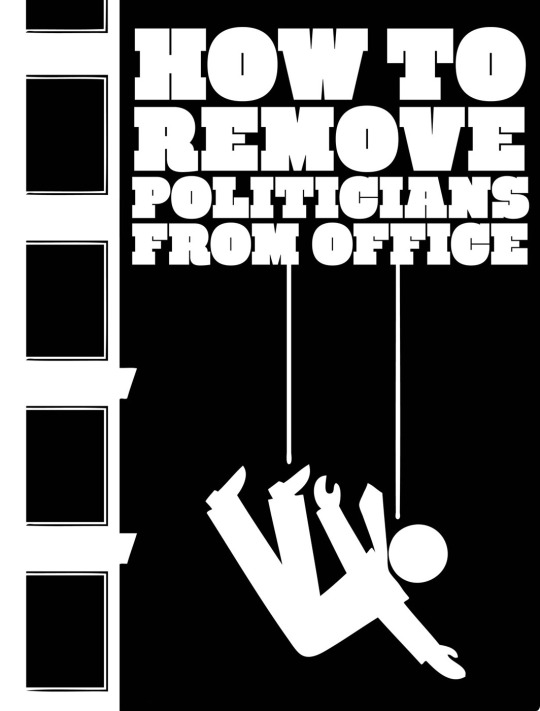
What would it mean to stop waiting?
It would mean to stop looking to others to solve our problems, no longer permitting a series of presidents, Speakers of the House, FBI directors, presidential candidates, and other bullies and hucksters to play good cop/bad cop with us.
It would mean figuring out how to deal with the catastrophes that Trump’s presidency is causing directly, rather than through the mediation of other authority figures. It would mean building up social movements powerful enough to block the construction of a border wall, to liberate children from migrant detention facilities and reunite them with their families, to feed the hungry and care for the sick without waiting for legislators to give us permission to make use of the resources that we and others like us maintain on a daily basis.
Remember when we shut down the airports immediately after Trump took office? It would mean doing more of that, and less sitting around waiting on politicians and bureaucrats. That was our proudest moment. Since then, we have only grown weaker, distracted by the array of champions competing to represent us—the various media outlets and Democratic presidential candidates—all surrogates for our own agency.
Let’s stop killing time. Or rather—let’s stop permitting it to kill us.
“We live the whole of our lives provisionally,” he said. “We think that for the time being things are bad, that for the time being we must make the best of them and adapt or humiliate ourselves, but that it’s all only provisional and that one day real life will begin. We prepare for death complaining that we have never lived. Of all the people I know, not one lives in the present. No one gets any pleasure from what he does every day. No one is in a condition to say On that day, at that moment, my life began. Believe me, even those who have power and take advantage of it are plagued with anxieties and disgusted at the dominant stupidity. They too live provisionally and spend their whole lives waiting.”
“Those who flee the country also spend their lives waiting,” Pietro said. “That’s the trouble. But one mustn’t wait, one must act. One must say Enough, from this very day.”
“But if you do not have the freedom to act?” Nunzio said.
“Freedom is not a thing you can receive as a gift,” Pietro said. “You can be free even under a dictatorship on the simple condition that you struggle against it. A person who thinks with his own mind and remains uncorrupted is free. A person who struggles for what she believes to be right is free. You might live in the most democratic country in the world, but if you are lazy, callous, and servile, you are not free—in spite of the absence of violence and coercion, you are a slave. Freedom is not a thing that can be begged from others. You must take it for yourself, in whatever share you can.”
-Ignazio Silone, Bread and Wine
Further Reading
Take Your Pick: Law or Freedom
The Centrists
16 notes
·
View notes
Link
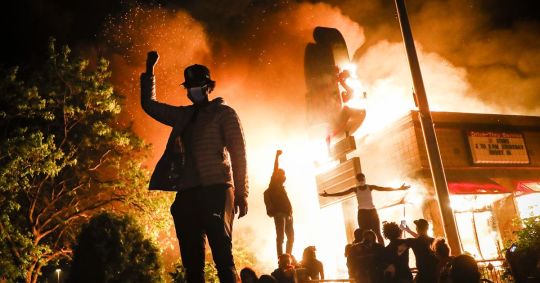
In the early years of the Trump era, I was often asked if American politics had been this bad before. I always said the same thing. It has been so much worse. Think of the 1960s. John F. Kennedy and Malcolm X were assassinated within two years of each other. Martin Luther King Jr. and Robert F. Kennedy were murdered within two months of each other. Riots set cities aflame. Domestic terrorists detonated bombs across the country. Freedom Riders were beaten and killed. White police officers turned dogs and hoses on black children. The Vietnam draft forced the nation’s young to war. The Democratic Party’s 1968 convention collapsed in violence. America was coming apart, with disagreements measured in bullets and blood.
But there was one thing the 1960s had, that we, today, do not: a political system designed to absorb conflict and find consensus, or at least stability. I do not seek to smother the age in nostalgia. That calm was often purchased at terrible moral cost, as in the union of Dixiecrats and New Deal Democrats that upheld segregation for decade after decade. But our divisions did not track our parties, and so they were muffled in our politics. What our political system could not solve, it suppressed. What it could no longer suppress, it sought to solve. When the Civil Rights Act passed, it did so with Republican votes, even as it was signed by a Democrat. Imagine legislation of such consequence passing without partisan valence today.

President Lyndon B. Johnson hands a pen to Rev. Martin Luther King after signing the historic Civil Rights Act in the East Room of the White House July 2, 1964. AFP via Getty Images
The compromises of that era saved the country, but they ended that political system. The Civil Rights Act set off a realignment of the parties. Richard Nixon weaponized the fury his predecessors had sought to quiet. The parties slowly restructured: The Democratic Party became the party of liberals, its coalition racially and religiously diverse, its power centers urban. The Republican Party became the party of conservatives, its coalition white and Christian, its power centers rural and exurban.
This is the story of American political polarization. For a time, in the 20th century, our political coalitions did not echo our social divisions, our parties were mixed enough to see little benefit in sharpening the contradictions, and so the political system often calmed our conflicts. It did so imperfectly, and often unjustly, but America held together when it could have come apart easily.
Today, our political coalitions are our social divisions, and that changes everything. When there is a rift within a party, the incentive is to bridge it, or ignore it, to maintain cohesion and retain wavering voters. When the rift is between the parties, the incentive is to escalate, to sharpen differences and mobilize supporters. The technological and financial understructure of politics and media transformed in ways that reinforced the polarization of the parties, as nightly newscasts and daily newspapers gave way to the quivering nervous system of Twitter, the identitarian incentives of Facebook, the shouting on cable news.
These institutions are in feedback loops with each other, and what is fed back and forth, growing louder and louder, is conflict, collision, and fury. Donald Trump is that system summoned into human form, a social media savant and cable news favorite who rode the feedback loop of outrage into the White House. He understood our divisions better than we did, and that is seen, in our age, as a form of political genius.
But what makes Trump successful is what makes him dangerous: He knows only the one thing, and knows it too well. All he can see is division; all he knows is discord; all he can do is escalate. He is the King Midas of strife, turning the country he leads into the thing he believes we are, the thing he himself is.

President-elect Donald Trump prepares to step out of the US Capitol for his inauguration ceremony on January 20, 2017. Mandel NganAFP via Getty Images
When we elected Donald Trump, we elected a political arsonist. The sole consolation of his presidency, in its early years, was that there was surprisingly little dry tinder. The economy hummed along, seemingly imperturbable. We faced few foreign crises. Domestic divisions remained mostly digital. This is not to dismiss real disasters or excuse cruel policies — from children thrown into cages to toxins dumped into our streams to the lethal mismanagement of Hurricane Maria — but it could have been worse.
Playacting civil war on Twitter, as the president often did, was never the nightmare scenario. The nightmare scenario was the social fracture and violent crises of the 1960s layered atop the political and media system of the 2020; the tests of presidential leadership that have defined past eras demanded of this leader, in this era. We weren’t there, and then, all of a sudden, we were.
We are.
The pandemic, fed by the Trump administration’s erratic and feckless response, has left more than 100,000 Americans dead — more than twice as many lives as we lost in the Vietnam War, and the count keeps rising. The economy is in free fall. The fabric of society has been cut, our culture is at war over masks and lockdowns, and the federal government has failed to chart a path to a safe future. We are a nation interrupted, aching for the normalcy we lost, unsure of the future we face.
Then came the lynchings, one after the other: Ahmaud Arbery, hunted down by gunmen on a truck. George Floyd, pinned to the ground by an armed agent of the state, dying slowly and publicly. Breonna Taylor, gunned down in her home. And now, the protests and riots. There is blood on the streets, cars mowing through crowds, buildings on fire, bodies being buried, police casually firing on the very people they are sworn to protect. And all of us, trapped at home, seeing things we can’t unsee, forced into the reckoning the country has always sought to delay. “There are too many things we do not wish to know about ourselves,” James Baldwin wrote. But in the age of smartphone cameras and viral videos, the knowledge is forced upon us. We see who we truly are, and we see who our leaders truly are.
“When the looting starts, the shooting starts,” Trump tweeted, in a missive so eager for violence Twitter hid it from most users. As he so often does, Trump made the subtext of the moment text: The line is not new. It is from 1967, when Miami police chief Walter Headley warned black communities that it would define his approach going forward. George Wallace, the segregationist Dixiecrat, echoed it in his 1968 presidential campaign.
The 1960s are here, again. We are at risk of coming apart. But this is a political system less practiced at holding us together, less capable of finding calm amid storms. Our divisions define our parties and our institutions crack under the strain; Congress can’t resolve small disputes, to say nothing of fundamental fractures. And our president is plainly eager for the storm to come. He does not know how to fight a virus, but he knows how to fight his countrymen.
“Big crowd, professionally organized, but nobody came close to breaching the fence,” he tweeted on Saturday. “If they had they would have been greeted with the most vicious dogs, and most ominous weapons, I have ever seen. That’s when people would have been really badly hurt, at least.”
But not to worry, Trump continued. “I was inside, watched every move, and couldn’t have felt more safe.” Perhaps he feels safe, live-tweeting from inside the presidential palace, but the rest of us don’t. We aren’t.
The clouds may yet part. Few Americans want violence. And we are still, I believe, a better country than our leader thinks we are. Cable channels and Twitter feeds pulse with violence, but the nonviolent remain the true story — they are the majority, the vast majority, risking their bodies for justice, sweeping up broken glass, absorbing blows from batons and inhaling tear gas simply as an act of solidarity. They make America great.
But I would be lying if I said I wasn’t scared. It would not take much more to truly set the country aflame. It is not just the news that has turned nightmarish in recent months. It is our lives, our reality. We are tired, scared, angry, hurt, mistrustful, and divided — and it is an election year. The kindling is everywhere. This is a country on the verge of war, and it so badly needs the leadership it doesn’t have, a president who truly wants peace.
Support Vox’s explanatory journalism
Every day at Vox, we aim to answer your most important questions and provide you, and our audience around the world, with information that has the power to save lives. Our mission has never been more vital than it is in this moment: to empower you through understanding. Vox’s work is reaching more people than ever, but our distinctive brand of explanatory journalism takes resources — particularly during a pandemic and an economic downturn. Your financial contribution will not constitute a donation, but it will enable our staff to continue to offer free articles, videos, and podcasts at the quality and volume that this moment requires. Please consider making a contribution to Vox today.
America at the breaking point #web #website #copied #to read# #highlight #link #news #read
0 notes
Text
Who’s on the U.S. Coronavirus Task Force

President Trump formed a coronavirus task force in late January, and members have been meeting regularly. But as the virus began to spread around the globe and infections were confirmed in the United States, Mr. Trump named Vice President Mike Pence as his point person at the end of February, and more administration officials were added to the panel. Among them are internationally known AIDS experts; a former drug executive; infectious disease doctors; and the former attorney general of Virginia. DR. DEBORAH L. BIRX The new coronavirus response coordinator for the White House, Dr. Deborah L. Birx, also holds the rank of ambassador as the State Department’s global AIDS director. An experienced scientist and physician, Dr. Birx will report to Vice President Pence, though White House officials did not specify how her duties will differ from those of Mr. Pence or Alex M. Azar II, the secretary of health and human services who is the chairman of the nation’s coronavirus task force. Nominated by President Obama in 2014 to the State post, Dr. Birx has spent more than three decades working on HIV/AIDS immunology, vaccine research and global health. For the past six years, Dr. Birx, a former Army colonel, has been in charge of the President’s Emergency Plan for AIDS Relief and America’s participation in the Global Fund to Fight AIDS, Tuberculosis and Malaria. From 2005 to 2014, she also was director of the division for Global HIV/AIDS at the Centers for Disease Control and Prevention. A biography distributed by the White House said she had “developed and patented vaccines, including leading one of the most influential HIV vaccine trials in history.” During her confirmation hearing in 2014, Dr. Birx spoke with admiration of the government’s ability to come together to confront a deadly disease that threatened the health and welfare of people around the globe. “The history of the end of the 20th century will be forever recorded with the emergence of a new and deadly viral plague that challenged us scientifically, socially and politically,” she told members of the Senate Foreign Relations Committee. “Fortunately, that history will also record that — eventually — we faced our own fears of the disease and embraced those infected and affected with the open arms of compassion, creative research and determined solutions.” Dr. Birx majored in chemistry at Houghton College and received her medical degree from Penn State University’s Hershey School of Medicine. — Michael Shear Alex M. Azar II became secretary of health and human services in January 2018, arriving with a background in government and industry and presenting himself as a problem-solving pragmatist. Updated Feb. 26, 2020 What is a coronavirus? It is a novel virus named for the crownlike spikes that protrude from its surface. The coronavirus can infect both animals and people and can cause a range of respiratory illnesses from the common cold to more dangerous conditions like Severe Acute Respiratory Syndrome, or SARS. How do I keep myself and others safe? Washing your hands frequently is the most important thing you can do, along with staying at home when you’re sick. What if I’m traveling? The C.D.C. has warned older and at-risk travelers to avoid Japan, Italy and Iran. The agency also has advised against all nonessential travel to South Korea and China. Where has the virus spread? The virus, which originated in Wuhan, China, has sickened more than 80,000 people in at least 33 countries, including Italy, Iran and South Korea. How contagious is the virus? According to preliminary research, it seems moderately infectious, similar to SARS, and is probably transmitted through sneezes, coughs and contaminated surfaces. Scientists have estimated that each infected person could spread it to somewhere between 1.5 and 3.5 people without effective containment measures. Who is working to contain the virus? World Health Organization officials have been working with officials in China, where growth has slowed. But this week, as confirmed cases spiked on two continents, experts warned that the world was not ready for a major outbreak. He replaced Mr. Trump’s initial pick for the job, Tom Price, who had resigned in September 2017 in the face of multiple federal inquiries into his use of private and government planes for travel. Mr. Azar, a former top executive at Eli Lilly, has navigated a series of high-profile issues since taking the job, from attempting to scale back the Affordable Care Act to overseeing the shelters that have housed the thousands of unaccompanied minors separated from their parents during border crossings or who entered the United States alone. He has also sought to address rising drug prices and public health initiatives such as improving the care of people with chronic kidney disease, although many of those policies have not come to fruition. And he has clashed with top health officials, including with Seema Verma, the administrator of the Centers for Medicare and Medicaid Services, in a power struggle that required the intervention of the White House. From 2012 to early 2017, Mr. Azar was president of Lilly USA, a unit of Eli Lilly and Company, a major producer of insulin. That history as a drug company executive came under criticism during his Senate confirmation, when Democrats questioned whether he would take the industry’s side on the issue of rising drug prices. Republicans cited that experience as an asset, arguing that it would help him better understand the problems. Mr. Azar, 52, was a law clerk for Supreme Court Justice Antonin Scalia. He joined the administration of President George W. Bush as general counsel of H.H.S. in 2001 and became deputy secretary four years later. While there, he helped carry out a 2003 law that added a prescription drug benefit to Medicare, one of the most significant changes in the history of the program. Mr. Azar graduated from Yale Law School and grew up in Maryland, where his father was an ophthalmologist and his mother a registered nurse. — Katie Thomas DR. ROBERT R. REDFIELD A longtime AIDS researcher, Dr. Robert R. Redfield has served since March 2018 as the director of the Centers for Disease Control and Prevention and administrator of the Agency for Toxic Substances and Disease Registry. As such, he is the nation’s chief public health officer, overseeing government response to crises like the opioid epidemic or Ebola, and has had primary responsibility for supervising the federal response to the coronavirus cases in the United States, reporting to Mr. Azar. Dr. Redfield has already been the target of criticism for some of the C.D.C.’s decisions — including testing protocols that may have missed infections, flawed testing kits for the virus and the repatriation of infected patients from the Diamond Princess cruise ship — although it is not clear whether his was the final word on these and related actions. Before taking his post, Dr. Redfield was a professor at the University of Maryland School of Medicine, where he co-founded the Institute of Human Virology, and served as chief of infectious diseases. The institute provided treatment for H.I.V., the human immunodeficiency virus, to more than 6,000 patients in the Baltimore-Washington area and more than 1 million people in Africa and the Caribbean. Earlier in his research career, Dr. Redfield advocated broad testing for H.I.V. and the screening of military personnel for the virus — and faced renewed criticism for those views when he was nominated to the C.D.C. post. A native of Chicago, Dr. Redfield grew up in Bethesda, Md., where both of his parents worked at the National Institutes of Health. He graduated from Georgetown University and its School of Medicine, and did his residency at Walter Reed Army Medical Center, then continued as a researcher there, focusing on AIDS. He launched the virology institute with Dr. Robert C. Gallo, who developed the blood test for H.I.V. in 1996. — Sheila Kaplan As head of the National Institute of Allergy and Infectious Diseases at the National Institutes of Health since 1984, Dr. Anthony S. Fauci has played a central role in research of disease outbreaks, and the search for cures, since the emergence of HIV/AIDs — as he is doing now with the coronavirus. He testifies regularly to Congress about the threat of emerging diseases and has been one of the most prominent leaders of the government’s front line on public health. Behind the scenes, though, is where Dr. Fauci is considered most influential: He helps shape the decisions about where research should be directed in search of a response or cure. Overall, Dr. Fauci oversees an agency with a budget of $5.9 billion for 2020. Dr. Fauci grew up in Brooklyn. His father was a pharmacist. attended Holy Cross College and was graduated from Cornell University Medical College in 1966. His life shifted significantly in 1981, when he was working at the N.I.H. and gay men began showing up with devastated immune systems. Dr. Fauci, while certainly not known in popular culture circles, carries a kind of celebrity status among scientists. That might stem in part from the amount of research money he controls but also because of his ease with communicating deep science both with nuance and accessibility, making him a translator of sorts during times of crisis. Kenneth T. Cuccinelli II, one of the top immigration officials in the United States, has brought his firebrand approach to Mr. Trump’s coronavirus task force. He leads the United States Citizenship and Immigration Services, the agency overseeing legal immigration, while simultaneously working as acting deputy secretary of the Department of Homeland Security. In nine months, the former attorney general of Virginia has gone from defending Mr. Trump’s aggressive immigration policies on Fox News to representing the Homeland Security Department on virus response. Mr. Cuccinelli coordinates the screening of travelers at airports, and land and maritime ports, and has overseen the monitoring of people who have recently traveled to China or shown signs of illness. In his short time with the Homeland Security department, Mr. Cuccinelli has irked other agency leaders with his aggressive communication to the public — including when he said the sonnet on the Statue of Liberty poem referred to “people coming from Europe.” Mr. Cuccinelli was similarly criticized on Monday afternoon when he complained on Twitter that he could not gain access to a Johns Hopkins University map of the spreading coronavirus outbreak. “I’m sure it’s jarring to the public to see a very high ranking federal official sending out an S.O.S. on Twitter,” said January Contreras, who was a senior adviser to Janet Napolitano, his predecessor at the homeland security agency. After Senator Chuck Schumer, the Democratic leader from New York, said Mr. Cuccinelli’s appointment to the task force showed how “hollowed out” federal agencies are, Mr. Cuccinelli pointed the finger at Mr. Schumer for not attending a briefing on the virus. In an interview with The New York Times earlier this month, Mr. Cuccinelli said he spent much of his time since being appointed to the task force calling hundreds of local politicians to coordinate their responses to the virus. Born in Edison, N.J., Mr. Cuccinelli was raised in Virginia. He graduated from the University of Virginia with an engineering degree and from George Mason University with a law degree. — Zolan Kanno-Youngs Read the full article
0 notes
Text

1900 Booker T. Washington founds the National Negro Business League.
Washington publishes his first autobiography The Story of my life and work editor of the New York Age Timothy Thomas Fortune.
October Washington invited for dinner at the White House by President Theodore Rosevelt.
Du Bois attends the First Pan-African Conference in London drafts letter ”Address to the Nations of the World” to the European heads of states.
Seay becomes certificate as an educator teaches in Mayan village of Xcalak in Mexico.
1901 Garvey becomes apprentice to printer Alfred ‘Cap’ Burrowes in his native parish of Saint Ann.

W.E. B. DuBois with his wife Nina and daughter Yolande ca. 1901
Washington publishes his autobiography Up From Slavery.
Washington recieves honorary decorate from Dartmouth College.
1903 Du Bois publishes his 14 essay book The Souls of Black Folk.

1904 Garvey relocates from his native parish of Saint Ann 25 miles away to Alfred Borrows branch in Port Maria, Saint Mary.
1905 Garvey moves to Smith Village, Kingston at 13 Pink Lane in begins working for P. A. Benjamin and exceeds to the position of foreman.

Booker Washington and Theodore Roosevelt at Tuskegee Institute, 1905.
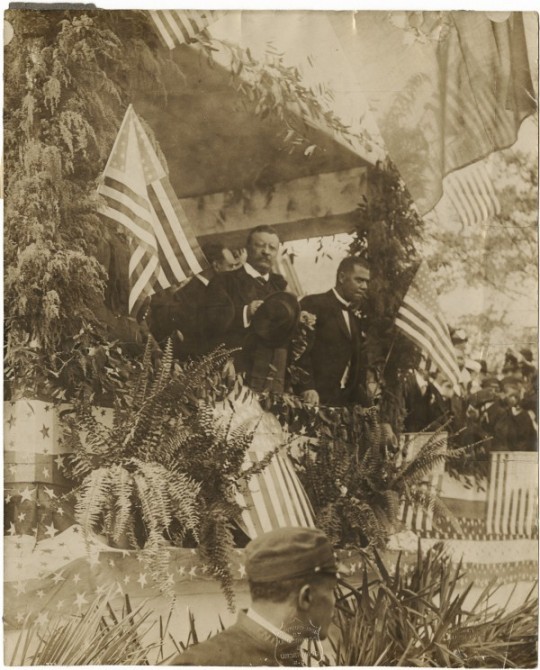
December Du Bois buys printing press and publishes Moon Illustrated Weekly.

1906 January 23 Washington giving a speech at Tuskegee Institute Silver Anniversary Lecture Carnegie Hall in New York City.

Du Bois and American Civil Rights activists meet in Canada write declaration opposing Washington's Atlanta Compromise and form the Niagara Movement.
August Second Niagara conference West Virginia Harpers Ferry John Brown raid.
September Atlanta riots 10 thousand whites, 25 deaths.
Du Bois publishes his “A Litany at Atlanta” essay.
1907 Hubert Harrison begins working at the United States Post Office.
Garvey elected vice president of the compositors branch of the Kingston Typographical Union.
Du Bois publishes The Horizon: A Journal of the Color Line.
Philadelphia Quaker Anna T Jeanes donates one milion dollars to Booker T washington.

1908 November 28 Garvey participates in Jamaica Print worker strike.
18 March Garveys Mother Sarah Richards passes away at age 56.

1909 Washington tours southern Virginia and West Virginia.
May Du Bois attends the First National Negro Conference in New York where National Negro Committee is created chaired by Oswald Villard.

Orientalist Dr. Carl Bezold publishes his edition of the Book of the Glory of Kingswith a German translation.
1910 Du Bois attends the Second National Negro Conference Committee where they create the National Association for the Advancement of Colored People (NAACP), Du Bois becomes Director of Publicity and Research for editor of its monthly magazine the Crisis.
Harrison writes two letters to the New York Sun critical of Booker T Washington which cost him his job at the United States Post Office.
Garvey travels to Costa Rica where he is employed as a time keeper on a Banana plantation.
20 April Garvey elected first assistant secretary of the National Club and Wilfred Domingo Apprentice Tailor, second assistant secretary. Fortnightly journal Our Own. Garvey and Domingo The Struggling Mass pamphlet.
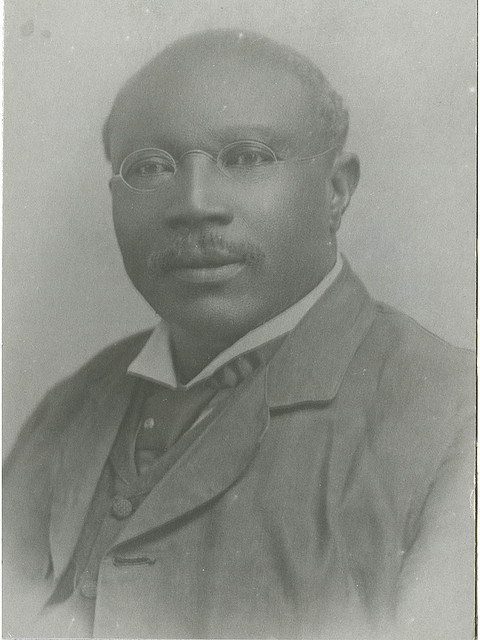

Garvey enrolls for elocution lessons with Jamaican Dr. Robert J Love monument George William Gordon.
Garvey publishes three issues of his Watchman journal namd after George William Gordon’s journal the Watchman.
November Du Bois publishes the first issue of The Crisis.
1911 Harrison begins work at Socialist Party of America becoming Americas leading black socialist.
Du Bois attends First Universal Race Congress in London, publishes his Quest of the Silver Fleece novel and joins the Socialist Party of America.
Garvey becomes editor of daily newspaper La Nacionale in Costa Rica and later travels to Colon, Panama.
July 26 Universal Races Congress among its attendees Harry Johnston of the Royal Geographical Society, Sir Sydney Olivier Governor of Jamaica.
April 25, 1911 - The Nation (edited by Marcus Garvey) Cover Page.
July 26 Universal Races Congress among its attendees Harry Johnston of the Royal Geographical Society, Sir Sydney Olivier Governor of Jamaica.
1912 Julius Rosenwald begins serving on the board of directors of Tuskegee Institute.
February 7 Blyden passes in Freetown, Sierra Leone.
Harrison campaigns for Industrial Workers of the World founder Eugene V. Debs, presidential candidate, writes the Negro and Socialism for the socialist newspaper the New York Call as well as the socialist monthly the International Socialist Review, also founds the Colored Socialist Club and speaks at Broad and Wall Street in front of the New York stock exchange on socialism.
Garvey sails to London where he attends evening classes at Birkbeck College.
August Garveys sister, Indiana, joins him in London.
Du Bois supports the Democrat Woodrow Wilson in presidential campaign forcing him to resign from Socialist Party of America.
Julius Rosenwald begins serving on the board of directors of Tuskegee Institute.
1913 Garvey begins working for Dusé Mohamed Ali at the African Times and Orient Review office at 158 Fleet Street as messenger and handyman, in October issue writes The British West Indies in the Mirror of Civilization essay. Dusé Mohamed Ali was also later to become the foreign secretary for Garveys Universal Negro Improvement Association.

Garvey travels to Scotland.
Garvey granted month long readers pass to the British Museum library, where he reads Edward Wilmot Blyden’s Christianity, Islam and the Negro Race as well as Booker T Washington’s autobiography Up from Slavery.
Claude Mckay attends Tuskegee Institute.

W.E.B. DuBois and members of the New York State Commission on the occasion of the fiftieth anniversary of the Emancipation Proclamation in 1913.

Organizers of the 1913 Silk Strike in Paterson, New Jersey. Front row, from left: Hubert Harrison, members of the Industrial Workers of the World Elizabeth Gurley Flynn, and “Big Bill” Haywood. Back row: unknown, Patrick L. Quinlan, unknown, and unknown. Photographer unknown. Courtesy the American Labor Museum, Haledon, New Jersey, and Jeffrey B. Perry.
Six new small schools in rural Alabama funded by Rosenwald built and opened.
1914 Crisis magazine article 2,732 lynchings from 1884 to 1914.
Marcus Garvey founds the Universal Negro Improvement Association at 12 Orange Street, Kingston.
August Garvey meets Amy Ashwood at the Queen Street Baptist Literary and Debating Society U.N.I.A. moved to 20 Orange Street, Kingston.
October Tsar Nicholas II October manifesto freedom of speech and suffrage.
The Russian army invade Germany.
Alfred Charles Sam Akyem Abuakwa Gold coast Texas, Oklahoma.
1915 Harrison publishes The Black Man’s Burden Rudyard Kipling.
Du Bois publishes The Negro and “The African Roots of the War” essay, Atlantic Monthly and fights with the NAACP to band The Birth of a Nation film, the Crisis magazine also publishes article 2,732 lynchings from 1884 to 1914.

135th Street Lenox Avenue Harlem speakers corner.
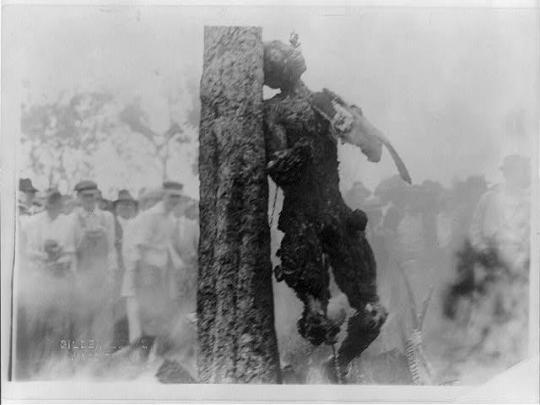
Tsar Nicholas assumes Commander in Chief.
1916 Crisis magazine April issue lynching of six in Lee County, Georgia and June issue “ Waco Horror” article lynching of mentally impaired 17 year old Jesse Washington in Waco, Texas.
March Garvey departs from Jamaica to New York on the SS Tallac.
April 25th Garvey heads to the NAACP offices at 25 695th Avenue in search of Du Bois.
May 9, Garvey holds his first public lecture in New York City at St Mark’s Church in-the-Bowery where he becomes overwhelmed whilst speaking and falls off the stage.
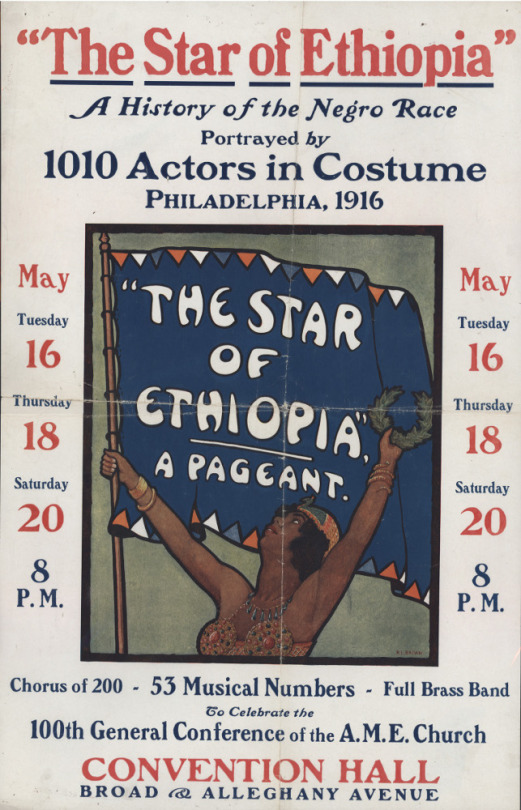
The Star of Ethiopia a pageant of the history of black people from 50,000 B.C to 20th century wrote, produced, and directed by WEB Du Bois.
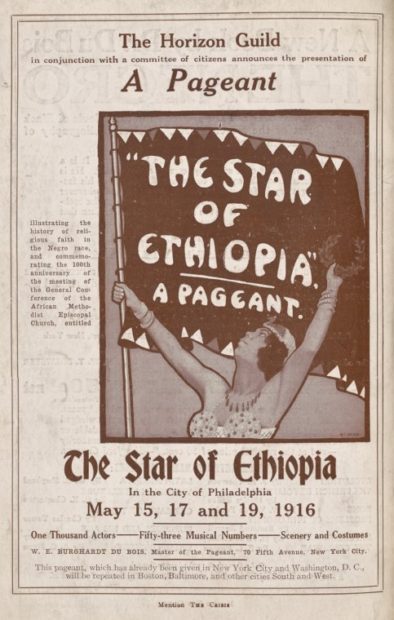
Lucien B. Watkins poem The Star of Ethiopia.
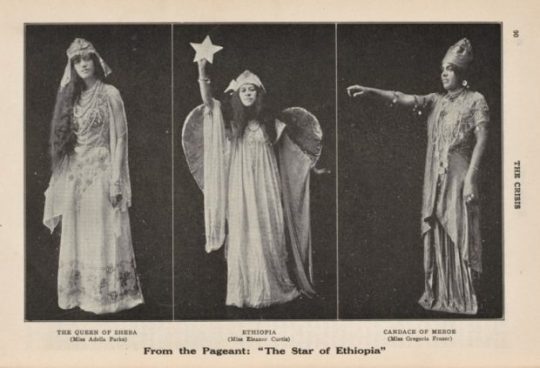
December Grigori Rasputin murdered by Prince Yusopor.
1917 Garvey and thirteen others the Harlem, New York branch of the UNIA,

Asa Philip Randolph and Chandler Owen also found the Messenger monthly magazine, earlier the same year A Philip Randoph had stepped down from his stepladder in Harlem to let Garvey speak.
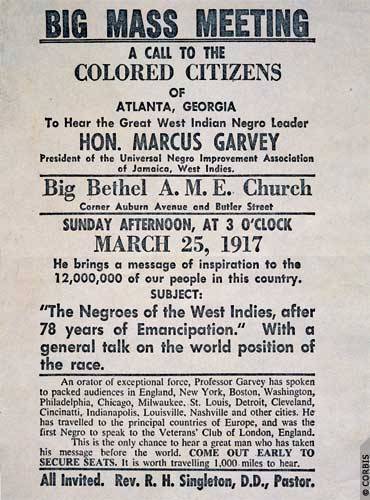
March Tsar Nicholas II resigns.
April Vladimir Lenin returns to Russia from exile in Switzerland flee to Finland.
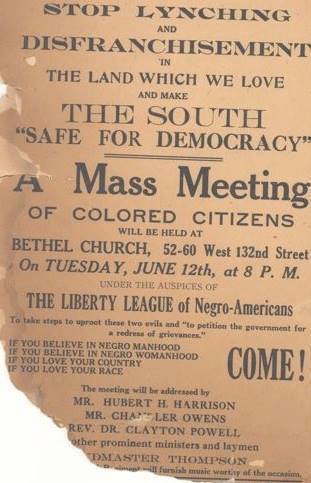
Harrison founds the Liberty League and Voice newspaper.
12 June Harrison and Marcus Garvey speak at Harrisons Liberty League of Negro Americans meeting at the Bethal African Methodist Espicopal church.

July 1 East Saint Louis riots, white drive by and fire shots, journalist and two police men drive by Blacks open fire on car killing one officer, thousand of whites begin rioting. women, blacks lynched Congressional Investigating Committee reports 39 blacks, 9 whites dead although thought to be more like hundreds, 6 thousand Blacks left homeless after their neighbourhood burned.
July 8 Garvey at Lafayette Hall speaks on the East Saint Louis riot The conspiracy of the East St. Louis Mayor Mollman migration riots printed pamphlets.
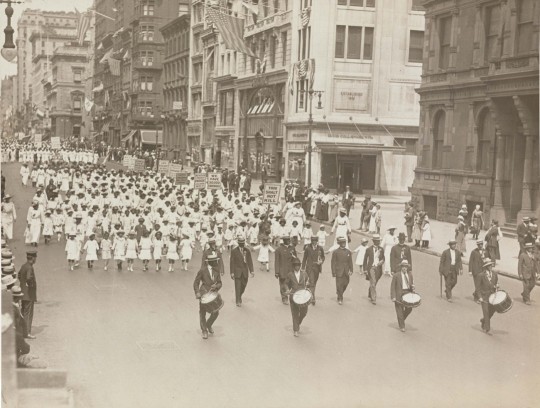
July 28 Du Bois and NAACP organise and lead a “Silent March” of 10,000 black New Yorkers down Fifth Avenue to protest the East St. Louis race riot, Du Bois also travelled to St. Louis to report on the riots and publishes the article "The Massacre of East St. Louis" in September.

October 16 Lenin returns to Russia.
October 24th/25th Bolshevik Provisional Government Petrograd Soviet.
1918 Garvey on his birthday founds the Negro World weekly newspaper.
Garvey holds UNIA meetings at Palace Casino Theater 135th Street Madison Avenue.
Harrison works with the American Federation of Labor and serves as chairman for the Negro American Liberty Congress co-headed by Monroe Trotter, the AFL also submits petition to the U. S. Congress for federal anti-lynching legislation.
According to the Hymn From Greenlands Icy Mountains had been adopted by the UNIA and sung at this meeting it is also used by the RasTafarite Ethiopia Black International Congress.
August 4 Randolph and Owen in Cleveland at Social Party leader Walter Bronstrups meeting arrested by Department of Justice official to be trailed on the charge of violating the Espionage Act.
“unlawfully, knowingly and feloniously, the United States being then and there at war with the Imperial German Government, willfully print and cause to be printed, publish and cause to be published, circulated, in a certain language intended to incite, provoke and incur resistance to the United States and to promote the cause of its enemies in a certain publication known as the Messenger.”
6 October 1918 Amy Ashwood arrives from Panama.
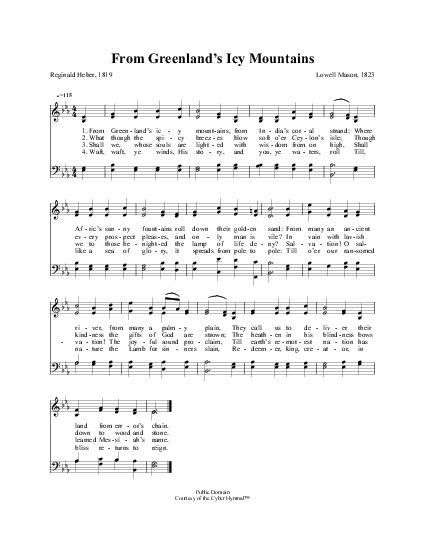
According to the Hymn From Greenlands Icy Mountains had been adopted by the UNIA and sung at this meeting it is also used by the Ras Tafarite Ethiopia Black International Congress.
1919 January 18 the year long Versailles Peace Conference is held in Paris France. Treaty of Versallies Germanys possessions Hiltler re militarization June 28 and creation of the League of Nations.
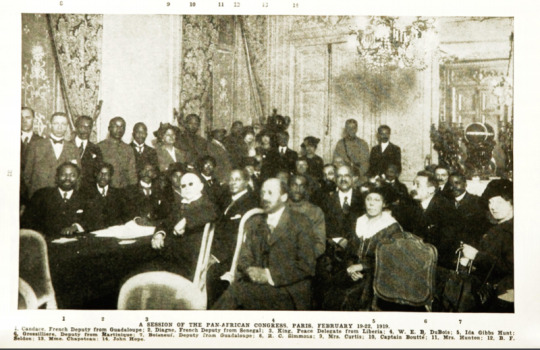
WEB Du Bois with the help of Senegalese deputy to the National French Assembly Blaise Diagne organized the First Pan African Congress to be held in Paris.
The 20 year old Haitian Elizier Cadet elected as a delegate, interpreter, main negotiator and later high commissioner to the Conference, presents the resolutions of the UNIA that Germanys confiscated colonies be governed by Negroes educated in America and Europe, to the President the French PM Georges Clemenceau, Cadet also camped outside the offices of the Parisian newspapers of the Liberal La Matin editor, as well as the editors of La Presse and L’Instansigeant newspapers who promised to publish the articles.
Ida B. Wells and Randolph were also elected as delegates but were unable to obtain passports and visas.
German East Africa Tanganika designated to Britain, South West Namibia Cameroon, and Togo to France and Britain, Urundi Burundi to Belgium and Namibia South Africa
January 21 Seattle Shipyard Strike 35, 000 workers go on strike. Unions in Seattles shipbuilding industry demand pay increase for unskilled workers, the yard owners offer to give a pay increase to skilled workers, the union reject the offer and go on strike.
February 23 Third Irish Race Convention Philadelphia.

Soldiers of the 369th (15th N.Y.), awarded the Croix de Guerre for gallantry in action, 1919. Left to right. Front row: Pvt. Ed Williams, Herbert Taylor, Pvt. Leon Fraitor, Pvt. Ralph Hawkins. Back Row: Sgt. H. D. Prinas, Sgt. Dan Storms, Pvt. Joe Williams, Pvt. Alfred Hanley, and Cpl. T. W. Taylor.

Pvt. Henry Johnson nicknamed “Black Death”.
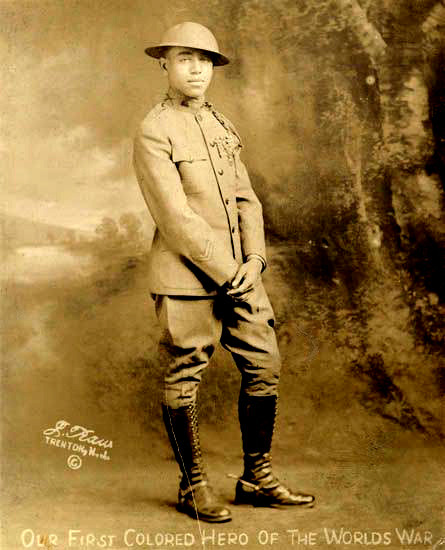
Pvt. Needham Roberts.
Johnson who using his broken rifle as a club and Roberts with a 9 inch bolo knife defeat a 24 German in France awarded.
$10, 000 $35, 000 steam paddle ship SS Shadyside SS Kanawha.
The UNIA property located at 114 West 138th Street, New York City which had previously been the Metropolitan Baptist Tabernacle and which would now become the first of many of the UNIAS Liberty Halls.
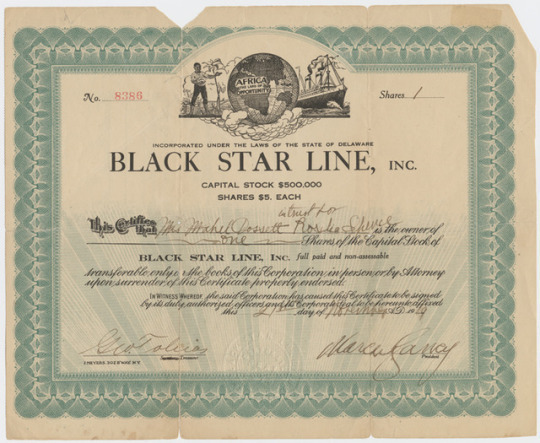
The Black Star steamshipping line was also established.
Garvey and the UNIA investigated by the FBI then the BOI. Major Walter Howard Loving Negro World Probable Bolshevik Propaganda.
Bolshevik meaning majority, referring to the Marxist majority of the Russian Social Democratic Party of which Vladimir Lenin and Leon Trotsky came into power in October 1917 and the influence of its socialist, communist and Soviet regime.
Supported by German or Bolshevik money.
February 4 U.S. Senate votes to Overman Judiciary Subcommittee for more investigation of German spies and Bolshevik propaganda. committee month hearing February 11.
February 6 to 11 Seattle, Washington General Strike. Head of Emergency Fleet Corporation sends telegram mistakenly to Metal Trades Council rather than Metal Trades Association withdraw contracts of any given wage increase, the workers appeal to Seattle Central Labor Council for the strike.
General Strike Committee formed to provide essential services throughout the city during the strike, Army Veterans form Labor War Veterans Guard to ensure order throughout the city although.
“Russia Did It” pamphlet overthrow.
Mayor Hanson police and military order federal troops, stations 950 sailors and marines February 7. 600 hires men to the police force hires 2, 400 deputies.
February 8 The executive committee of the General Strike Committee by AFL and international labor organizations to end the strike at midnight but voted against by the General Strike Committee.
February 9 Mayor Hanson “sympathetic strike was called in the exact manner as was the revolution in Petrograd”.
February 10 The General Strike Committee vote to end the strike the next day.
39 Industrial Workers of the World members arrested ringleaders anarchy.

April bombs mailed to Government officials, businessmen such as John D Rockefeller, Mayor of Seattle Ole Hanson receives mailed packaged bomb opened at the wrong end by member of his office staff William Langer, who then takes the bomb to the police and notifies Post Office.
Police officers turn up at the UNIA headquarters with a search warrant after an anonymous tip of that from the office of the Negro World. At Garveys Carnegie Hall meeting agents of the Lusk Committee also turn up with a bomb squad.
J Edgar hoover begins to hold suspicions of the Harlem offices of the Negro World and the Messenger being the Russian organ of Bolshevism in New York. Garvey papers II page 674. 642 of the Russian organ of Bolshevik from one memo J Edgar Hoover special assistant to Attorney General to Frank Burke Washington D.C. August 12 1919 Garvey papers I page 480.
May Day Boston Police attempt to stop unpermitted march, fight for socialist Soviet Union Red Flags, one policeman fatally stabbed, socialist HQ attacked by mob, 114 arrested.
At the Russian Peoples House social club, soldiers burn printed material and force emigrants to sing Star Spangled Banner.
Cleveland, Ohio protesting the imprisonment of Eugene V. Debs and promoting the campaign of Charles Ruthenberg the socialist candidate for Mayor plan march.
Nationalist group Victory Loanworkers try to block marchers, Ruthenbergs HQ attacked by mob, police mount with trucks and tanks, tank driven into crowd, two dead, 40 injured, 116 arrested.
June 2 Bombs judges sentenced anarchist to prison, Attorney A. Mitchell Palmer targeted for the second time, Carlo William Valdinoa editor of Galleanist publication Cronaca Sovversiva Luigi Galleani, delivers the bomb, trips up, the bomb detonates leaving his body parts on Palmers lawn.
Flyer traced to anarchists Andrea Salsedo, who commits suicide and Robert Elia.
June Attorney A. Mitchell Palmer Carlo William Valdinoa Galleanist trips up bomb detonating body parts lawn.

Senator Lusk chairman of committee anarchy socialists troops office of Industrial Workers of the World and Rand school for racial propaganda Socialism Imperilled, or the Negro a Potential menace to American radicalism article by Wilfred Domingo editor of the Negro World who worked with Garvey in 1910 at the National Club.
June 2 Bombs judges sentenced anarchist to prison, Attorney A. Mitchell Palmer targeted for the second time, Carlo William Valdinoa editor of Galleanist publication Cronaca Sovversiva Luigi Galleani, delivers the bomb, trips up, the bomb detonates leaving his body parts on Palmers lawn.
Flyer traced to anarchists Andrea Salsedo, who commits suicide and Robert Elia.
July 28 Garvey charged with criminal libel against Richard Warner, Edgar Grey and the District Attorney Kilroe, Garvey incarcerated in Tombs prison and bailed for $3,000.
A Red Summer.
The Red Summer racial riots were a series of riots 38 which occurred between May and October 1919.
December Crisis issue Omaha, Nebraska.
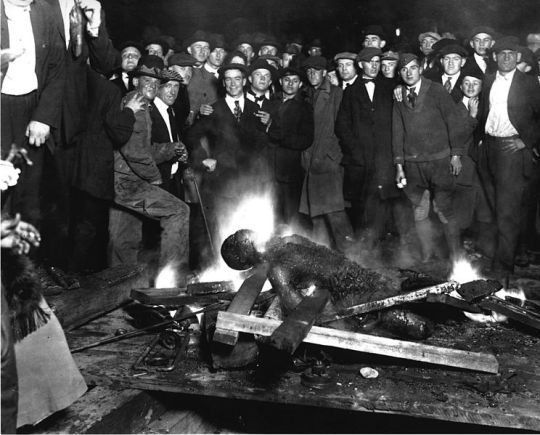
Will Brown, Victim of Omaha, Nebraska violence.
Mary Turner.
May 10 Charleston, South Carolina
May 10 Sylvester, Georgia May 29 Putnam County, Georgia May 31 Monticello, Mississippi June 13 New London, Connecticut June 13 Memphis, Tennessee June 27 Annapolis, Maryland June 27 Macon, Mississippi July 3 Bisbee, Arizona July 5 Scranton, Pennsylvania July 6 Dublin, Georgia July 7 Philadelphia, Pennsylvania July 8 Coatesville, Pennsylvania July 9 Tuscaloosa, Alabama July 10 Longview, Texas July 11 Baltimore, Maryland July 15 Port Arthur, Texas
July 19 Washington, D.C. July 21 Norfolk, Virginia July 23 New Orleans, Louisiana July 23 Darby, Pennsylvania July 26 Hobson City, Alabama July 27 Chicago, Illinois July 28 Newberry, South Carolina July 31 Bloomington, Illinois July 31 Syracuse, New York July 31 Philadelphia, Pennsylvania August 4 Hattiesburg, Mississippi August 6 Texarkana, Texas August 21 New York City, New York August 30 Knoxville, Tennessee September 28 Omaha, Nebraska October 1 Elaine, Arkansas
Elaine, Arkansas, arrested and tried for conspiracy in the Moore v. Dempsey case.
28 July Garvey charged with criminal libel against Richard Warner, Edgar Grey and the District Attorney Kilroe, Garvey incarcerated in Tombs prison and bailed for $3,000.
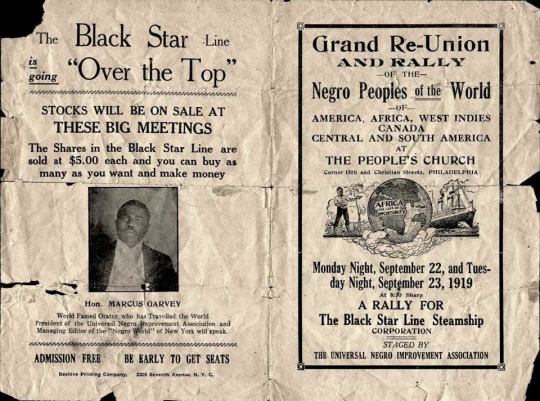
28th September Garvey, Reverend Eason, Amy Ashwood and Henrietta Davis Illinois south for meetings at the 8th Regiment Armoury the home of the all Negro infantry Garvey was arrested by detective George Friend of the Chicago Constabulary on violation of the Blue Sky Law turned out to be a private detective from Keystone Detective Agency who was hired by Robert Abbott editor of the Chicago Defender and taken to Harrison police station.
September Henrietta Vinton Davis that there were 7, 500 members in New York alone and branches in 25 states of Union.
11 October memorandum from J Edgar Hoover to special agent Ridgely.
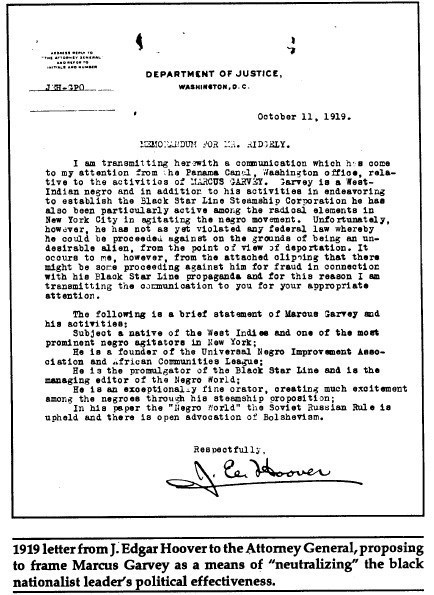
October 1 Elaine, Arkansas 200 African Americans murdered, arrested and tried for conspiracy in the Moore v. Dempsey case.
11 October memorandum from J Edgar Hoover to special agent Ridgely.
14 October Garvey shot by George Tyler, grazed on his temple and caught in the leg. Tyler commits suicide the next day, Tyler was also the only witness for the criminal libel charge against Garvey.
October Garvey speaks at Philadelphia Peoples Church again.
The Negro World seized in British Guiana and Honduras, according to the Saint Vincent Gazette October 1919 anyone bringing the paper into the colony to serve six months prison sentence, possibly with hard labor.
November Second anniversary of the Bolshevik Revolution BOI agents police raid Union of Russian Workers in 12 cities.
Garveys name put forward to Louis F. Post at the Labour Department for deportation on unsubstantiated grounds.
December Du Bois in the Crisis covers lynching in Omana, Nebraska.
December Guianse Edward Green Smith founding member, Secretary UNIA and accountant who previously worked at the ammunition factory in Trenton, New Jersey shot during robbery, pregnant wife dies from shock BSL principal negotiator.
December 25 Garvey marries Amy Ashwood two week honeymoon in Canada Toronto and Montreal.
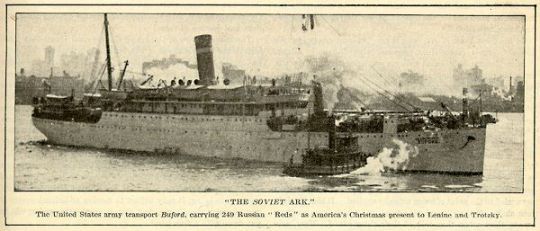
Garveys name put forward to Louis F. Post at the Labour Department for deportation on unsubstantiated grounds.
December 1919 Guianse Edward Green Smith founding member, Secretary UNIA and accountant who previously working at the ammunition factory in Trenton, New Jersey employment shot during robbery pregnant wife dies from shock BSL principal negotiator.

The Belize branch of the Universal African Black Cross Nurses established in 1920 by Vivian Seay.
Seay survey infant and maternal recruits nurse trainees.

Garvey and Green without Cockburn charter the SS Frederick Douglas at the rate of $11, 000 as opposed to $100, 000 with repairs amounting to $11, 000 and fail to include limited indemnity clause in contract with Green River Distillery making them liable damages to whisky company prohibition deadline 16th January confiscated.
Cockburn receives $2,000 commission from Green River Distillery to load the and sail the ship.
1920 January 15 Frederick Douglas sails from the U. S. to Havana, Cuba with 20, 000 cases of whiskey, 500 cases of champagne and 350 barrels of wine 500 cases of whisky, caught in storm off the coast of Cape May, the cargo shifts in its Hull making its starboard list heavy, tossed aboard in order to prevent it from capsizing and has to be towed back to New York .
neglect to making docking arrangements cargo cant be unloaded because of the shoremans strike, left to face penalty of thousands every day for 32 days.
Chief Officer Hugh Mulzac and UNIA delgation meet arrive at Havana, Cuba meet President Menocal and are given banquet at his palace.
The SS Frederick Douglass at Colon Panama carries 500 Caribbean laborers to Cuba.
The SS Frederick Douglass makes a ceremonial stop at Bocas del Toro in Costa Rica.
In Kingston, Jamaica the SS Frederick Douglass cargo of 700 tons of coconuts which rot on detour to Boston.
Du Bois publishes the first of his three autobiographies Darkwater: Voices From Within the Veil containing his “The Damnation of Women” essay as well as The Brownies Book, a monthly children’s magazine co founded by Augustus Granvil Dill and Jesse RedmonFauset.
1920 Du Bois publishes the first of his three autobiographies Darkwater: Voices From Within the Veil containing his "The Damnation of Women" essay as well as The Brownies Book, a monthly children's magazine.

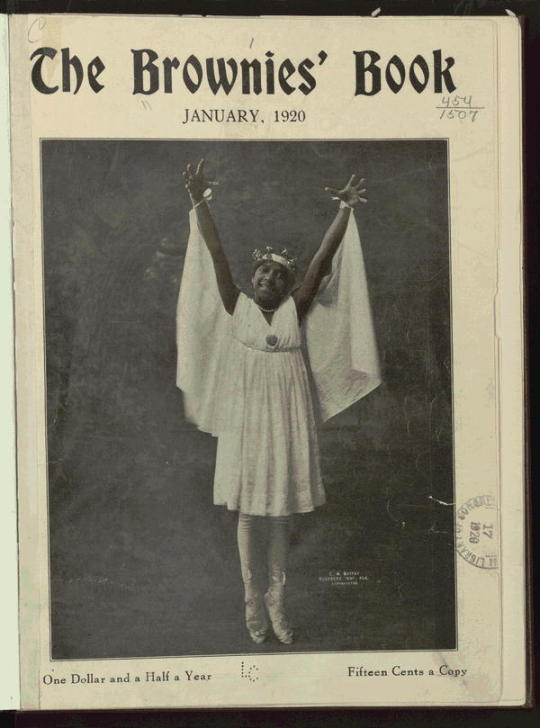
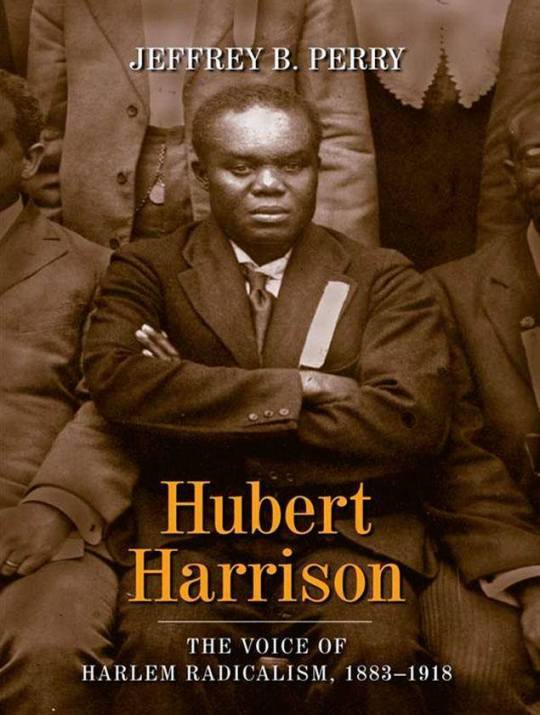
January Harrison becomes editor of the Negro World and also contributes to the Declaration of Rights of Negro People’s of the World.
August the first UNIA Convention was held for the whole duration of the month of August in Madison Square Gardens, New York City. It was at this convention that the Bill of Rights the Declaration of Rights of the Negro Peoples of the World was drafted and adopted. https://tmblr.co/Z9elId2ORVqcw

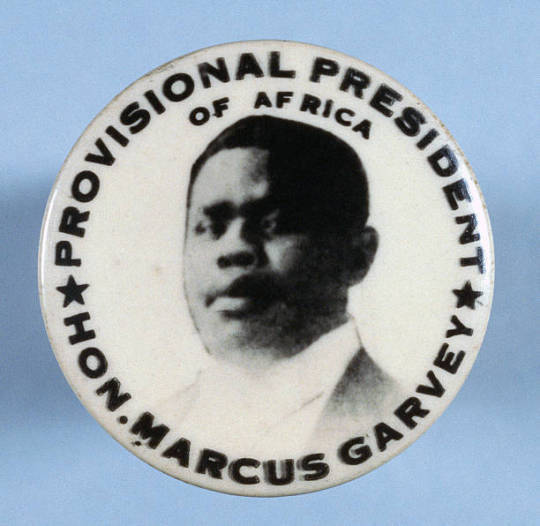
It was at this event where he was duly elected Provisional President of Africa at the convention Garvey reportedly read two telegrams one from Irish Republic leader Eamon de Valera Provisional President of Ireland and the other from Zionist in Califonia Louis Michael.
Are ye not as children of the Ethiopians unto me, O children of Israel? saith the LORD. Have not I brought up Israel out of the land of Egypt? and the Philistines from Caphtor, and the Syrians from Kir? Amos 9:7

10. We protest against segregated districts, separate public conveyances, industrial discrimination, lynchings and limitations of political privileges of any Negro citizen in any part of the world on account of race, color or creed, and will exert our full influence and power against all such.
12. Against all such inhuman, unchristian and uncivilized treatment we here and now emphatically protest, and invoke the condemnation of all mankind.
17. Whereas the lynching, by burning, hanging or any other means, of human beings is a barbarous practice and a shame and disgrace to civilization, we therefore declare any country guilty of such atrocities outside the pale of civilization.

24. We believe in the doctrine of the freedom of the press, and we therefore emphatically protest against the suppression of Negro newspapers and periodicals in various parts of the world, and call upon Negroes everywhere to employ all available means to prevent such suppression.
25. We further demand free speech universally for all men.
33. We vigorously protest against the increasingly unfair and unjust treatment accorded Negro travelers on land and sea by the agents and employee of railroad and steamship companies, and insist that for equal fare we receive equal privileges with travelers of other races.
35. That the right of the Negro to travel unmolested throughout the world be not abridged by any person or persons, and all Negroes are called upon to give aid to a fellow Negro when thus molested.
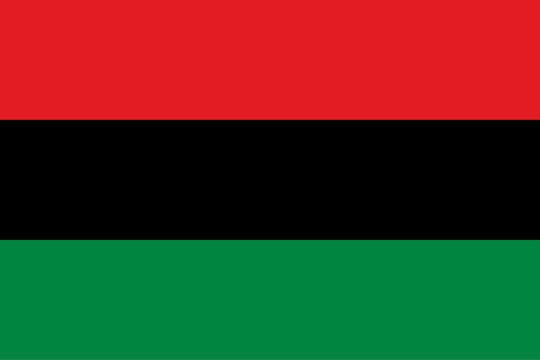
39. That the colors, Red, Black and Green, be the colors of the Negro race.
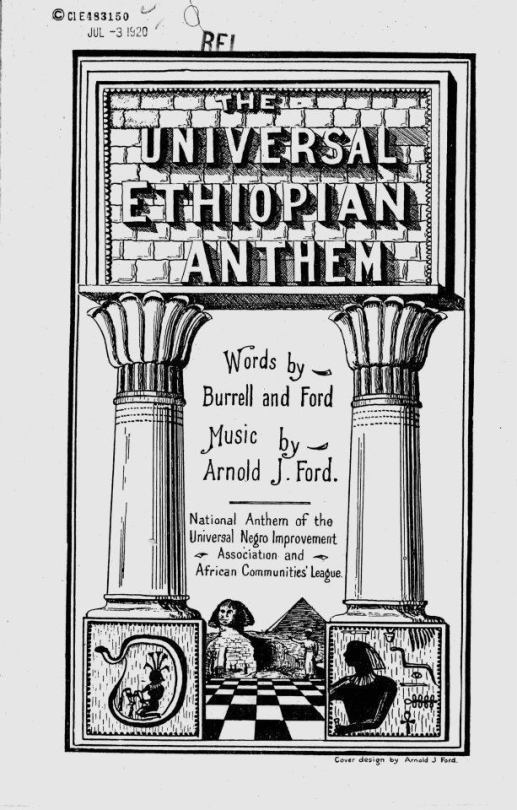
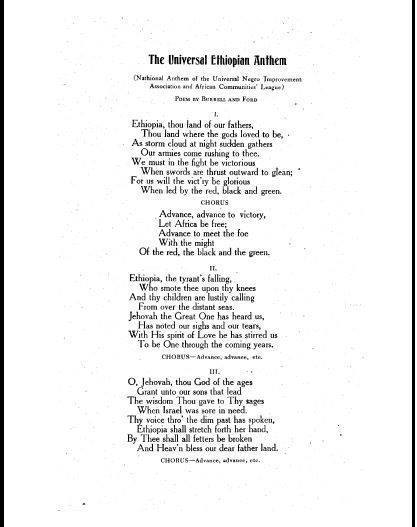

40. Resolved, That the anthem “Ethiopia, Thou Land of Our Fathers etc.,” shall be the anthem of the Negro race… adopted by the RasTafarites Universal Ethiopian Anthem.
Signatories of the Declarations of the Rights of Negro Peoples of the World capture the moment during the 1st International Convention of the Negro Peoples of the World.
Negro World editor William Ferris spots WEB Du Bois at the convention.
18 January Negro World SS Kanawah Antonio Maceo to sail for Bermuda, Cuba, Haiti, Jamaica, Panama. Sir Willocks governor general British Secretary of State for the Colonies Winston Churchill prohibit landing.
Advert Negro World Architects and Contracting Builders to sail to Liberia between January 25 February 20.
1921 Haitian Elie Garcia auditor general produce two reports on Liberia.
Son of Liberian President Hilary Johnson, Mayor of the Liberian capital, Monrovia, Gabriel Johnson, UNIA Potentate Leader of the Negro Peoples of the World along with George O Marke, Supreme Deputy Potentate in charge of the Sierra Leone division of the UNIA and accountant and stenographer, Resident Commissar Cyril A Crichlow sent to acquire land and property in Liberia 30 40 miles away from Monrovia farm owned by local Mrs.Moort however land quality.
Johnson previously a Brigader, his brother Attorney General, first cousin was also married to the later President D. B. King.
Edwin Barclay Liberia Secretary of Sate French and British bordering colonies of Sierra Leon and Ivory Coast.
February Garvey tours the West Indies and Central America also with the initiative of raising funds.
Hoover alerts immigration in Florida so that the Labour Department ports refuse his reentry however Hoover could not provide them with grounds.
28th February Garvey Amy Jacques and her younger brother Cleveland take the train to Key West where they board the USS Governor Cobb to Havana, Cuba.
7 March Liberia President Charles D. B. King arrives on the USS Panhandle in New York harbor, UNIA delegation meet hom at Waldorf Astoria Hotel.
Charles Latham American consul in Jamaica instructed to refuse Garvey a visa to Panama as well as a reentry visa into America.
Costa Rica 10, 000 people to see Garvey at Limon according to United Fruit company manger G. P. Chittenden one meeting two scrap baskets and one suitcase full of United States gold notes were collected and at another he stood beside a pile of gold notes which reached above his knees possibly as much as $50, 000.
Garvey introduced to President Julio Acosta in the capital.
Garvey granted visa by Panama visits the cities of Bocas Del Toro and Almirante in Panama although the response he received was not so much of an enthusiastic one but more.
Garvey travels to the city of Colon by submarine where he is greeting by the biggest crowd he has ever seen, they brake the windows of his train carriage and carry him out into a car but there are so many people on top of the car that the tyres puncture and the car has to be pushed.
May 31 June 1 Tulsa, Oklahoma riot Dick Rowland assault elevator in Drexel building, mob jail shots, Greenwood little Africa.

May June Tulsa, Oklahoma riot Dick Rowland assault elevator Drexel building mob jail shots Greenwood little Africa.
25th May the ship the SS Kanawah/Antonio Maceo, sets sail for Panama. boilers three days Kingston.
Garvey denied reentry visa generals voted counsellor general William Matthews sent to Washington to lobby the state department. staff visa control. Garvey advised by lawyer for the American consul to send a cable to state department requesting a visa in which event the visa was granted.
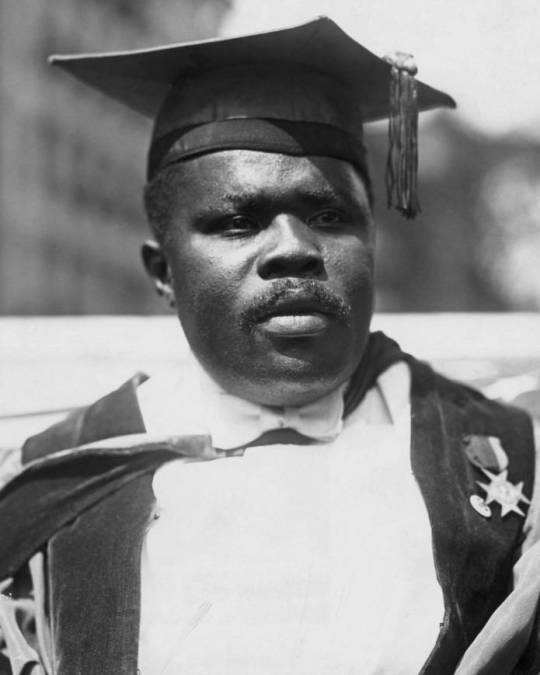
At the annual convention in August 1921 literary editor William Ferris and journalist John E Bruce knighted with order of the Nile, George Tobias with the order of Ethiopia and Henrietta Vinton Davis with Lady Commander of the Sublime order of the Nile.
Marcus Garvey quoted Psalm 68:31 on numerous occasions including in his Christmas message to the Negro Peoples of the World December 1921 as well as in his Emancipation day speech made at Liberty Hall New York city on 1 January 1922. https://tmblr.co/Z9elId2OPQ-fq
1922 January Garvey arrested for mail fraud but bailed for $2, 500, Garvey was brought to charge with mail fraud on the basis that the BSL had advertised the ship the Orion as SS Phyllis Wheatley which they did not yet actually own but were still in the process of negotiation for, Thompson, Garcia and George Tobias were also investigated, however, only Garvey was prosecuted.
May 22 UNIA Commissioner Robert Moseley invited to speak at Baptist church’s, arrested and fined for vagrancy in Jacksonville, Texas and separately also taken to the woods and horsewhipped.
Garvey Los Angeles local division and others parade Oakland California Frisco. Commander J.J. Hannigan San Francisco 400 new members.
May 27 Garvey marries Amy Jaques in Baltimore.
June 25 Garvey travels to Atlanta for a meeting with the Imperial Wizard of the Ku Klux Klan.
Garvey meets with and is interviewed by Hutson on his first visit to Belize 5 July Huton sent transcript of the recorded interview to Secretary of the Colonies the British PM Winston Churchill.
July office Harlem building floor above UNIA Publishing and Printing House the Messenger editorial Chandler Owens and A Philip Randolph William Pickens and Detroit preacher Robert Bagnall Garvey Must Go campaign.
Garvey and Amy picture.
May 27 Garvey marries Amy Jaques in Baltimore.
June 25 Garvey travels to Atlanta for a meeting with the Imperial Wizard of the Ku Klux Klan.
Garvey meets with and is interviewed by Hutson on his first visit to Belize 5 July Huton sent transcript of the recorded interview to Secretary of the Colonies the British PM Winston Churchill.
July office Harlem building floor above UNIA Publishing and Printing House the Messenger editorial Chandler Owens and A Philip Randolph William Pickens Detroit preacher Robert Bagnall.
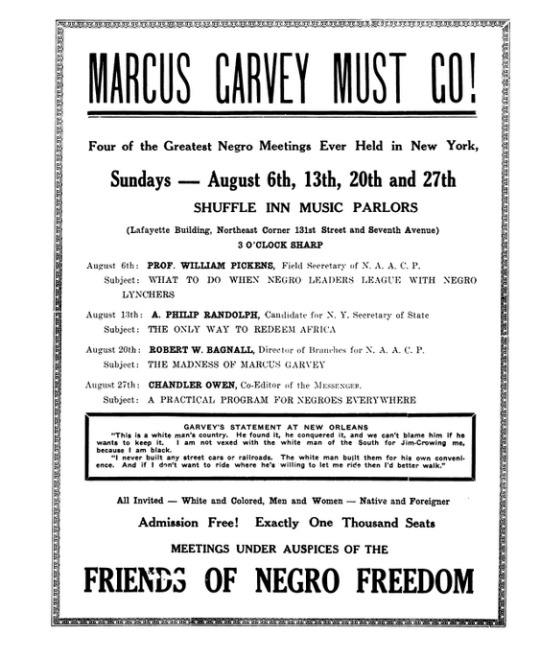
The Messenger. 6.9 (August 1922). William Pickens NAACP Detroit preacher, Robert Bagnall Messenger.
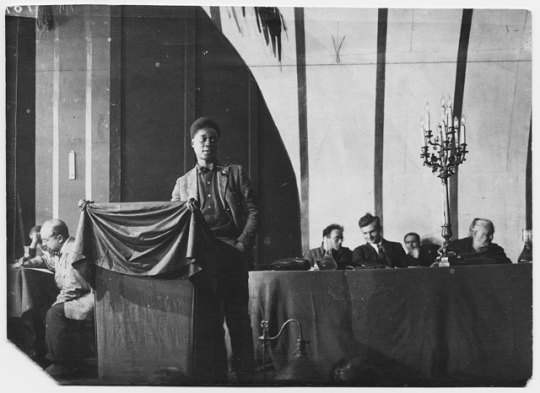
August Trinidadian pilot Hubert Fauntleroy Julian dubbed the Black Eagle of Harlem by H. Allen Smith because of his parachute jumps, flys biplane over UNIA parade and becomes head of the organisation’s new Aeronautical Department.
September 5 Randolph at 2305 7th Avenue receives package calls the police bomb squad open package containing a severed human hand.
November 9th Esau Ramus Philadelphia branch UNIA janitor New Orleans William Phillips.
Reverend Eason Baptist Church, St John 1st Street, shot in the back and forehead, dies from wounds on January 1923. William Shakespeare and Fred Dyer charged with Easons murder. Claude McKay in Kremlin, Russia.
November Max Eastman Fourth Congress of the Communist International Petrograd.

Otto Huiswould and Claude McKay, two leading early members of the Communist International (Comintern). They both addressed the Comintern in Moscow in 1922.
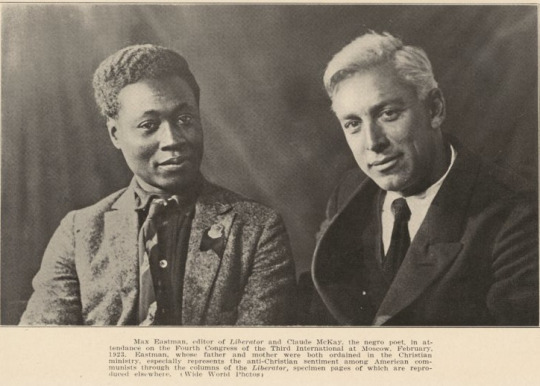

Claude McKay with Arthur Holitscher and Clara Zetkin in Russia - December, 1923.
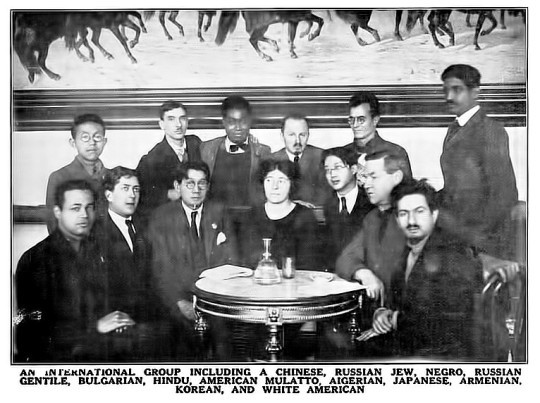
Claude McKay and International Group in Russia - December, 1923

McKay with Grigory Zinoviev and Nikolai Bukharin in 1923.
McKay also meets communist Leon Trotsky.
Philosophy and Opinions of Marcus Garvey by Amy Jaques Garvey 1923 Chapter 3 The Image of God
If the white man has the idea of a white God, let him worship his God as he desires. If the yellow man’s God is of his race let him worship his God as he sees fit. We, as Negroes, have found a new ideal. Whilst our God has no color, yet it is human to see everything through one’s own spectacles, and since the white people have seen their God through white spectacles, we have only now started out (late though it be) to see our God through our own spectacles. The God of Isaac and the God of Jacob let Him exist for the race that believes in the God of Isaac and the God of Jacob. We Negroes believe in the God of Ethiopia, the everlasting God — God the Father, God the Son and God the Holy Ghost, the One God of all ages. That is the God in whom we believe, but we shall worship Him through the spectacles of Ethiopia.
Ras Nasibu Emmanuel Oganden Hindenburg Wall Poem.
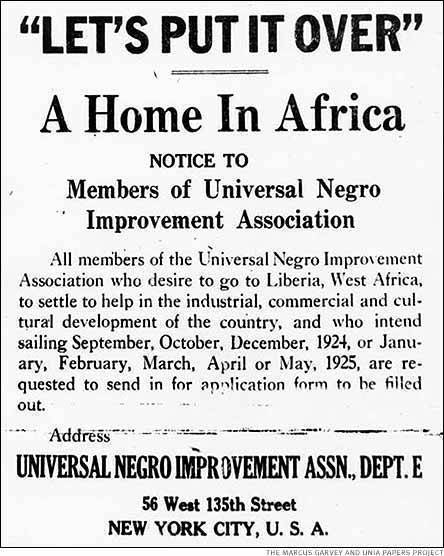
Edwin Barclay Liberias secretary of state French and British bordering colonies of Sierra Leone Ivory Coast disapproval.
Hilary Johnson clerk office Crichlow pulling weight 24 March sent cable ship $5, 000 steamer for sawmill.
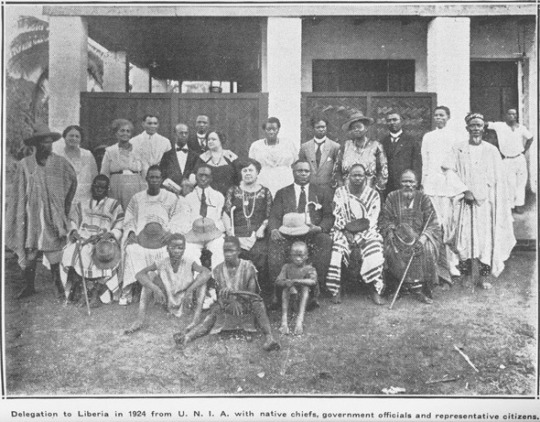
1 December UNIA delegation departs for Liberia via Lisbon, Portugal on the Cunard vessel SS Britannia.
1923 December Mc Kay Arthur Holitscher and Clara Zetkin in Russia. International Group in Russia. Grigory Zinoviev and Nikolai Bukharin.
1924 11th February UNIA delegation meets with President 3, 000 immigrants land in three colonies Cavalla, Sino and Grand Bassa as well as in Cape Mount.
16 March Robert Poston fever lobar pneumonia dies on board SS President Grant.
April 19 send material artisan technicians carpenter builder and mechanical engineer.
Seay 24 trained nurses to Belize Town as volunteers parenting teaching, sanitation, midwifery services.
May 19 Du Bois with Professor Wendell Phillips Dabney finally comes face to face with Garvey for the first time at the elevator in Sheraton Hotel, Cincinnati.
11th February meet with President 3, 000 immigrants land in three colonies Cavalla, Sino and Grand Bassa as well as in Cape Mount.
23 June 1923 Garvey sentenced to five years in prison for mail fraud. Garvey spends three months in the Tombs Jail Manhattan detention center and would be bailed for the sum of $15, 000 which was raised in campaign by Amy Jacques by September.

Bishop Alexander Mc Guire the first black archdeacon of the Protestant Episcopal Church ‘We have reasons to believe that his enforced solitude has clarified his vision’ 'Moses came back to Israel with new Revelation’ 'Negro everywhere will be the beneficiaries of the new ideas he has gained during his vacation’.
16 March Robert Poston fever lobar pneumonia dies on board SS President Grant.
April 19 send material artisan technicians carpenter builder and mechanical engineer.
Seay Twenty four trained nurses.
May 19 Du Bois with Professor Wendell Phillips Dabney finally comes face to face with Garvey for the first time at the elevator in Sheraton Hotel, Cincinnati.
June 4 mining engineer Wallace Strange.
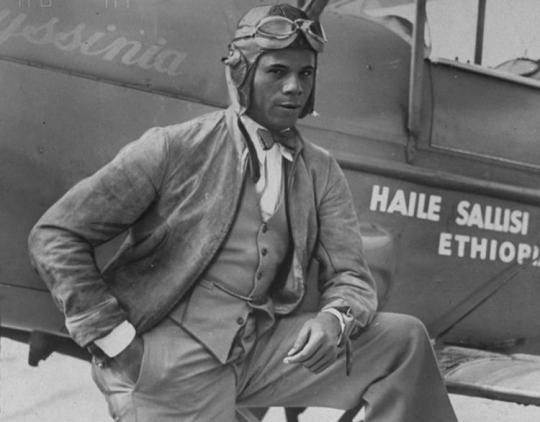
1924 July 4 UNIAS Hubert Fauntleroy Julian to make transatlantic flight from New York to Liberia via Atlantic city, New Jersey and the West Indies. Purchases seaplane christened Ethiopia I, crashes into Flushing Bay after one of the planes pontoons comes off.
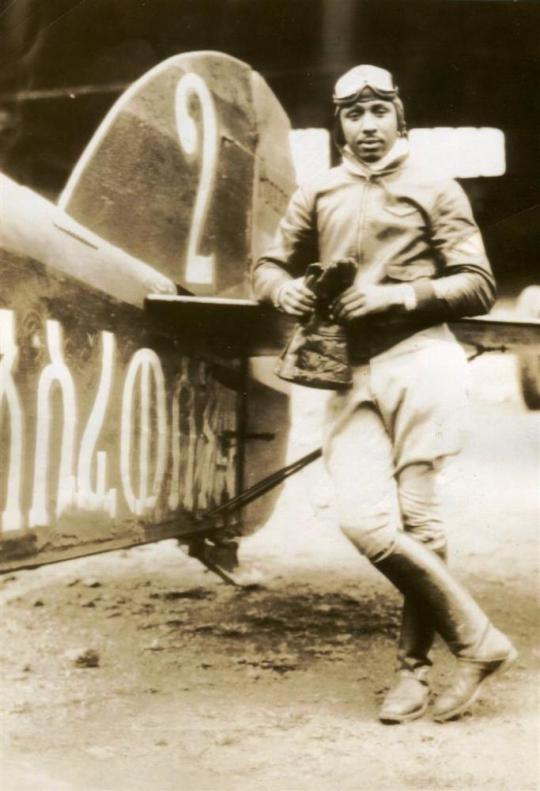
Robinson diploma in auto mechanics, Tuskegee civilian pilot training program there Melaku Beyan Ethiopian Army shot in the arm and exposed to mustard gas.
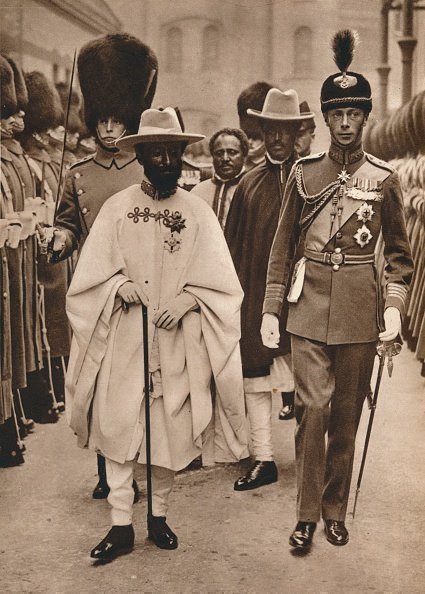

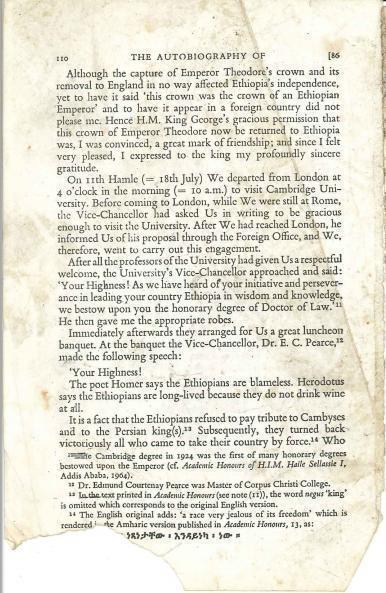

10 July Liberia Consul General in US press release stated that anyone from the UNIA in the US would not be allowed to land in the republic of Liberia the Liberian Consuls in the US instructed not to permit them visas. Wallace Strange Monrovia arrested and deported equipment auctioned Chief Justice J. J. Dossen of Liberia President ports refuse entry. given preference to the Firestone Rubber Plantation Company 1 million acres of land 5 to 10 cents per acre.

The Most Honorable Marcus Garvey is accompanied in the rear seat of his shiny 1920 Pierce Arrow Limousine by the Rev. R Van Richards at the 4th International Convention of the Negro Peoples of the World Opening Parade in Harlem, NY. His Secret Service (aka Knights of the Roundtable) ran alongside the President-General’s parade vehicle. Although its not visible in this photo, Mr. Garvey is also flanked in the rear by a banner reading Parent Body Division. (Negro World August 16, 1924, p.10)
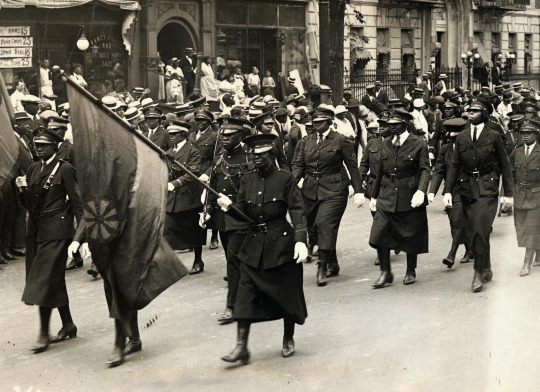
Uniformed Universal African Motor Corp marching up 7th Ave in Harlem, NY during the opening parade of the UNIA sponsored 4th International Convention of the Negro Peoples of the World in 1924.

Universal Motorcorp In Parade - 1924
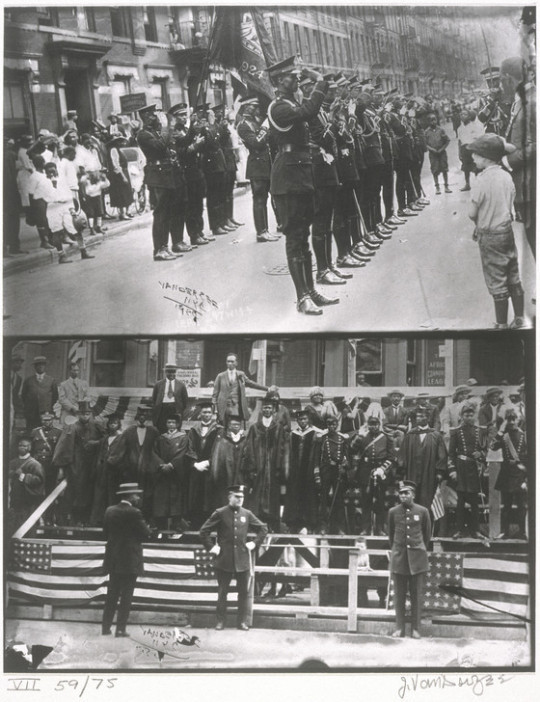
Executive Council Reviews Parade From Observation Deck and Universal African Royal Guard Parade Drill in Harlem, NY.

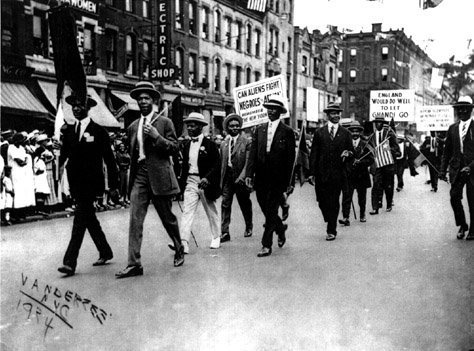
Contingent of the Detroit Division #125 in the opening day parade of the 1924 International Convention of the Negro Peoples of the World, hosted by the UNIA in Harlem, NY. USA. President Joseph A Craigen is seen leading the march with his Red, Black and Green Flag draped over his shoulder.

Dinner Scene at the Third Royal Court Reception of the UNIA at Liberty Hall, NY (Negro World August 30,1924, p.10)

Marucs Garvey in 1924 by James VanDerZee.


Marcus Garvey (right) with George O. Marke (left) and Prince Kojo Tovalu-Houenou. 1924. James VanDerZee (American, 1886-1983). Te Dahomean protonationalist Kojo Tovalou-Houénou declared at the same convention that “your association, Mr. President … is the Zionism of the Black Race.”^ Les Continents, 15 October 1924.

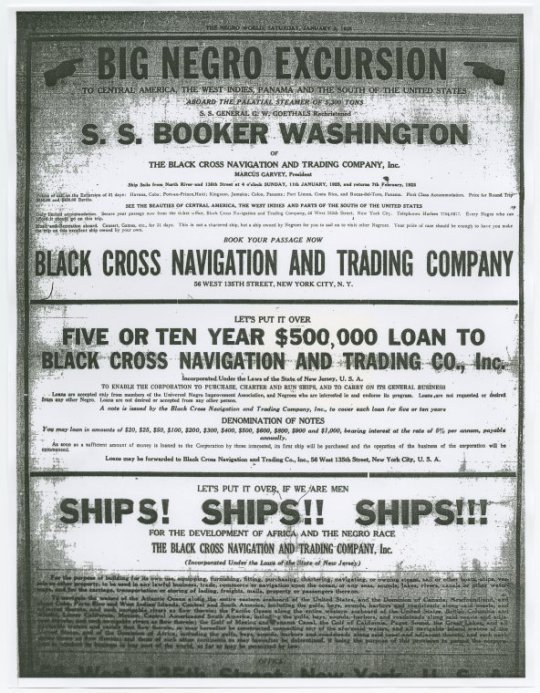
Big Negro Excursion [January 3, 1925, advertisement in the Negro World announcing the sailing of the S.S. Booker T. Washington to Central America, the West Indies, Panama, and the South of the United States.

Amy Jacques Garvey, Henrietta Vinton Davis and Marcus Garvey during the renaming of the ship from the 'General G.W. Goethals’ to the S.S Booker Washington.
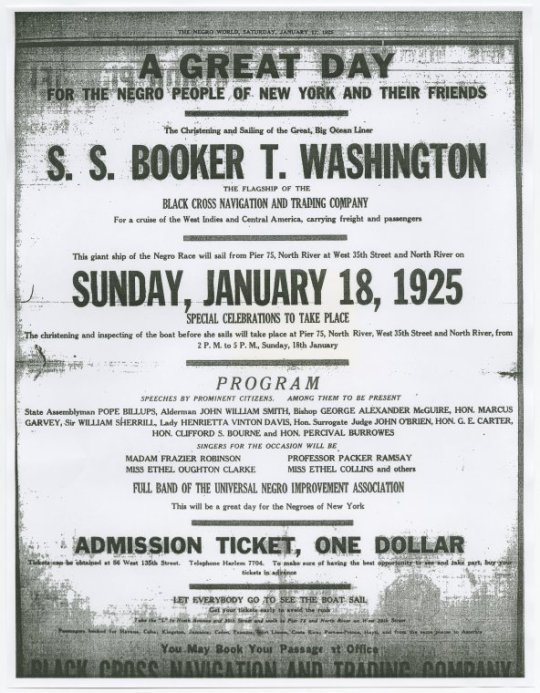

Marcus Garvey (center), President General of the African Republic, leaves court handcuffed to a deputy, Marshal Hecht, at left being taken into custody to begin serving his sentence at the Atlanta Federal Penitentiary on 8 February 1925.
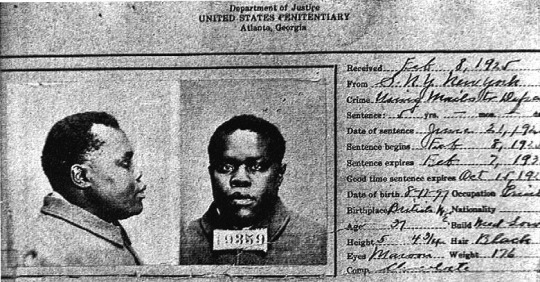
African Fundamentalism
From the editorial by Marcus Garvey orinted in the Negro World, 6 June 1925, as a front-page editorial; written in Atlanta Federal Penitentiary. Original headlines omitted. Creed reprinted in slightly revised form, under the title “African Fundamentalism,” as a UNIA poster, sold by mail order through the Negro World by Amy Jacques Garvey, 1925.
Fellow Men of the Negro Race, Greeting:
The time has come for the Negro to forget and cast behind him his hero worship and adoration of other races, and to start out immediately, to create and emulate heroes of his own.
We must canonize our own saints, create our own martyrs, and elevate to positions of fame and honor black men and women who have made their distinct contributions to our racial history. Sojourner Truth is worthy of the place of sainthood alongside of Joan of Arc; Crispus Attucks and George William Gordon are entitled to the halo of martyrdom with no less glory than that of the martyrs of any other race. Toussaint L'Ouverture’s brilliancy as a soldier and statesman outshone that of a Cromwell, Napoleon and Washington; hence, he is entitled to the highest place as a hero among men. Africa has produced countless numbers of men and women, in war and in peace, whose lustre and bravery outshine that of any other people. Then why not see good and perfection in ourselves?

Marcus Garvey at Atlanta Federal Prison in December 1926.
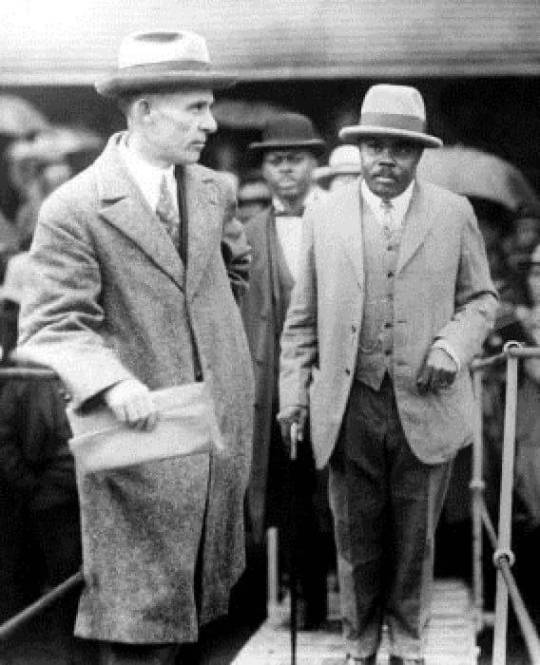
Garvey was released in November 1927 and boarded in New Orleans to be deported to Jamaica where he arrived at Orrett’s Wharf in Kingston.


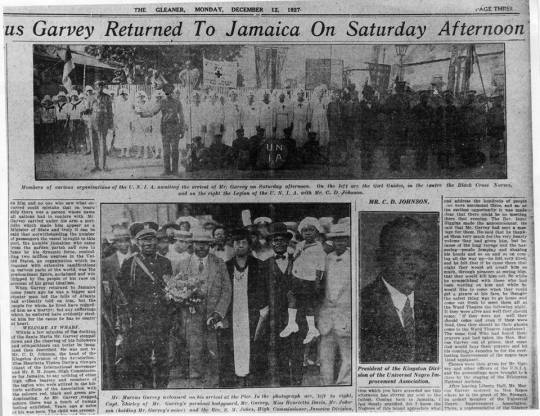
1928 October 7 Ras Tafari Makonnen Crown Prince and Regent Plenipotentiary of Ethiopia is crowned Negus (King) Empress Zawditu daughter of Emperor Menelik II seated to his left.
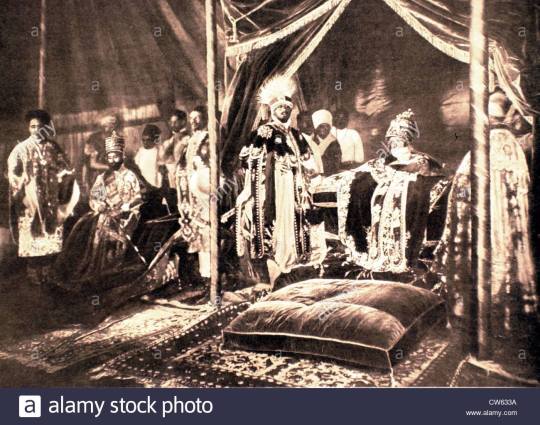
Julian at the Emperor Haile Selassie’s pre coronation show, parachutes landing in front of the Emperor, the Emperor grants him citizenship, the rank of colonel as well as the highest honour in Ethiopia, the order of Menelik.
Julian at the Emperors coronation dress rehearsal crashes the Emperors personal plane de Havilland Gipsy Moth into a Eucalyptus tree, the plane was given to the Emperor as a gift from Selfridge’s department store in London.
18th August 1930 performance of Garveys play Coronation of an African King, King Cudjoe of Sudan.
These shall make war with the Lamb, and the Lamb shall overcome them: for he is Lord of lords, and King of kings: and they that are with him are called, and chosen, and faithful. Revelation 17:14

And I saw heaven opened, and behold, a white horse, and He who sat on it iscalled Faithful and True, and in righteousness He judges and wages war.
His eyes are a flame of fire, and on His head are many diadems; and He has a name written on Him which no one knows except Himself. He is clothed with a robe dipped in blood, and His name is called The Word of God.
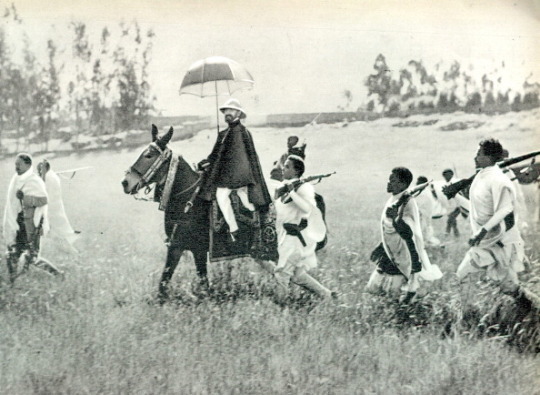
And the armies which are in heaven, clothed in fine linen, white and clean, were following Him on white horses.


November 2 Negus Tafari coronation as Emperor Haile Selassie Time weekly magazine. National Geographic Magazine monthly Volume LIX Number 6 1931 June.
1932 E.A. Wallace Budge publishes his second edition of the Ethiopic Book of the Glory of Kings.
1933 Leonard Percival Howell began to preach about the Ethiopian Emperor Haile Selassie in the parish of Saint Thomas at largely attended meetings accused of ‘Blantant swindle selling pictures at 1s per piece to boost the sale of King RasTafari of Abyssinia son of King Solomon by the Queen of Sheba. Howell held meetings in Trinity Ville and Seaforth of 300 and in 1934 was trailed and sentence for two years sedition and even blasphemy and Robert Hinds ‘his disciple’ led astray by evil doctrine sentenced to one year at the Saint Thomas Circuit Court in Morant Bay by Chief Justice Robert Lyall Grant.
Du Bois resigns at The Crisis to work at Atlanta University.
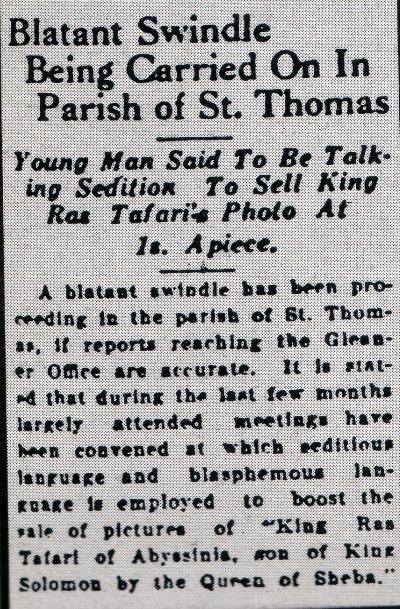
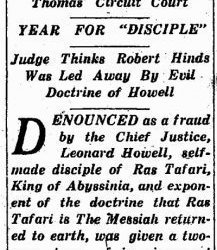
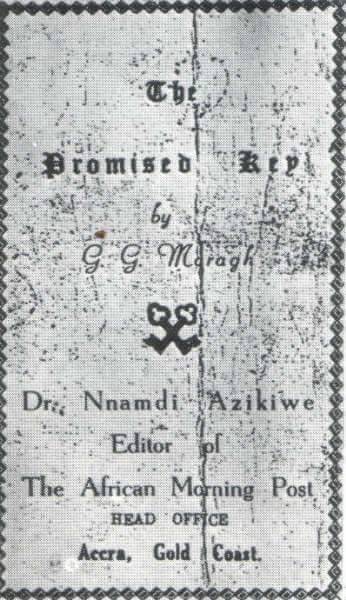
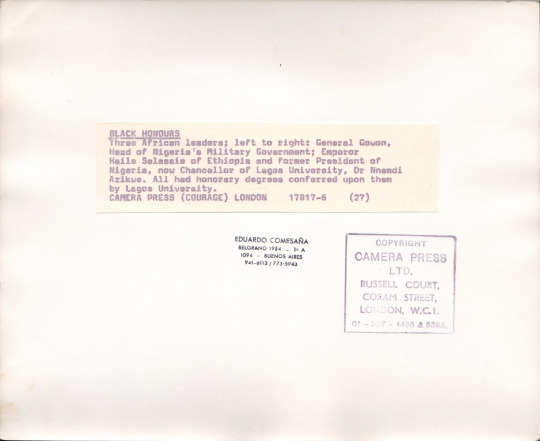

Meanwhile the second ItaloEthiopia war began over the Italo Ethiopia Treaty of 1928 similarly to the first ItaloEthiopia war in 1895.
The Italians built a military post on within the border of Ethiopia in 1930 which caused the WalWal incident in 1934.
The members of the League of Nations especially France and Britain failed to comply with Article X of the covenant and did not act to assist Ethiopia under Italian aggression, they wanted Italy as an ally against Germany, it was Italys plan to make Ethiopia an East African colony along with Eritrea and Italian Somalian.
1935 January Pierre Laval and Benito Mussolini sign the Franco Italian agreement which gave Italy a part of bordering French Somliland (now Djibouti) as part of Eritrea as well as the Aouzou strip in French Chad in Italian Libya.
Du Bois publishes his Black Reconstruction in America.
During the Ethiopian Crisis people from all other the world rallied support for the Emperor including The International African Friends of Ethiopia among whos members included Amy Ashwood Garvey, Jomo Kenyatta, C. L. R. James and George Padmore.
July
August

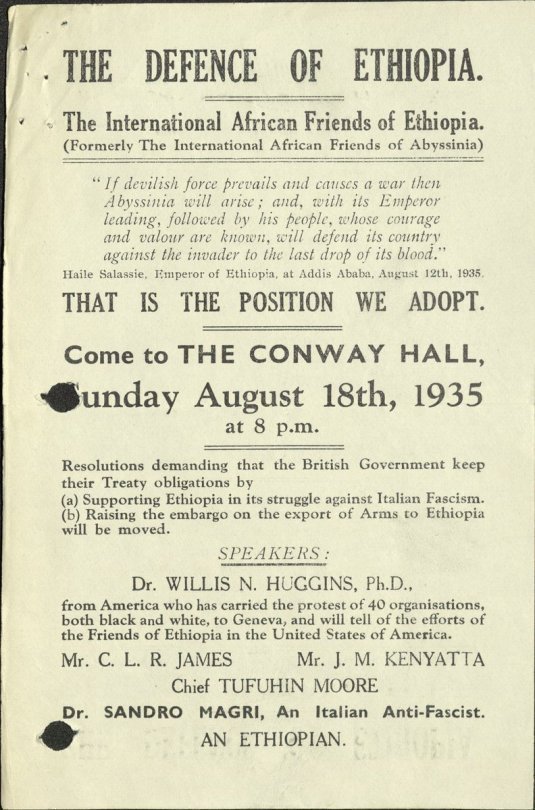

The Honorable Amy Ashwood Garvey speaks before a London crowd at Trafalgar Square, denouncing the Italian invasion of Ethiopia.“No race has been so noble in forgiving, but now the hour has struck for our complete emancipation. We will not tolerate the invasion of Abyssinia.“ Mrs. Garvey said: "In this struggle, the black women are marching beside the men. You white people brought us out of Africa to Christianize us and civilize us, but all the Christianity and civilization you gave us for 320 years was slavery. You have talked of ‘The White Man’s burden.’ Now we are carrying yours and standing between you and Fascism.” She warned the British Government that if this became a struggle between the “Blacks” and the “Whites” that three quarters of the people of the Empire are colored. Jamaica Gleaner, September 11, 1935.
August 12 Ethiopia also pleads for the embargo to be lifted.
October 5 Italian I Corps take Adigrat.
October 6 Italian II take Adwa.
October 15 General Emilio De Bono forces advance from Adwa occupy Axum Bono loots Obelisk.
October Saint Lucia Clarkes Theatre International Friends of Ethiopia Foreign Enlistment Act.
November The League of Nations places sanctions.
December Samuel Hoare Pierre Laval Pact was secretly agreed to sign OgadenTigray and Southern parts of Ethiopia away to Mussolini when this was found out they were forced to resign.
December 30 Red Cross unit at Dolo bombed, Egyptian ambulance at Bulall attacked, Egyptian medical unit at Daggah Bur.
1936 January 12 to 16 Battle of Genale Doria.
January 20 to 24 First Battle of Tembien Ras Kassa Phosgene gas makale.
February 10 to 19 Battle of Amba Bradam Ras Mulugeta.
February 27 to 29 Second Battle of Tembien Ras Kassa and Ras Seyoum.
March Red Cross camp Quoram.
Hitler militarisation of Rhineland.
March Battle of Shire Ras Imru. 969 Italian
March 22 Regia Aeronautica bomb Harar.
March 26 March of Iron Will Dessie to Addis Ababa.
March 31 Battle of May Chew.
Stresa Front.
April 4 mustard gas Lake Ashangi Regia Aeronautica.
April 14 Graziani Ras Nasibu Emmanuel Battle of Ogaden.
May His Imperial Majesty boards the train from Addis Ababa to Djibouti, with the gold of the Ethiopian Central Bank. According to Barker, A. J. (1971). Rape of Ethiopia, 1936. New York: Ballantine Books, Graziani suggested to Mussolini that he have the train bombed which however he didn’t see fit to do so.
The Emperor and hunting party in Ethiopia before the Italian invasion drove him into exile. It was taken on the Addis Ababa to Djibouti railway line in the early 1930s just after he’d been officially crowned as Emperor.
May 4 H.I.M. sails from Djibouti in the British cruiser HMS Enterprise.
May 5 Addis Ababa taken.
May 8 arrives at Haifa.
from Mandatory Palestine sails to Gibraltar on the way to Britain.
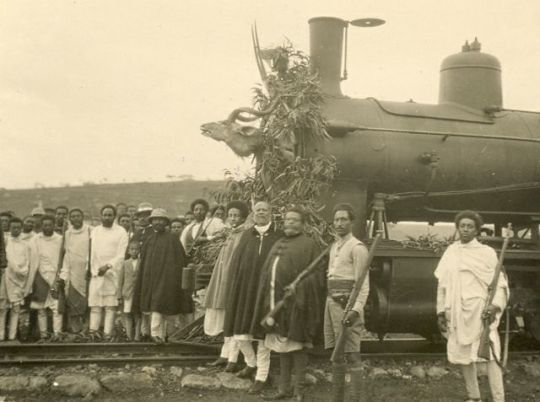
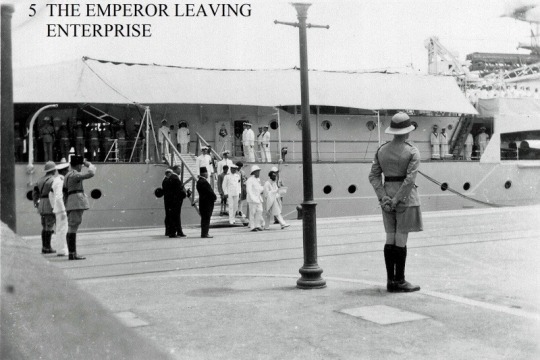
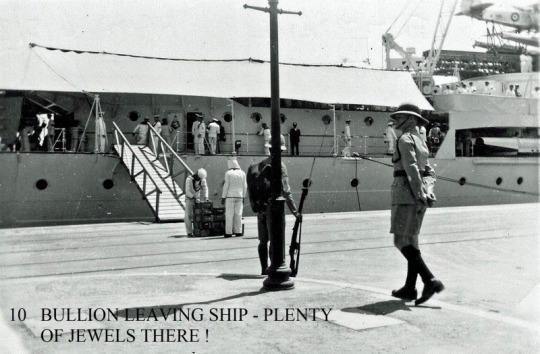

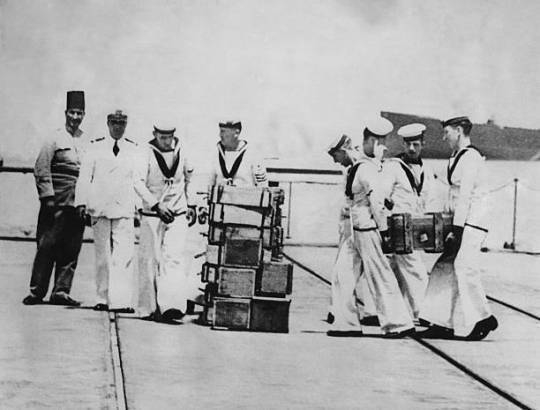

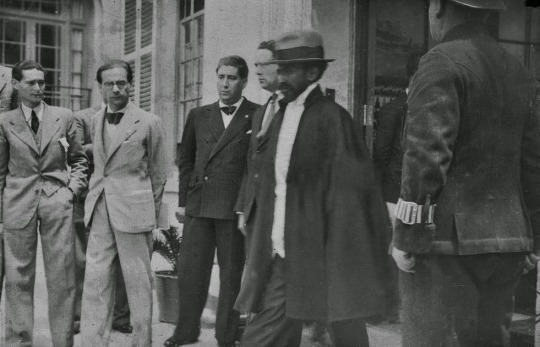
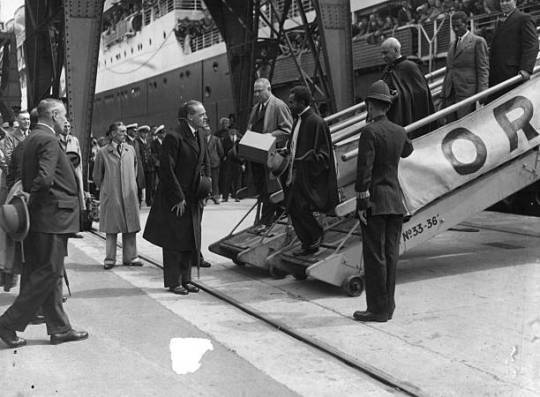
May 5 after the fall of Addis Ababa the sanctions are dropped.
Benito Mussolini also used poison gas and mustard gas which were exposed by International Red Cross.
June 30 The Emperor himself addresses the League of Nations in Geneva, Switzerland.
Howell marries Teneth Bent.
Du bois visits Nazi Germany, China and Japan.
July 4 The League of Nations votes to lift sanctions imposed against Italy.
July 15 Sanctions lifted.
Mussolini and Hilter become allies during the Spanish Civil War, Mussolini declares war on Britain and France attacks British in Egypt Sudan, Kenya, British Somaliland.

1937 the Brotherhood of Sleeping Car Porters and the pullman company enter contract together.
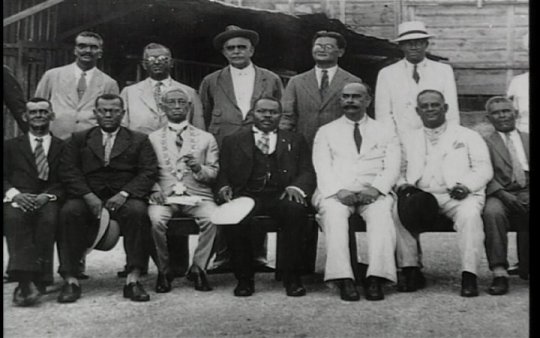
Marcus Garvey (seated in dark suit with fan) and the Port of Spain Trinidad City Council, 1937. Mayor Alfred Richards is to Mr. Garvey’s right.
Tubal Uriah Buzz Butler strike policeman set alight and died colleagues riots. George Padmore International African Service Bureau C. L. R. James author of The Black Jacobins
1938 January strike for higher wages at Serge Island in the parish of Saint Thomas 1, 400 workers, armed 24 injured, 60 arrested.
April 29 Westmoreland strike 4 killed, 13 injured and 105 arrested.
May 23 Kingston strike.
Howell sent to Bellevue Asylum.
1939 April Howell founds the Ethiopian Salvation Society and purchases 485 acres in the hills of Saint Catherine, 5 miles on the road to Sligoville, the free community founded by English Reverend Baptist Minister James Mursell Phillippo in 1843, named after the 2nd Marquess of Sligo, Governor of Jamaica, Saint Catherine also being the parish with the most number of active sugar plantations at the time Howell established this settlement which became to be known as Pinnacle.
1941 July 14 Pinnacle raided for first time 72 arrested.
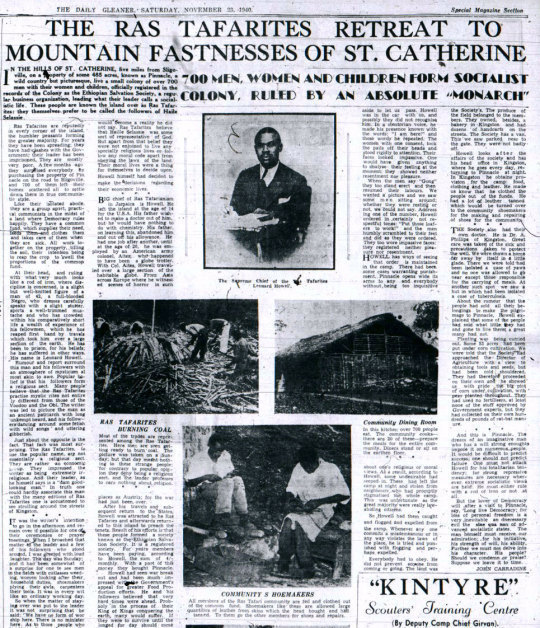
Randolph Madison Square Gardens.
July 24 Howell arrested sentenced to 2 years released 1943 April.
December 23 Howells Wife Teneth Bent Howell dies, Howell accused of murdering her and arrested but is acquitted 1944 April 6.
1948 Ganja Dangerous Drugs Act began to be used against Rastafarite.
1948 January 8 Howell 6 months in prison.
1950 Randolph, Roy Wilkins, Executive Secretary of the NAACP, and, Arnold Aronson, of the National Jewish Community Relations Advisory Council found the Leadership Conference on Civil Rights (LCCR).
1951 January 18 Howell sentenced to 2 year in prison for Ganja.
1954 April Howell arrested for illegal practice of medicine. May two of Howells adolescent sons arrested under false pretense. May 27 biggest Ganja raid as of that time £3, 000 seized.
1957 Randolph Prayer Pilgrimage for Freedom with Martin Luther King Jr.

1958 Pinnacle burnt by Police members disburse.
Randolph Youth Marches for Integrated Schools in Washington, DC.
1960 Howell arrested for Ganja Tredegar Park and sent to Bellevue.

1961 21 April Bob Marleys teacher Nyahbinghi elder Mortimer Planno visits Ethiopia meets His Imperial Majesty Emperor Haile Selassie, April 26 visits Nigeria meets NnamdiAzikiwe, May 10 visits Ghana meets Kwame Nkrumah, May 16 visits Liberia and May 21 visit Sierra Leone meets I.T.A. Wallace.
12th April 1963 Bad Friday Coral Gardens Massacre.

May 25th the Organisation of African Unity was formed with the Emperor Haile Selassie as its chairman and its headquarters in Ethiopias capital Addis Ababa.
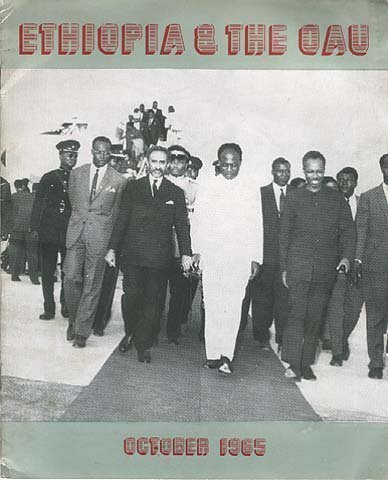


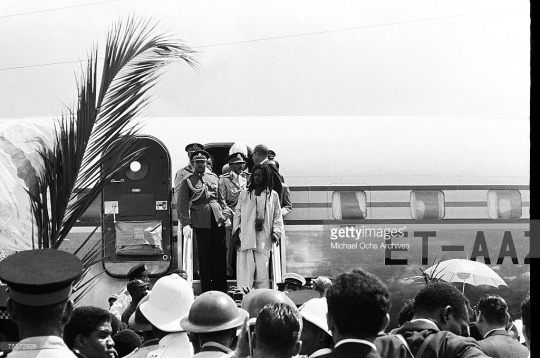
1966 April 22nd Groundation day Haile Selassie Jamaica visit H.I.M. with Mortimer Planno.
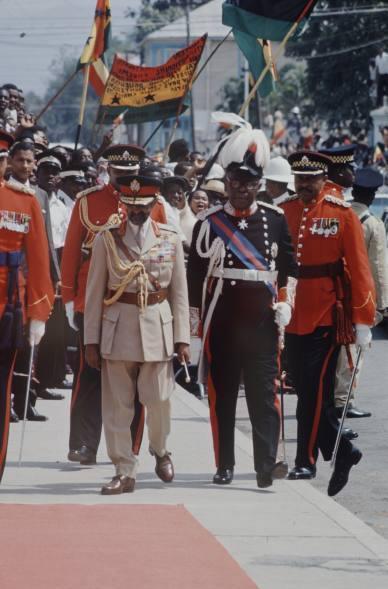

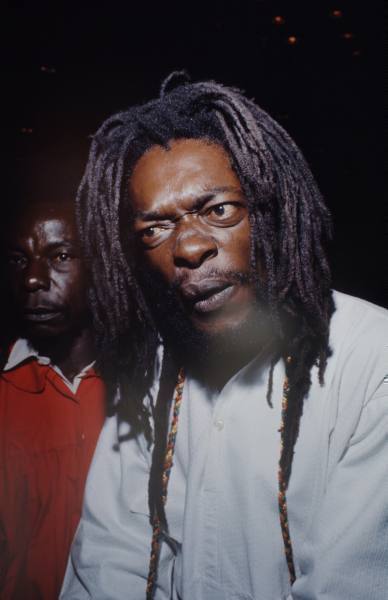
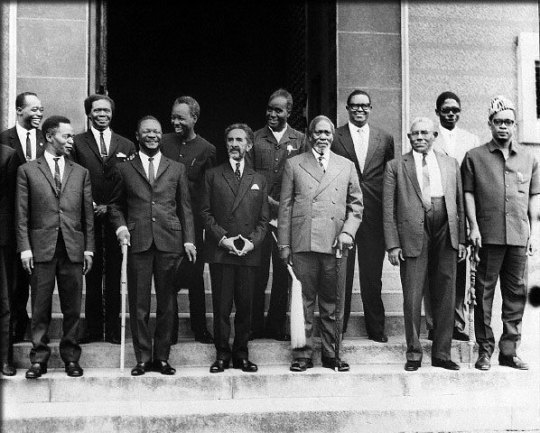
December 22, 1967 Kampala, Uganda- The heads of state and the leaders of governments of East and Central Africa are pictured prior to the opening of their summit conference. Standing in the front row are (L-R): Mr.Kayibanda, President of Rwanda; Mr. Jean B. Bokassa, President of the Central African Republic; Emperor Haile Selassie of Ethiopia; Dr.Jomo Kenyatta, President of Kenya; Mr. El Azhari, President of the Sudan; and Lieutenant General Joseph Mobutu, President of the Republic of the Congo.
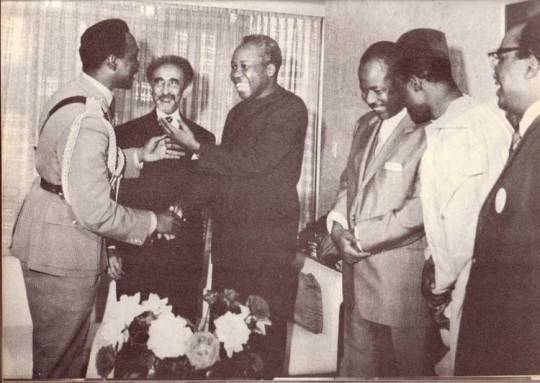
Nigeria & Tanzania reconciled at Africa Hall.

Mediating between Senegal & Guineain Monrovia, Liberia.

Settling differences in the internal crisis in the Sudan.
1978 March arrested for Ganja.
1979 Gunmen terrorize Rastafarites at Pinnacle.
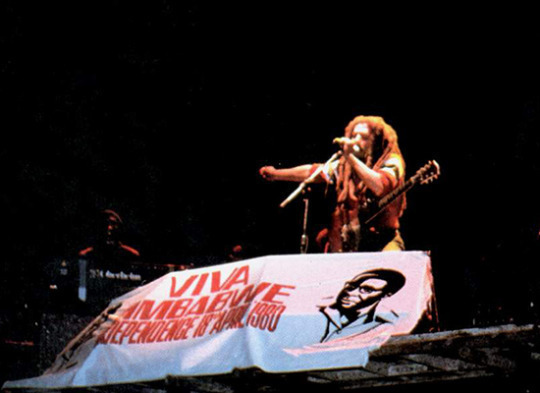
1980 April 18th Bob Marley performs his Zimbabwe song in Zimbabwe at the Independence celebration in Rufaro Stadium Harare.

1986 July 14th - 27th Ras Boanerges Rastafari Focus Conference at the Commonwealth Institute in London.
6 notes
·
View notes
Text
“Almost every year begins on January 1 – except 1942. That year began on December 7, 1941.” – Hedda Hopper, December 27, 1942, courtesy The Chicago Tribune
Indeed. The moment Japanese fighter planes attacked the American naval base at Pearl Harbor that December 7 all thoughts turned toward war. Like most American industries the movie business stepped up. Stars joined the force to fight for our freedom and went on Victory tours to sell war bonds. Movie studios made training films and dedicated impressive amounts of resources to the war effort. And Hollywood entertained with an impressive list of movie productions. I was reminded of what a memorable year it was when I gathered the list of 1942 releases. I think you’ll agree that as far as entertainment goes 1942 was a year of extraordinary highs and heartbreaking lows as one of the community’s most beloved members died tragically as the year commenced.
The calendar I’ve put together below is an homage to 1942, its entertainment happenings and its movies, which are now 75 years old and celebrating their diamond anniversary. I do not include the many atrocities that were occurring on those days as those or were being planned. This is not because I don’t recognize them and the many lives lost, but simply because this is a classic movie blog. With that in mind allow me to honor 1942 in entertainment…
Notable movies released in 1942:
This slideshow requires JavaScript.
Top movie stars of 1942 according to Quigley’s:
Abbott & Costello
Clark Gable
Gary Cooper
Mickey Rooney
Bob Hope
James Cagney
Gene Autry
Betty Grable
Greer Garson
Spencer Tracy
Notables born in 1942:
Barbra Streisand, Muhammad Ali, Aretha Franklin, Harrison Ford, Martin Scorsese, Joe Biden, Jimi Hendrix, Annette Funicello, Sandra Dee, Carole King, Lou Reed, Brian Wilson, Jerry Garcia, Paul McCartney, Madeline Kahn, Genevieve Bujold, Barry Levinson, Michael York, Yvette Mimieux
1942 Hollywood news, happenings and trends
How much did things cost in 1942? Take a look at this list from the Morris County Library. I find many items noted on the list astonishing by today’s standards especially considering that due to WWII the prices of most products increased. By the way, going to the movies cost about 30 cents in 1942 and – in many places – it was a big production.
Glenn Miller and his Orchestra start off 1942 with their version of “Chattanooga Choo Choo” topping the charts at number 1. Written and composed by Mack Gordon and Harry Warren respectively, the song is featured in H. Bruce Humberstone’s 1941 musical, Sun Valley Serenade and is nominated for the Best Music, Original Song Academy Award. “Chattanooga Choo Choo” is also listed on AFI’s 100 Movies…100 Songs list in 2004. The single was also the first single since 1927’s My Blue Heaven to sell 1 million copies, and RCA Victor gave Glenn Miller the first gold record ever as a reward.
Wonder Woman made her debut in All-Star Comics at the end of 1941, but was featured on the cover of a new comic book, Sensation Comics, at the beginning of 1942. Drawn by Harry G. Peter Wonder Woman caused quite the stir with religious conservatives who had a problem with her attire. Or lack thereof. Despite that this superhero has remained one of the most popular and admired for over eighty years. Aside from her comics appearances, Wonder Woman has enjoyed stints in literature, all types of periodicals, cartoons, art, motion pictures and television. She has also stood behind important causes, sold products, volunteered for health awareness campaigns and most recently, she was named a UN Honorary Ambassador for the Empowerment of Women and Girls.
January 1942 saw the premiere of Hollywood Detective Magazine. Dan Turner, also known as the Hollywood Detective, was a fictional hard-boiled private detective working the backlots and movie sets of Hollywood in the 1930s and 1940s. Written by Robert Leslie Bellem, Turner’s exploits were first featured in the pulp fiction magazine Spicy Detective and with his increasing popularity jumped to his own magazine featuring a monthly novel and a collection of short stories covering his cases. Dan Turner – Hollywood Detective ran from January 1942 until October 1950. (The Vintage Library)

George Brent and Ann Sheridan tie the knot on January 5. They divorced exactly one year later, on January 5, 1943.
Several versions of “Deep In the Heart of Texas,” lyrics by June Hershey and music by Don Swande, made the Billboard charts in 1942. Such popular names as Bing Crosby and Gene Autry recorded the song that year. Most interesting about this work as it pertains to 1942 and WWII, however, is the fact that it was banned by the BBC, which decided that playing “Deep In the Heart of Texas” during working hours might cause “factory hands” due to its infectious melody. If that happened workers would neglect their tools while clapping hands in time with the song. (popculture.us)
“Deep In the Heart of Texas” made several appearances in the movies: Tex Ritter and the Jimmy Wakely Trio sing it Elmer Clifton‘s 1942 musical Western of the same name. The song is also featured in William Morgan‘s Heart of the Rio Grande (1942) with Gene Autry and Smiley Burnette doing the honors. June Haver and Gloria DeHaven perform the song with the Harry James Orchestra in Richard Sale‘s I’ll Get By (1950). In 1951 Wendell Corey and Jane Powell give it a go in Rich, Young and Pretty and Susan Hayward (dubbed by Jane Froman) sings it in Walter Lang‘s With a Song in My Heart (1952).
On Jan 10, 1942 Ava Gardner marries Mickey Rooney. The union lasted until May 1943. Years later Ava would refer to Mickey as, “The smallest husband I ever had, and the biggest mistake, but I do owe Mickey one thing: he taught me how much I enjoyed sex.”

Gardner and Rooney on their wedding day
A tragic happening rocked Hollywood and the world on January 16 when Carole Lombard was killed in a plane crash near Las Vegas returning from a War bond tour. Lombard had just completed a major fundraising effort, raising over $2 million, when the plane she took en route to Los Angeles from Las Vegas crashed into Mount Potosi in Nevada killing everyone on board.
“She was without guile, honest, a friend of the underling. There’ll never be another Carole.” (Hedda Hopper)

Katharine Hepburn and Spencer Tracy team for the first time in George Stevens‘ Woman of the Year (1942), which enjoys its New York premiere at Radio City Music Hall on February 5. This was the first of nine films in which Tracy and Hepburn co-starred over a period of 25 years. Their final film together was Stanley Kramer‘s Guess Who’s Coming to Dinner (1967).
Archie Comics debuts on February 10 as a Winter 1942 edition. The character of Archie first appeared in Pep Comics #22 in 1941 and in no time “America’s Typical Teenager” became popular enough to have his own comic book series. I don’t believe Archie ever made it onto the big screen, but there may have been a direct-to-DVD movie release. Where Archie thrived, however, was on radio since 1943 and TV starring in several animated series beginning in 1968.

“Moonlight Cocktail” by Glenn Miller and Hiss Orchestra hits number 1 in February and stays there until May. Several big names recorded the song through the years, but a standout for movie lovers might be Chico Marx’s piano rendition in Archie Mayo‘s A Night in Casablanca (1946).
The 14th Academy Awards honoring 1941 film releases is held at the Biltmore Bowl of the Biltmore Hotel on February 26, 1942. The winners include Best Picture from 20th Century Fox, John Ford’s How Green Was My Valley, the Best Director honor goes to John Ford, Gary Cooper is chosen Best Actor, Joan Fontaine Best Actress, Best Supporting Actor is Donald Crisp and Best Supporting Actress, Mary Astor.

14th Academy Awards Acting Honorees: Gary Cooper, Joan Fontaine, Mary Astor and Donald Crisp
The Award for Best Documentary – Short Subject is inaugurated at the 1942 Academy Awards. The first trophy is given to the Canadian production of Churchill’s Island (1941).
On April 30, 1942, more than twenty Hollywood stars are invited to the White House by First Lady Eleanor Roosevelt before opening their musical revue extravaganza that played in fourteen cities and netted $800,000 for Army and Navy relief funds. The “Hollywood Victory Caravan,” traveled across the country in a special train, performing songs, dances, skits, playlets, operatic pieces, and spectacular ensemble numbers. The production, hosted by Bob Hope and Cary Grant, was considered by the New York Times to be “the most ambitious money-raising project ever staged by the theatrical world.” (Library of Congress)
(Seated L-R) Oliver Hardy, Joan Blondell, Charlotte Greenwood, Charles Boyer, Rise Stevens, Desi Arnaz, Frank McHugh, Matt Brooks, James Cagney, Pat O’Brien, Juanita Stark, Alma Carroll; (Standing L-R) Merle Oberon, Elanor Powell, Arleen Whelan, Marie MacDonald, Fay McKenzie, Katharine Booth, Mrs. Roosevelt, Frances Gifford, Frances Langford, Elyse Knox, Cary Grant, Claudette Colbert, Bob Hope, Ray Middleton, Joan Bennett, Bert Lahr, Mark Sandrich, Jack Rose, Stan Laurel, Jerry Colonna, and Groucho Marx
“Tangerine” by Jimmy Dorsey and His Orchestra hits number 1 the week of May 9 and stays there for 6 weeks. With music and lyrics by Victor Schertzinger and Johnny Mercer respectively, “Tangerine” was introduced to the masses in Schertzinger’s The Fleet’s In, which was released in January 1942. The Fleet’s In stars Dorothy Lamour, William Holden, Eddie Bracken and, making her feature film debut, Betty Hutton.
Bing Crosby records “White Christmas” on May 29. The song hit number 1 on October 31st and remained there through the middle of January 1943, becoming the greatest selling record to date. “White Christmas” has been recorded more times than any other Christmas song in history, but it’s Crosby’s version that remains significant holding the number 2 slot on the “Songs of the Century” list behind Judy Garland’s “Over the Rainbow” as determined by the National Endowment for the Arts and the Recording Industry Association of America. Written by Irving Berlin, “White Christmas” is featured in Mark Sandrich’s Holiday Inn and won the Academy Award for Best Original Song. The song is also featured in another Crosby film, Michael Curtiz‘s White Christmas, which became the highest-grossing film of 1954.
Curtiz’s Yankee Doodle Dandy starring James Cagney and Joan Lesley enjoys its New York premiere on May 29th, Memorial Day. The movie received eight Academy Award nominations winning for Best Actor, Best Sound, Recording and Best Music, Scoring of a Musical Picture. Warner Bros. took full advantage of the movie’s patriotic theme to help the war effort as did the film’s stars. For the first time in his entire career, James Cagney attended the premiere for one of his films. Rather than tickets for its opening night premiere, the studio sold war bonds and (reportedly) raised over $5 million.
Also on May 29th – beloved rogue and admired actor, John Barrymore dies from cirrhosis of the liver and kidney failure at age 60.
William Wyler‘s Mrs. Miniver starring Greer Garson and Walter Pidgeon enjoys its New York premier on June 4th. Mrs. Miniver played for ten weeks at Radio City Music Hall, one week less than Garson’s other 1942 release, Mervyn LeRoy‘s Random Harvest released in later that year. Mrs. Miniver went on to receive 12 Academy Award nominations including five for acting making it the first movie to receive that many in acting categories. The movie won four Oscars: Best Picture, Best Director, Best Actress for Greer Garson and Best Supporting Actress for Teresa Wright. Considered a magnificent achievement in film, Winston Churchill once said that Mrs. Miniver had done more for the war effort than a flotilla of destroyers and Wyler admitted that he made the film for propaganda reasons.
Myrna Loy marries John Hertz Jr. in New York City on June 6, about a week after her divorce from Arthur Hornblow became final. Mr. Hertz was the second of Ms. Loy’s four husbands.
The Office of War Information (OWI) was Created on June 13, 1942. Radio programs, newsreels and films were an essential part of the U.S. propaganda machine spearheaded by the OWI. Elmer Davis, the OWI Director in 1942, said of this process, “The easiest way to inject a propaganda idea into most people’s minds is to let it go through the medium of an entertainment picture when they do not realize that they are being propagandized.”
Norma Jeane Mortenson, later known the world over as Marilyn Monroe marries husband James Dougherty on June 19. The union lasted four years. This was the first of Monroe’s three marriages.
On June 29…
Audie Murphy enlists in the military on June 30 after lying about his age. By the War’s end Murphy earned an unparalleled 28 medals, he’d been wounded three times and had yet to reach his 21st birthday. Audie Murphy returned to a hero’s welcome in the United States. His photograph appeared on the cover of Life magazine and he was persuaded by James Cagney to embark on an acting career. (Arlington)
It’s not easy to find exact dates of when people actually enlisted for military service, but – as you know – many other Hollywood stars signed up for active duty in 1942 including Henry Fonda, Tyrone Power, William Holden, Gene Autry, Carl Reiner, Carroll O’Connor and Clark Gable. Many others followed in 1943 and subsequent years during the War.
Irving Berlin‘s “This is the Army” premieres on Broadway on July 4 and runs for 113 performances. This Is the Army was released as a movie in 1943 directed by Michael Curtiz and it became the top money-maker of the year.
1942 Original Cast Album
Cary Grant marries heiress Barbara Hutton on July 8. The couple stayed together for three years. This was Grant’s second of five marriages.
Lana Turner marries actor Stephen Crane on July 17. The marriage is annulled the following February, but the two tied the knot again a month later. The second try ended in divorce in August 1944. If you count the annulment, these represent Turner’s second and third nuptials in a total of eight.
Mae West divorces vaudeville performer Frank Wallace after 31 years of marriage on July 21. That same day Joan Crawford marries Phillip Terry. Wallace was West’s only spouse and Crawford would give marriage another try ten years after her union with Terry ends in 1946.
Here is a collection of 1942 Radio News featuring many stars of the day as well as important events and episodes of “Our Secret Weapon,” a wartime show created to counter Axis propaganda:
Actor and activist Paul Robeson appears in his last feature film, Julien Duvivier‘s Tales of Manhattan, which opens on August 5th. The career halt was due in part because Robeson was unhappy about the roles available for African-Americans in movies and in part due to his being blacklisted.
Tales of Manhattan featuring Ethel Waters, Eddie Anderson and Paul Robeson
Walt Disney‘s sixth animated feature Bambi, based on the book by Felix Salten, enjoys its New York premiere on August 13. This would be the last full-length animated feature made by Disney until Cinderella (1950). The gap was due to the lack of film workers (who were in military service) and materials necessary to make films during the War.
On August 23rd Fay Wray marries screenwriter and playwright Robert Riskin. The two remain together until Riskin’s death in 1955. In case you missed it, here’s a Classic Movies and More interview with their daughter Victoria Riskin from this year’s Capitolfest. Also on August 23rd – Norma Shearer marries Martin Arrouge. Their marriage lasted until her death in 1983.
In September The Hollywood Victory Committee sent out many more movie stars on the “Stars Over America” bond drive in another significant effort to raise money for the armed forces. Word had spread quickly across America and bond drives proved an effective money-making machine. Part of the fundraising included free movie days in theaters across the country with a bond purchase as the admission. Greer Garson, Bette Davis and Rita Hayworth were among the stars who completed seven tours in more than 300 cities. The “Stars Over America” bond blitz, in which a total of 337 stars took part, surpassed its quota and netted $838,540,000 worth of bonds.
Glenn Miller and His Orchestra have the third number 1 hit of the year when “I’ve Got a Gal in Kalamazoo” hit number 1 the week of September 12. The song is featured in Archie Mayo’s Orchestra Wives (1942) and was nominated for Best Music, Original Song for Harry Warren’s music and Mack Gordon’s lyrics.
A former livery stable and nightclub located at 1451 Cahuenga Boulevard in Hollywood, California opened its doors as The Hollywood Canteen on October 3, 1942. Reportedly the brainchild of actor, John Garfield, who felt there was a need to establish a place where servicemen who visited Hollywood on their way overseas could enjoy leisure and entertainment, The Canteen offered food, dancing and entertainment all free of charge.
Garfield took his idea to Bette Davis who was on-board to make it happen so she took it to her friend, Jules Stein, President of the Music Corporation of America and the three spearheaded the project, which would come to represent Hollywood’s crowning achievement in the war effort.
“There are few accomplishments in my life that I am sincerely proud of. The Hollywood Canteen is one of them.” —Bette Davis
Jazz legend Louis Armstrong marries dancer Lucille Wilson on October 12, ten days after he had divorced Alpha Smith after 4 years of marriage. Wilson was Armstrong’s fourth and final wife.
Acting veteran, May Robson dies on October 20 leaving behind many memories on stage and screen from her 6 decades long career.
Irving Rapper’s Now, Voyager starring Bette Davis, Paul Henreid and Claude Rains has its New York premiere on October 22nd. The biggest box office hit of Davis’ career, Now, Voyager earned her the seventh Best Actress nomination of her career. She would receive 11 in total. The movie also earned nods from the Academy for Gladys Cooper for killing it in a sinister supporting role and Max Steiner for his score. Now, Voyager is one of those movies everyone should seek and find thanks in large part to the chemistry between Bette Davis and Paul Henreid and one of the most romantic moments on screen when he lights two cigarrettes.
George M Cohan, the father of musical comedy and the subject of the hugely popular, Yankee Doodle Dandy, dies of cancer on November 5th. He was 64.
Another great of stage and screen, Edna May Oliver, dies on her 59th birthday on November 9th.
Tweety Bird makes his debut in Robert Clampett‘s A Tale of Two Kitties on November 21st. Tweety was originally pink in this spoof of Abbott and Costello, which features cats, Babbit and Catstello. His color was changed to yellow after the censors complained that he looked naked because he had no feathers. (IMDB)
November 26 saw the premiere of Michael Curtiz’s Casablanca at the Hollywood Theater in New York. The film would go on to receive eight Academy Award nominations winning three: Best Picture, Best Director and Best Writing, Screenplay for Julius Epstein, Philip Epstein and Howard Koch.
Humphrey Bogart, Claude Rains, Paul Henreid and Ingrid Bergman in Casablanca
On November 30 popular Western star Buck Jones dies at the age of 50. Jones was one of 492 victims of the fire in Boston’s Cocoanut Grove nightclub on November 28, 1942. The tragedy shocked everyone in the country and briefly replaced the events of the War in the news. That fire also led to reforms of safety standards and codes across the US, and to major changes in the treatment and rehabilitation of burn victims internationally.
Jacques Tourneur‘s influential Cat People enjoys its New York premiere on December 5th. This was producer Val Lewton‘s first film at RKO, a movie that illustrates his genius for suggestive horror that is not for the faint of heart.
On December 15 Mary Astor divorces the third of her four husbands, editor Manuel del Campo, after more than 4 years of marriage.
On her way to becoming the number 1 box office attraction of 1943, Betty Grable becomes the favorite pinup of the boys in uniform in 1942. That was due in part to 20th Century Fox distributing three million copies of Grable’s famous white swimsuit photo, which spotlights her famous gams.

The 15th Academy Awards honoring achievement in movies released in 1942 were held at the Cocoanut Grove of the Amabassador Hotel on Thursday, March 4, 1943. The winners of major categories were:
Best Picture: Mrs. Miniver – Metro-Goldwyn-Mayer
Best Director: William Wyler – Mrs. Miniver
Best Actor: James Cagney – Yankee Doodle Dandy
Best Actress: Greer Garson – Mrs. Miniver
Best Supporting Actor: Van Heflin – Johnny Eager
Best Supporting Actress: Teresa Wright – Mrs. Miniver
Special Academy Award was presented to Noël Coward for his outstanding production achievement, In Which We Serve.
And that was 1942 at the movies – in a nutshell.
1942: 75 Years Ago At the Movies "Almost every year begins on January 1 - except 1942. That year began on December 7, 1941." - …
#1942 At the Movies#1942 Movie Releases#Hollywood and the War Effort#Hollywood in 1942#Top Movie Stars of 1942#WWII
3 notes
·
View notes
Photo

Robert Walter's 20th Congress - “Money Shot”
0 notes
Text
Robert Walter's 20th Congress Blast Off With Intergalactic Jazz-Funk On "Spacesuit"
youtube
"Every time organ master and keyboard virtuoso Robert Walter reconvenes his 20th Congress, he delves deeper and deeper into the wellspring of his most formative influences: hip-shaking vintage soul, window-rattling ‘60s-‘70s funk, and the sounds of classic organ jazz. However, for his latest outing, ‘Spacesuit’, Walter switched his source of inspiration from digging through the crates to gazing speculatively skyward, imagining new worlds rather than emulating classic records. The results lose none of the explosive funk and soul grooves that Walter has become known for (whether leading his own bands, as a founding member of The Greyboy Allstars, or touring with Phish bassist Mike Gordon) and it takes those sounds into outer space, blending inspiration from science fiction movies, comic books and art with wide-ranging influences encompassing everything from Dub Reggae to Krautrock to early jazz-rock fusion." - Royal Potato Family Records
youtube
via Blogger https://ift.tt/2XJ9KAC
0 notes
Text
Muddy Waters
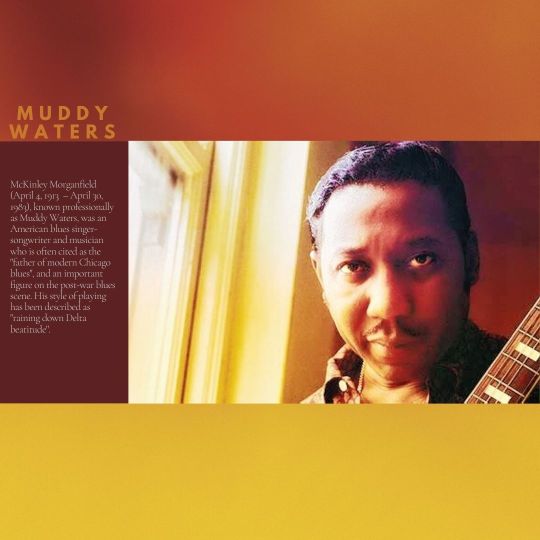
McKinley Morganfield (April 4, 1913 – April 30, 1983), known professionally as Muddy Waters, was an American blues singer-songwriter and musician who is often cited as the "father of modern Chicago blues", and an important figure on the post-war blues scene. His style of playing has been described as "raining down Delta beatitude".
Muddy Waters grew up on Stovall Plantation near Clarksdale, Mississippi, and by age 17 was playing the guitar and the harmonica, emulating the local blues artists Son House and Robert Johnson. He was recorded in Mississippi by Alan Lomax for the Library of Congress in 1941. In 1943, he moved to Chicago to become a full-time professional musician. In 1946, he recorded his first records for Columbia Records and then for Aristocrat Records, a newly formed label run by the brothers Leonard and Phil Chess.
In the early 1950s, Muddy Waters and his band—Little Walter Jacobs on harmonica, Jimmy Rogers on guitar, Elga Edmonds (also known as Elgin Evans) on drums and Otis Spann on piano—recorded several blues classics, some with the bassist and songwriter Willie Dixon. These songs included "Hoochie Coochie Man", "I Just Want to Make Love to You" and "I'm Ready". In 1958, he traveled to England, laying the foundations of the resurgence of interest in the blues there. His performance at the Newport Jazz Festival in 1960 was recorded and released as his first live album, At Newport 1960.
Muddy Waters' music has influenced various American music genres, including rock and roll and rock music.
Early life
Muddy Waters' birthplace and date are not conclusively known. He stated that he was born in Rolling Fork, Mississippi, in 1915, but other evidence suggests that he was born in Jug's Corner, in neighboring Issaquena County, in 1913. In the 1930s and 1940s, before his rise to fame, the year of his birth was reported as 1913 on his marriage license, recording notes, and musicians' union card. A 1955 interview in the Chicago Defender is the earliest in which he stated 1915 as the year of his birth, and he continued to say this in interviews from that point onward. The 1920 census lists him as five years old as of March 6, 1920, suggesting that his birth year may have been 1914. The Social Security Death Index, relying on the Social Security card application submitted after his move to Chicago in the mid-1940s, lists him as being born April 4, 1913. His gravestone gives his birth year as 1915.
His grandmother, Della Grant, raised him after his mother died shortly after his birth. Grant gave him the nickname "Muddy" at an early age because he loved to play in the muddy water of nearby Deer Creek. "Waters" was added years later, as he began to play harmonica and perform locally in his early teens. The remains of the cabin on Stovall Plantation where he lived in his youth are now at the Delta Blues Museum in Clarksdale, Mississippi.
He had his first introduction to music in church: "I used to belong to church. I was a good Baptist, singing in the church. So I got all of my good moaning and trembling going on for me right out of church," he recalled. By the time he was 17, he had purchased his first guitar. "I sold the last horse that we had. Made about fifteen dollars for him, gave my grandmother seven dollars and fifty cents, I kept seven-fifty and paid about two-fifty for that guitar. It was a Stella. The people ordered them from Sears-Roebuck in Chicago." He started playing his songs in joints near his hometown, mostly on a plantation owned by Colonel William Howard Stovall.
Career
Early career, 1941–1948
In August 1941, Alan Lomax went to Stovall, Mississippi, on behalf of the Library of Congress to record various country blues musicians. "He brought his stuff down and recorded me right in my house," Muddy recalled for Rolling Stone magazine, "and when he played back the first song I sounded just like anybody's records. Man, you don't know how I felt that Saturday afternoon when I heard that voice and it was my own voice. Later on he sent me two copies of the pressing and a check for twenty bucks, and I carried that record up to the corner and put it on the jukebox. Just played it and played it and said, 'I can do it, I can do it.'" Lomax came back in July 1942 to record him again. Both sessions were eventually released by Testament Records as Down on Stovall's Plantation. The complete recordings were reissued by Chess Records on CD as Muddy Waters: The Complete Plantation Recordings. The Historic 1941–42 Library of Congress Field Recordings in 1993 and remastered in 1997.
In 1943, Muddy Waters headed to Chicago with the hope of becoming a full-time professional musician. He later recalled arriving in Chicago as the single most momentous event in his life. He lived with a relative for a short period while driving a truck and working in a factory by day and performing at night. Big Bill Broonzy, then one of the leading bluesmen in Chicago, had Muddy Waters open his shows in the rowdy clubs where Broonzy played. This gave Muddy Waters the opportunity to play in front of a large audience. In 1944, he bought his first electric guitar and then formed his first electric combo. He felt obliged to electrify his sound in Chicago because, he said, "When I went into the clubs, the first thing I wanted was an amplifier. Couldn't nobody hear you with an acoustic." His sound reflected the optimism of postwar African Americans. Willie Dixon said that "There was quite a few people around singing the blues but most of them was singing all sad blues. Muddy was giving his blues a little pep."
Three years later, in 1946, he recorded some songs for Mayo Williams at Columbia Records, with an old-fashioned combo consisting of clarinet, saxophone and piano; they were released a year later with Ivan Ballen's Philadelphia-based 20th Century label, billed as James "Sweet Lucy" Carter and his Orchestra - Muddy Waters' name was not mentioned on the label. Later that year, he began recording for Aristocrat Records, a newly formed label run by the brothers Leonard and Phil Chess. In 1947, he played guitar with Sunnyland Slim on piano on the cuts "Gypsy Woman" and "Little Anna Mae". These were also shelved, but in 1948, "I Can't Be Satisfied" and "I Feel Like Going Home" became hits, and his popularity in clubs began to take off. Soon after, Aristocrat changed its name to Chess Records. Muddy Waters's signature tune "Rollin' Stone" also became a hit that year.
Commercial success, 1948–1957
Initially, the Chess brothers would not allow Muddy Waters to use his working band in the recording studio; instead, he was provided with a backing bass by Ernest "Big" Crawford or by musicians assembled specifically for the recording session, including "Baby Face" Leroy Foster and Johnny Jones. Gradually, Chess relented, and by September 1953 he was recording with one of the most acclaimed blues groups in history: Little Walter Jacobs on harmonica, Jimmy Rogers on guitar, Elga Edmonds (also known as Elgin Evans) on drums, and Otis Spann on piano. The band recorded a series of blues classics during the early 1950s, some with the help of the bassist and songwriter Willie Dixon, including "Hoochie Coochie Man", "I Just Want to Make Love to You", and "I'm Ready"
Waters's band became a proving ground for some of the city's best blues talent, with members of the ensemble going on to successful careers of their own. In 1952, Little Walter left when his single "Juke" became a hit, although he continued a collaborative relationship long after he left Waters's band, appearing on most of the band's classic recordings in the 1950s. Howlin' Wolf moved to Chicago in 1954 with financial support earned through his successful Chess singles, and the "legendary rivalry" with Waters began. The rivalry was, in part, stoked by Willie Dixon providing songs to both artists, with Wolf suspecting that Waters was getting Dixon's best songs. 1955 saw the departure of Jimmy Rogers, who quit to work exclusively with his own band, which had been a sideline until that time.
During the mid-1950s, Muddy Waters' singles were frequently on Billboard magazine's various Rhythm & Blues charts including "Sugar Sweet" in 1955 and "Trouble No More", "Forty Days and Forty Nights", and "Don't Go No Farther" in 1956. 1956 also saw the release of one of his best-known numbers, "Got My Mojo Working", although it did not appear on the charts. However, by the late 1950s, his singles success had come to an end, with only "Close to You" reaching the chart in 1958. Also in 1958, Chess released Muddy Waters' first compilation album, The Best of Muddy Waters, which collected twelve of his singles up to 1956.
Performances and crossover, 1958–1970
Muddy toured England with Spann in 1958, where they were backed by local Dixieland-style or "trad jazz" musicians, including members of Chris Barber's band. At the time, English audiences had only been exposed to acoustic folk blues, as performed by artists such as Sonny Terry, Brownie McGhee, and Big Bill Broonzy. Both the musicians and audiences were unprepared for Muddy Waters' performance, which included his electric slide guitar playing. He recalled:
They thought I was a Big Bill Broonzy [but] I wasn't. I had my amplifier and Spann and I was going to do a Chicago thing. We opened up in Leeds, England. I was definitely too loud for them. The next morning we were in the headlines of the paper, 'Screaming Guitar and Howling Piano'.
Although his performances alienated the old guard, some younger musicians, including Alexis Korner and Cyril Davies from Barber's band, were inspired to go in the more modern, electric blues direction. Korner and Davies' own groups included musicians who would later form the Rolling Stones (named after Muddy's 1950 hit "Rollin' Stone"), Cream, and the original Fleetwood Mac.
In the 1960s, Muddy Waters' performances continued to introduce a new generation to Chicago blues. At the Newport Jazz Festival, he recorded one of the first live blues albums, At Newport 1960, and his performance of "Got My Mojo Working" was nominated for a Grammy award. In September 1963, in Chess' attempt to connect with folk music audiences, Muddy Waters recorded Folk Singer, which replaced his trademark electric guitar sound with an acoustic band, including a then-unknown Buddy Guy on acoustic guitar. Folk Singer was not a commercial success, but it was lauded by critics, and in 2003 Rolling Stone magazine placed it at number 280 on its list of the 500 greatest albums of all time. In October 1963, Muddy Waters participated in the first of several annual European tours, organized as the American Folk Blues Festival, during which he also performed more acoustic-oriented numbers.
In 1967, he re-recorded several blues standards with Bo Diddley, Little Walter, and Howlin' Wolf, which were marketed as Super Blues and The Super Super Blues Band albums in Chess' attempt to reach a rock audience. The Super Super Blues Band, bringing together both Wolf and Waters, who had a long-standing rivalry, was, as Ken Chang wrote in his AllMusic review, flooded with "contentious studio banter [...] more entertaining than the otherwise unmemorable music from this stylistic train wreck". In 1968, at the instigation of Marshall Chess, Muddy Waters recorded Electric Mud, an album intended to revive his career by backing him with Rotary Connection, a psychedelic soul band that Chess had put together. The album proved controversial; although it reached number 127 on the Billboard 200 album chart, it was scorned by many critics, and eventually disowned by Muddy himself:
That Electric Mud record I did, that one was dogshit. But when it first came out, it started selling like wild, and then they started sending them back. They said, "This can't be Muddy Waters with all this shit going on – all this wow-wow and fuzztone."
Nonetheless, six months later Muddy Waters recorded a follow-up album, After the Rain, which had a similar sound and featured many of the same musicians.
Later in 1969, Muddy Waters recorded and released the album Fathers and Sons, which featured a return to his classic Chicago blues sound. Fathers and Sons had an all-star backing band that included Michael Bloomfield and Paul Butterfield, longtime fans whose desire to play with him was the impetus for the album. It was the most successful album of Muddy Waters' career, reaching number 70 on the Billboard 200.
Resurgence and later career, 1971–1982
In 1971, a show at Mister Kelly's, an upmarket Chicago nightclub, was recorded and released, signalling both Muddy's return to form and the completion of his transfer to white audiences.
In 1972, he won his first Grammy Award, for Best Ethnic or Traditional Recording for They Call Me Muddy Waters, a 1971 album of old, but previously unreleased recordings.
Later in 1972, he flew to England to record the album The London Muddy Waters Sessions. The album was a follow-up to the previous year's The London Howlin' Wolf Sessions. Both albums were the brainchild of Chess Records producer Norman Dayron, and were intended to showcase Chicago blues musicians playing with the younger British rock musicians whom they had inspired. Muddy Waters brought with him two American musicians, harmonica player Carey Bell and guitarist Sammy Lawhorn. The British and Irish musicians who played on the album included Rory Gallagher, Steve Winwood, Rick Grech, and Mitch Mitchell. Muddy Waters was dissatisfied by the results, due to the British musicians' more rock-oriented sound. "These boys are top musicians, they can play with me, put the book before 'em and play it, you know," he told Guralnick. "But that ain't what I need to sell my people, it ain't the Muddy Waters sound. An' if you change my sound, then you gonna change the whole man." He stated, "My blues look so simple, so easy to do, but it's not. They say my blues is the hardest blues in the world to play." Nevertheless, the album won another Grammy, again for Best Ethnic or Traditional Recording.
He won another Grammy for his last LP on Chess Records: The Muddy Waters Woodstock Album, recorded in 1975 with his new guitarist Bob Margolin, Pinetop Perkins, Paul Butterfield, and Levon Helm and Garth Hudson of the Band. In November 1976 he appeared as a featured special guest at The Band's Last Waltz farewell concert, and in the subsequent 1978 feature film documentary of the event.
From 1977 to 1981, blues musician Johnny Winter, who had idolized Muddy Waters since childhood, produced four albums of his, all on the Blue Sky Records label: the studio albums Hard Again (1977), I'm Ready (1978) and King Bee (1981), and the live album Muddy "Mississippi" Waters – Live (1979). The albums were critical and commercial successes, with all but King Bee winning a Grammy. Hard Again has been especially praised by critics, who have tended to describe it as Muddy Waters' comeback album.
In 1981, Muddy Waters was invited to perform at ChicagoFest, the city's top outdoor music festival. He was joined onstage by Johnny Winter and Buddy Miles, and played classics like "Mannish Boy", "Trouble No More", and "Mojo Working" to a new generation of fans. The performance was made available on DVD in 2009 by Shout! Factory. On November 22, he performed live with three members of British rock band the Rolling Stones (Mick Jagger, Keith Richards & Ronnie Wood) at the Checkerboard Lounge, a blues club in Bronzeville, on the South Side of Chicago, which was established in 1972 by Buddy Guy and L.C. Thurman. A DVD version of the performance was released in 2012.
In 1982, declining health dramatically stopped his performance schedule. His last public performance took place when he sat in with Eric Clapton's band at a concert in Florida in the summer of 1982.
Personal life
Muddy Waters and his longtime wife, Geneva Wade (a first cousin of R. L. Burnside) were married in Lexington, Mississippi, in 1940. She died of cancer on March 15, 1973. Gaining custody of two of his children, Rosalind and Renee, he moved them into his home, eventually buying a new house in Westmont, Illinois. Years later, he travelled to Florida and met his future wife, 19-year-old Marva Jean Brooks, whom he nicknamed "Sunshine". Eric Clapton served as best man at their wedding in 1979.
His sons, Larry "Mud" Morganfield and Big Bill Morganfield, are also blues singers and musicians. In 2017, his younger son, Joseph "Mojo" Morganfield, began publicly performing the blues, occasionally with his brothers.
Death
Muddy Waters died in his sleep from heart failure, at his home in Westmont, Illinois, on April 30, 1983, from cancer-related complications. He was transported from his Westmont home, which he lived in for the last decade of his life, to Good Samaritan Hospital in Downers Grove, Illinois. There he was pronounced dead at the age of 70. The funeral service was held on May 4, 1983. Throngs of blues musicians and fans attended his funeral at Restvale Cemetery in Alsip, Illinois. Muddy Waters is buried next to his wife, Geneva.
After his death, a lengthy legal battle ensued between Muddy Waters' heirs and Scott Cameron, his former manager. In 2010, Muddy Waters' heir was petitioning for the courts to appoint Mercy Morganfield, his daughter, as administrator and distribute remaining assets, which mainly consists of copyrights to his music. The petition to reopen the estate was successful. In May 2018, the heirs' lawyer sought to hold Scott Cameron's wife in contempt for diverting royalty income. However, the heirs asked for that citation not to be pursued. The next court date was set for July 10, 2018.
Legacy
Two years after his death, the city of Chicago paid tribute to Muddy Waters by designating the one-block section between 900 and 1000 East 43rd Street near his former home on the south side "Honorary Muddy Waters Drive". In 2017, a ten stories-mural commissioned as a part of the Chicago Blues Festival and designed by Brazilian artist Eduardo Kobra was painted on the side of the building at 17 North State Street, at the corner of State and Washington Streets.The Chicago suburb of Westmont, where Muddy Waters lived the last decade of his life, named a section of Cass Avenue near his home "Honorary Muddy Waters Way".
In 2008, a Mississippi Blues Trail marker has been placed in Clarksdale, Mississippi, by the Mississippi Blues Commission designating the site of Muddy Waters' cabin. He also received a plaque on the Clarksdale Walk of Fame.
On June 25, 2019, The New York Times Magazine listed Muddy Waters among hundreds of artists whose material was reportedly destroyed in the 2008 Universal fire.
Influence
The British band The Rolling Stones named themselves after Muddy Waters' 1950 song "Rollin' Stone". Jimi Hendrix recalled that "the first guitar player I was aware of was Muddy Waters. I first heard him as a little boy and it scared me to death". The band Cream covered "Rollin' and Tumblin'" on their 1966 debut album, Fresh Cream. Eric Clapton was a big fan of Muddy Waters while growing up, and his music influenced Clapton's music career. The song was also covered by Canned Heat at the Monterey Pop Festival and later adapted by Bob Dylan on his album Modern Times. One of Led Zeppelin's biggest hits, "Whole Lotta Love", is based on the Muddy Waters hit "You Need Love" (written by Willie Dixon). "Hoochie Coochie Man", was covered by Allman Brothers Band, Humble Pie, Steppenwolf, Supertramp and Fear. In 1993, Paul Rodgers released the album Muddy Water Blues: A Tribute to Muddy Waters, on which he covered a number of Muddy Waters songs, including "Louisiana Blues", "Rollin' Stone", "(I'm your) Hoochie Coochie Man" and "I'm Ready" in collaboration with guitarists such as Gary Moore, Brian May and Jeff Beck. Angus Young, of the rock group AC/DC, has cited Muddy Waters as one of his influences. The AC/DC song title "You Shook Me All Night Long" came from lyrics of the Muddy Waters song "You Shook Me", written by Willie Dixon and J. B. Lenoir. Earl Hooker first recorded it as an instrumental, which was then overdubbed with vocals by Muddy Waters in 1962. Led Zeppelin also covered it on their debut album.
In 1981 ZZ Top guitarist Billy Gibbons went to visit the Delta Blues Museum in Clarksdale with The Blues magazine founder Jim O'Neal. The museum's director, Sid Graves, brought Gibbons to visit Muddy Waters original house, and encouraged him to pick up a piece of scrap lumber that was originally part of the roof. Gibbons eventually converted the wood into a guitar. Named Muddywood, the instrument is now exhibited at the Delta Blues Museum in Clarksdale.
Following his death, fellow blues musician B.B. King told Guitar World magazine, "It's going to be years and years before most people realize how greatly he contributed to American music." John P. Hammond told Guitar World magazine, "Muddy was a master of just the right notes. It was profound guitar playing, deep and simple... more country blues transposed to the electric guitar, the kind of playing that enhanced the lyrics, gave profundity to the words themselves."
Muddy Waters' songs have been featured in long-time fan Martin Scorsese's movies, including The Color of Money, Goodfellas, and Casino. Muddy Waters' 1970s recording of his mid-'50s hit "Mannish Boy" was used in the films Goodfellas, Better Off Dead, Risky Business, and the rockumentary The Last Waltz. In 1988 "Mannish Boy" was also used in a Levi's 501 commercial and re-released in Europe as a single with "(I'm your) Hoochie Coochie Man" on the flip side.
Awards and recognition
Grammy AwardsRock and Roll Hall of Fame
The Rock and Roll Hall of Fame listed four songs of Muddy Waters among the 500 Songs That Shaped Rock and Roll.
Blues Foundation AwardsInductions
U.S. Postage Stamp
Discography
Studio albums
Muddy Waters Sings "Big Bill" (Chess, 1960)
Folk Singer (Chess, 1964)
Muddy, Brass & the Blues (Chess, 1966)
Electric Mud (Cadet, 1968)
After the Rain (Cadet, 1969)
Fathers and Sons (Chess, 1969)
The London Muddy Waters Sessions (Chess, 1972)
Can't Get No Grindin' (Chess, 1973)
"Unk" in Funk (Chess, 1974)
The Muddy Waters Woodstock Album (Chess, 1975)
Hard Again (Blue Sky, 1977)
I'm Ready (Blue Sky, 1978)
King Bee (Blue Sky, 1981)
3 notes
·
View notes
Link
Twitter https://twitter.com/dgold post: @goldlikejoel @Nikres developing into an awesome thread. I 💛 a good band list compiled and curated during Tour times. #RadioCharts Also hot right now w degrees of nodding to jam Gary Clark Jr, Nicole Atkins, Robert Walter 20th Congress, Lotus, Margo Price, Guadalupe Plata, Marcus King Band, Bèla+AW.. https://t.co/SyOrDVJ3Ww
0 notes